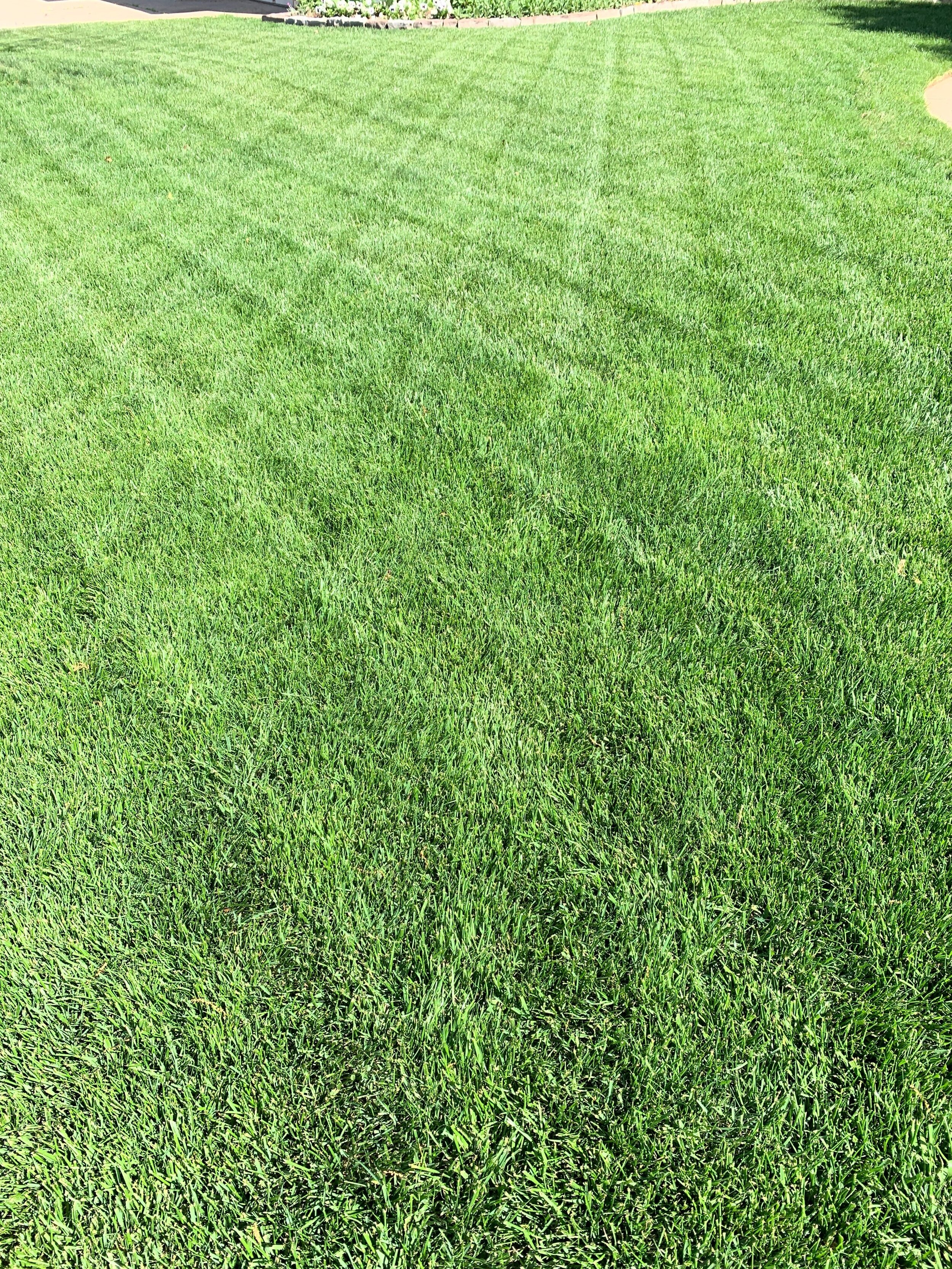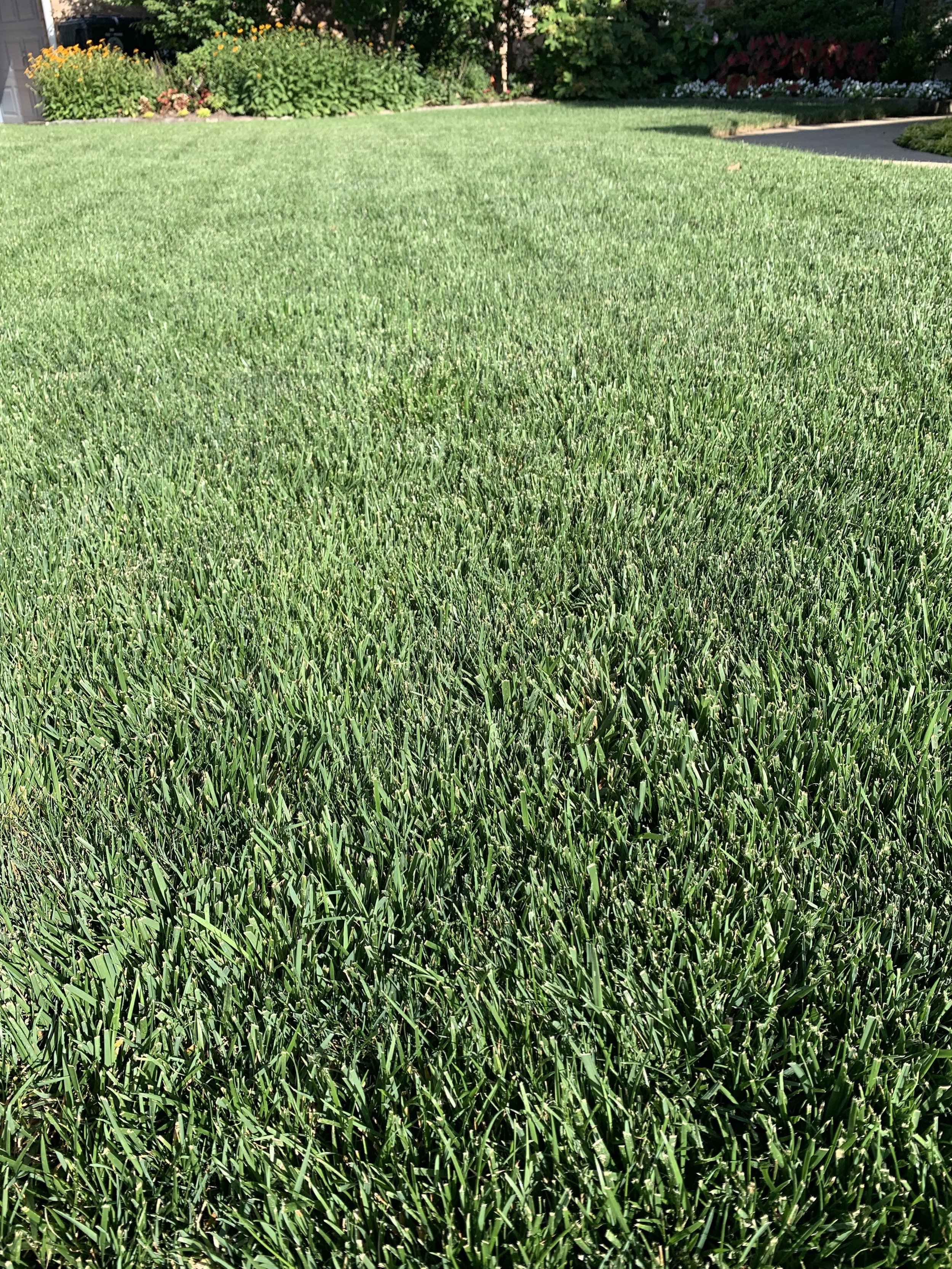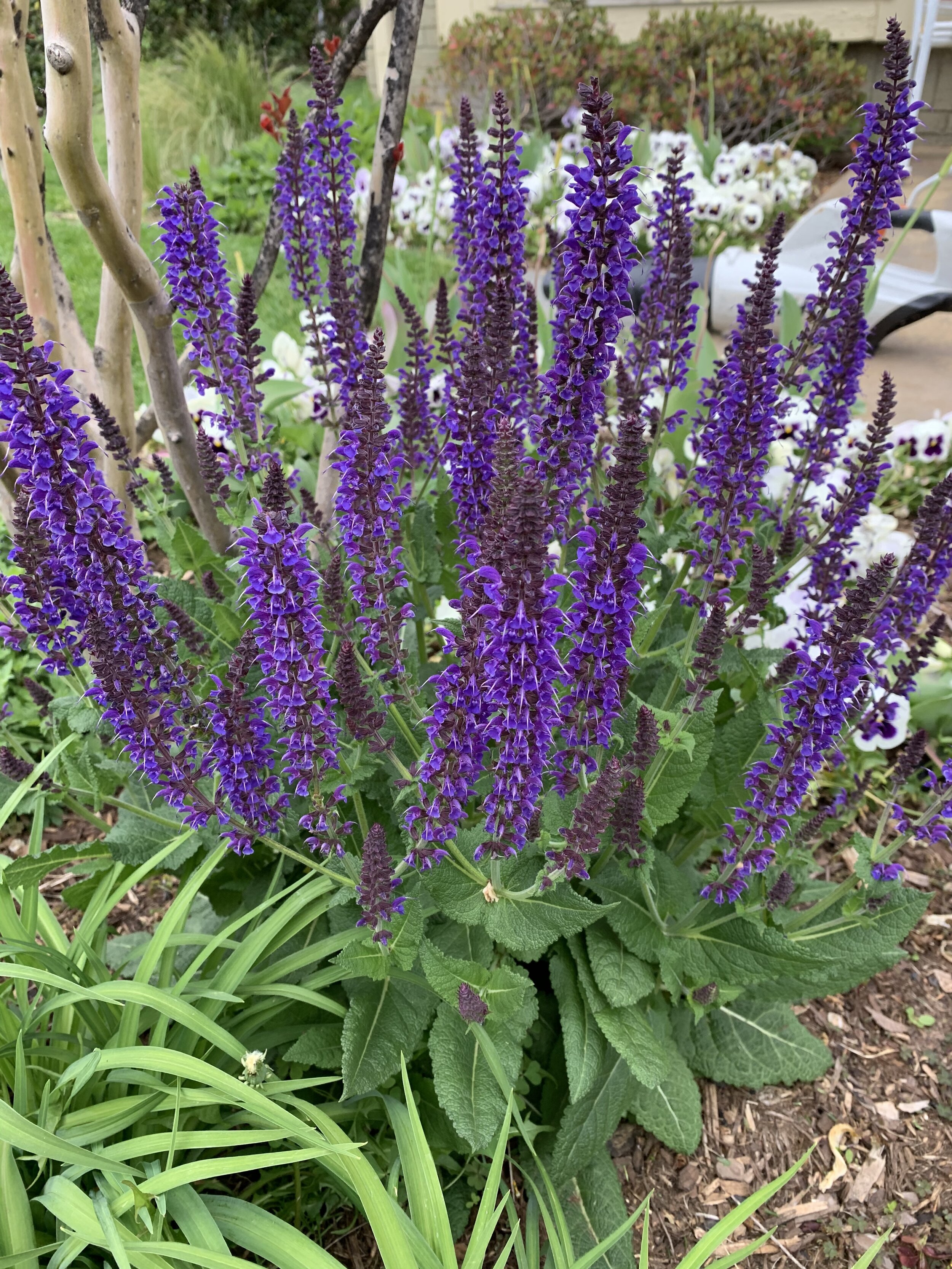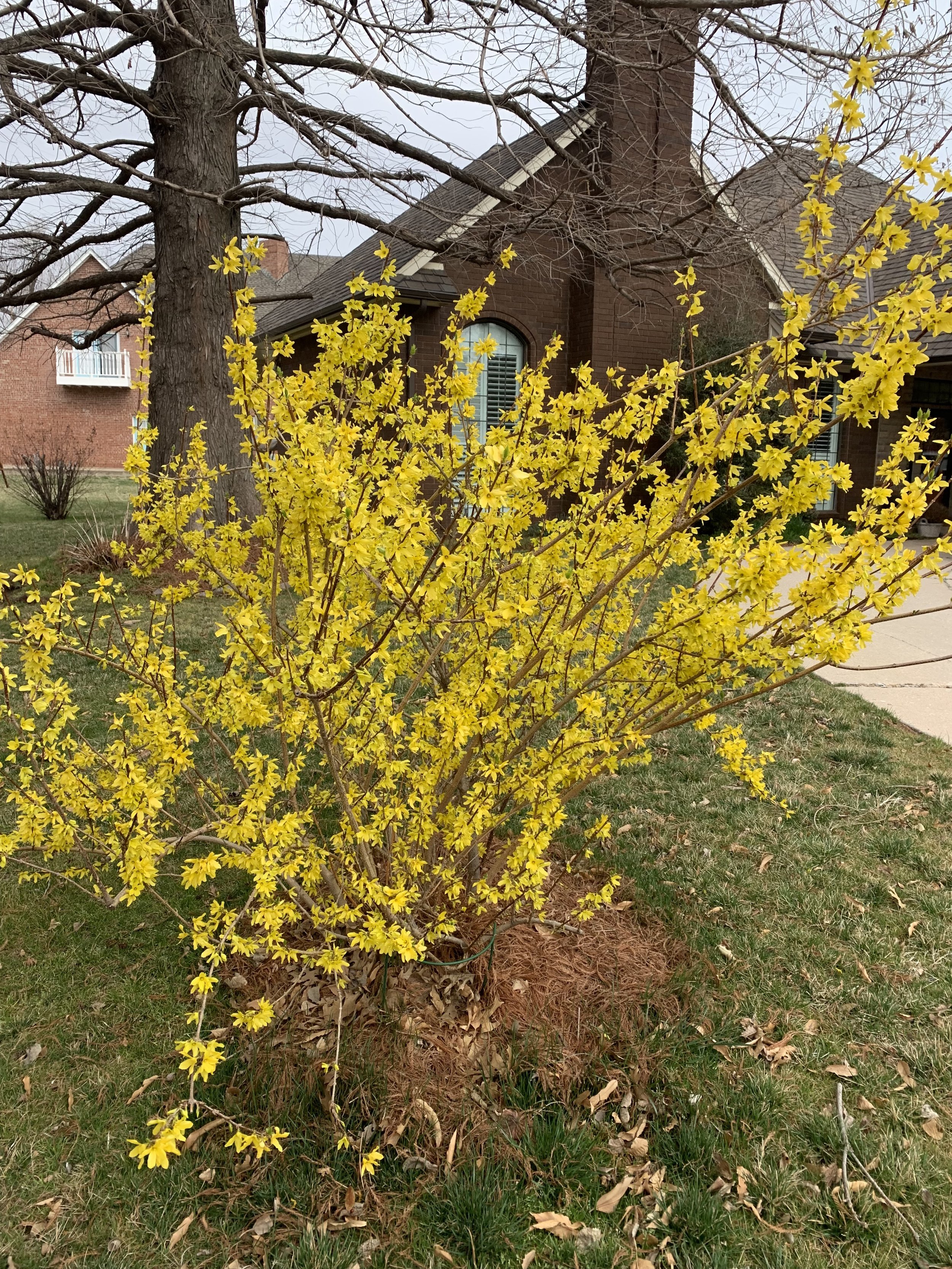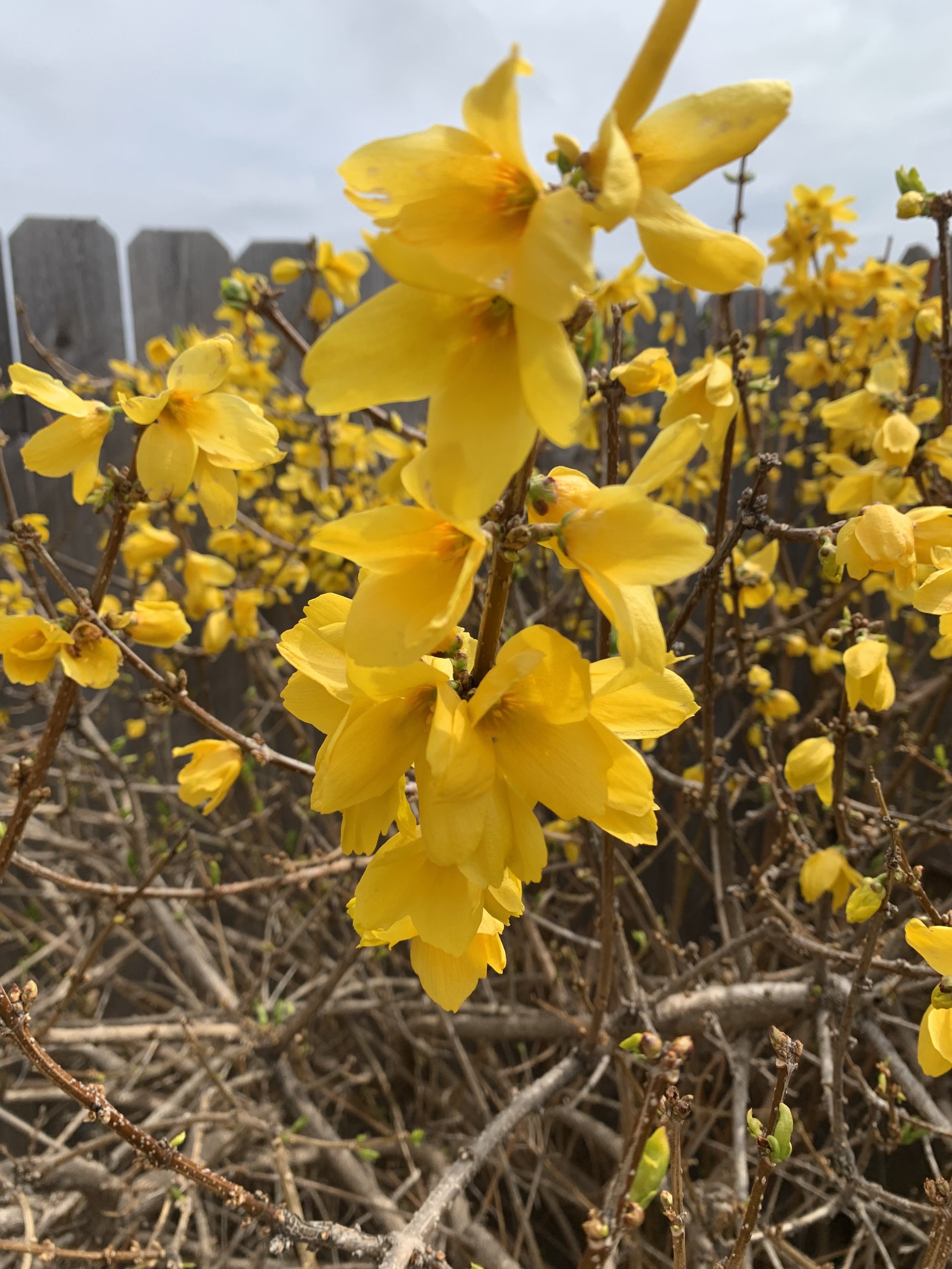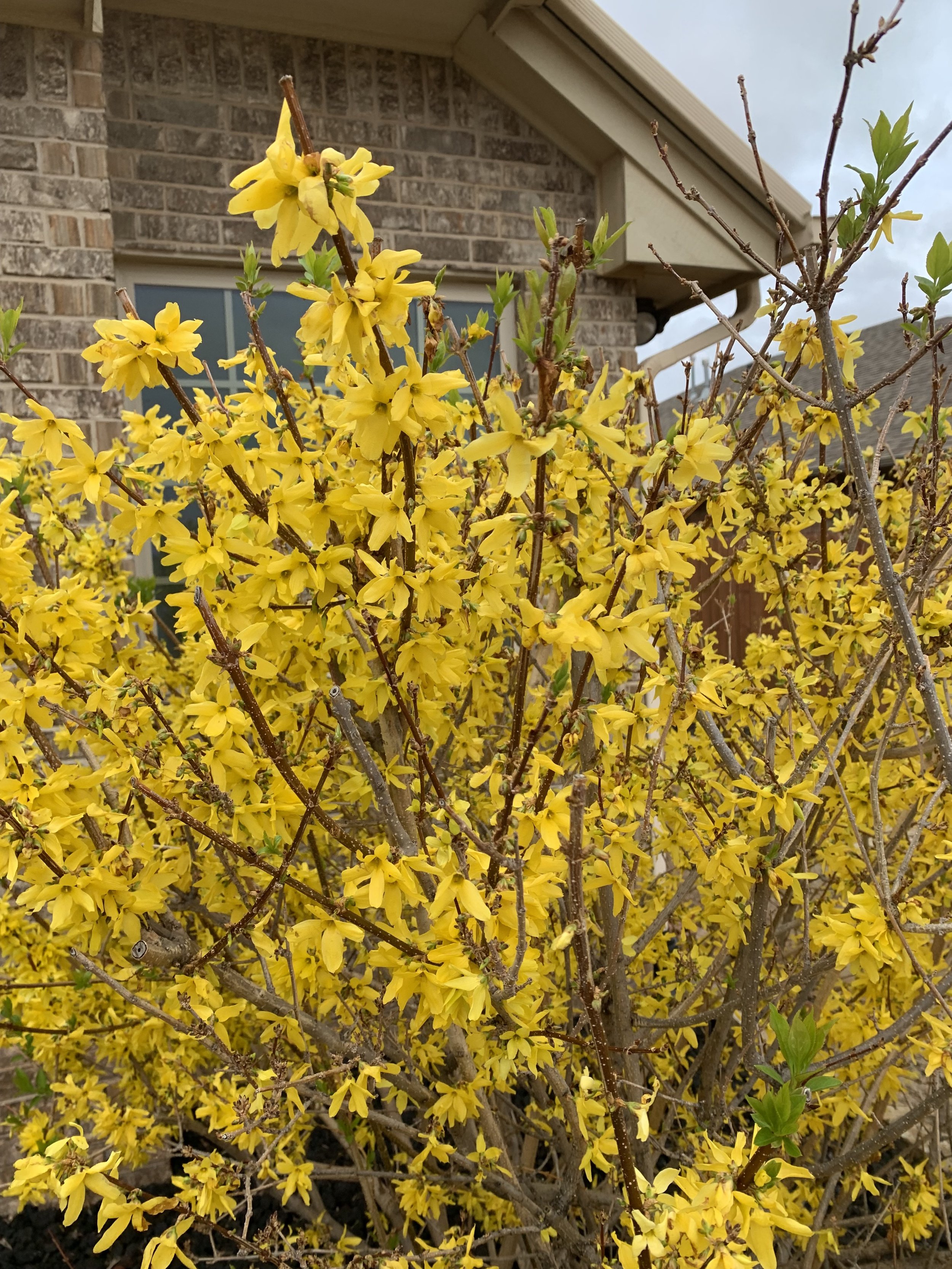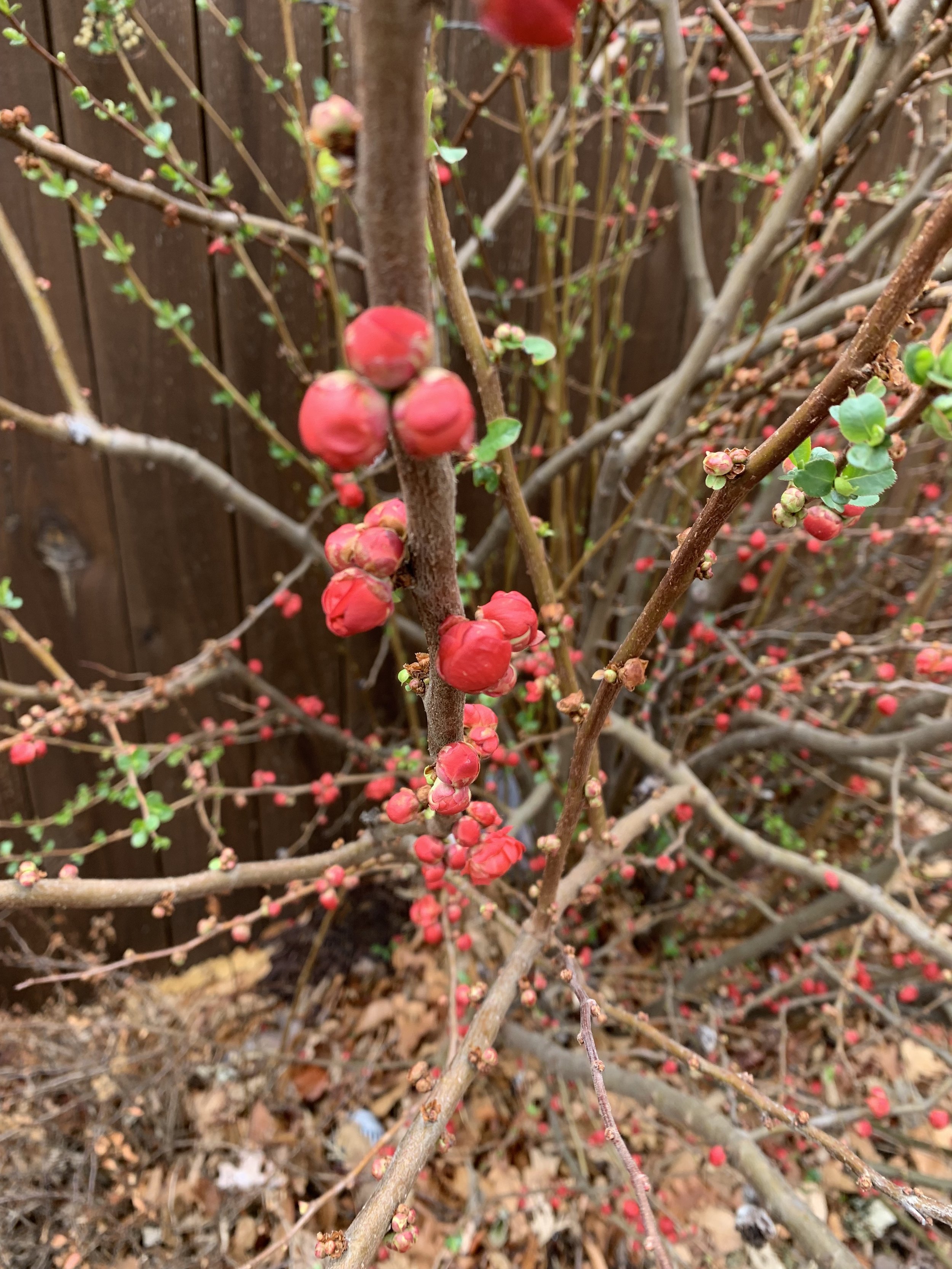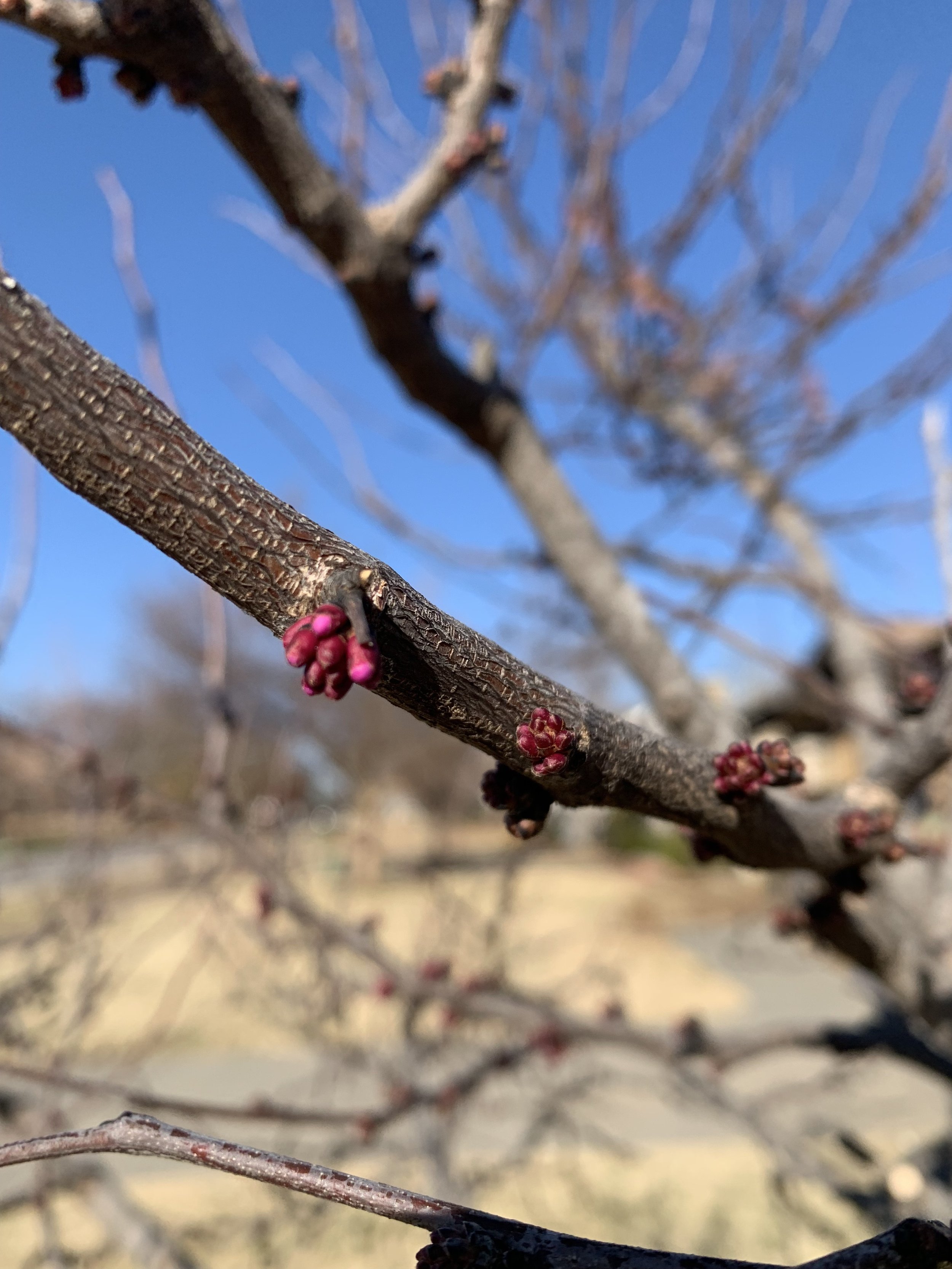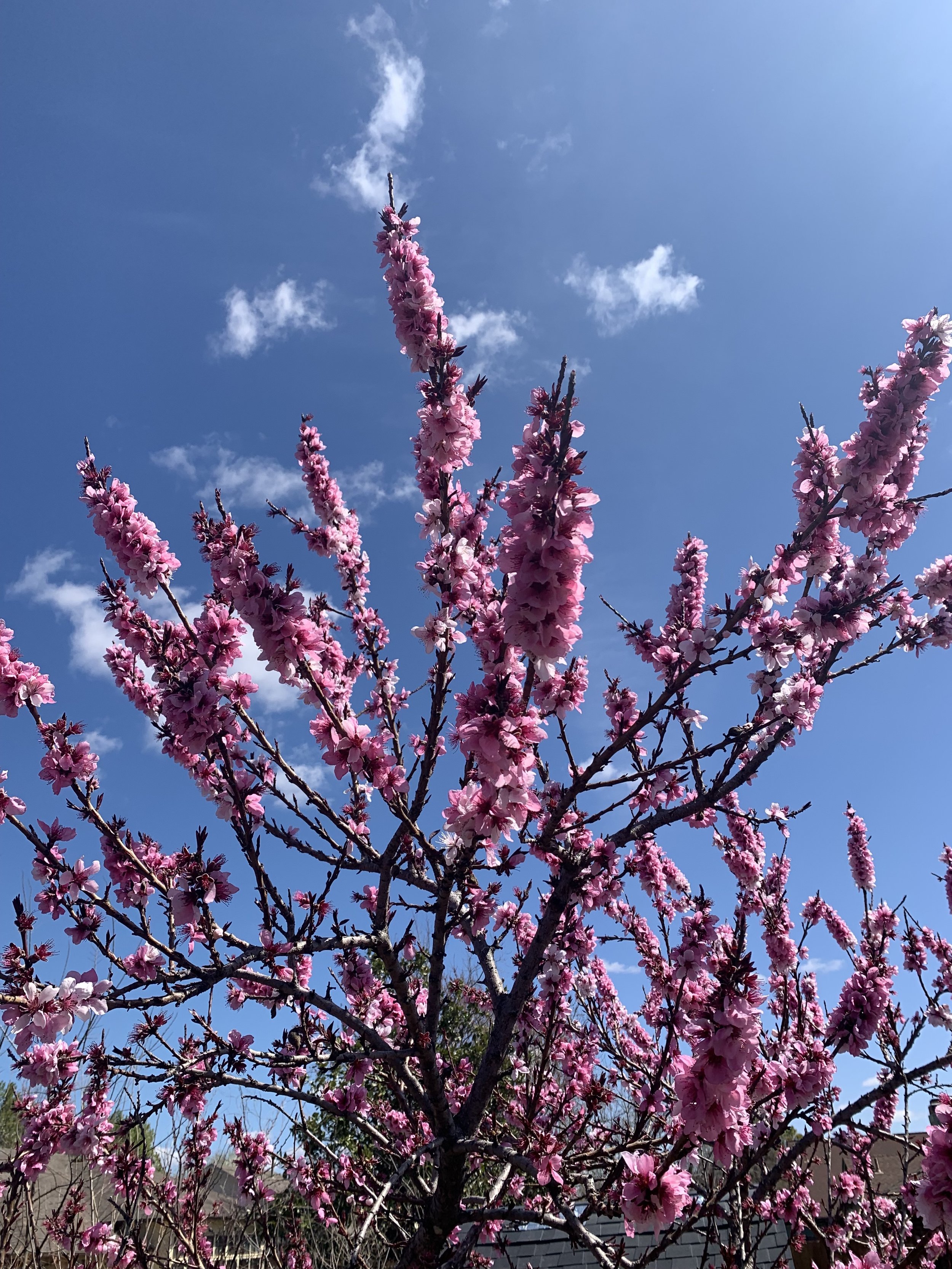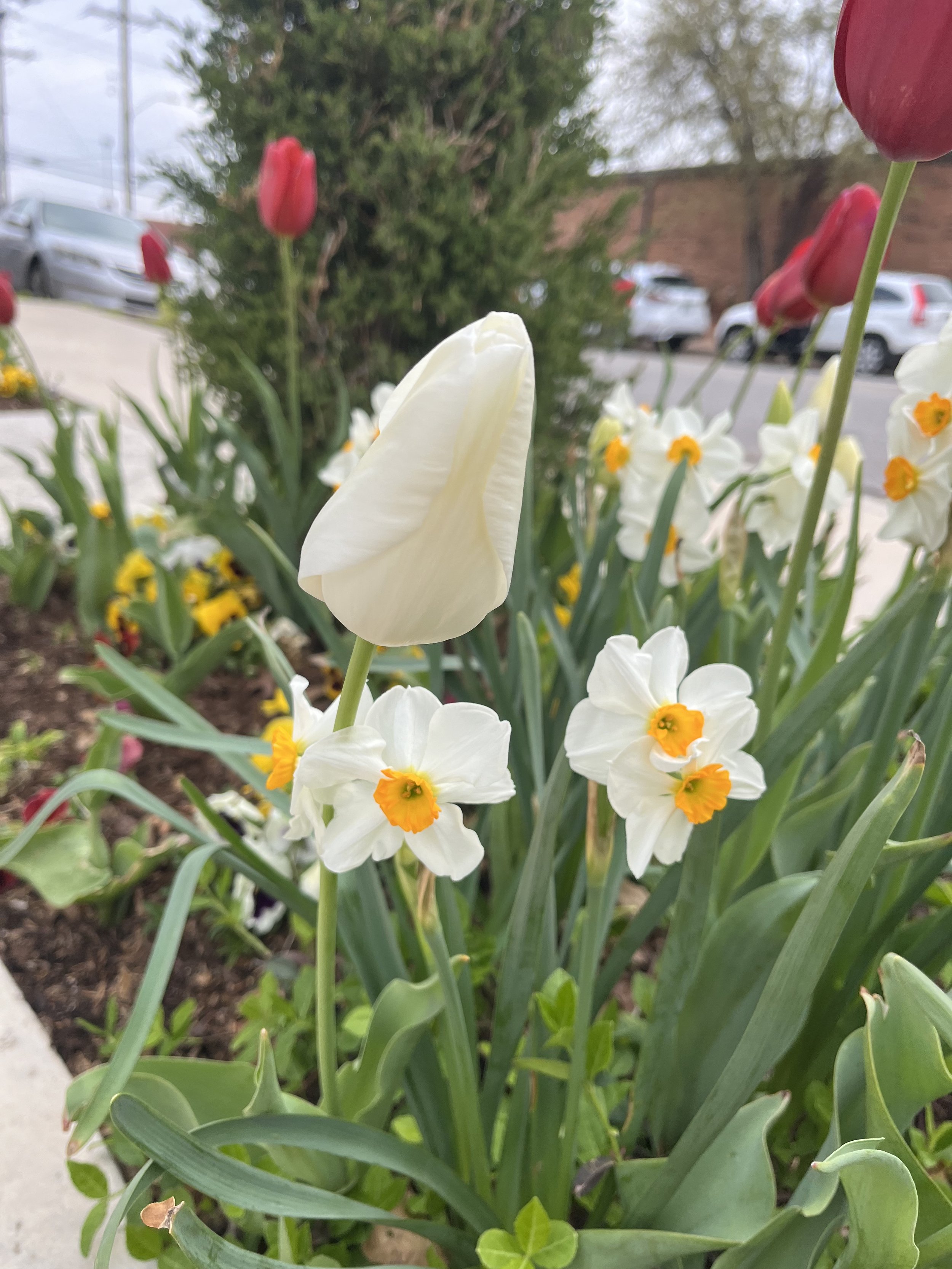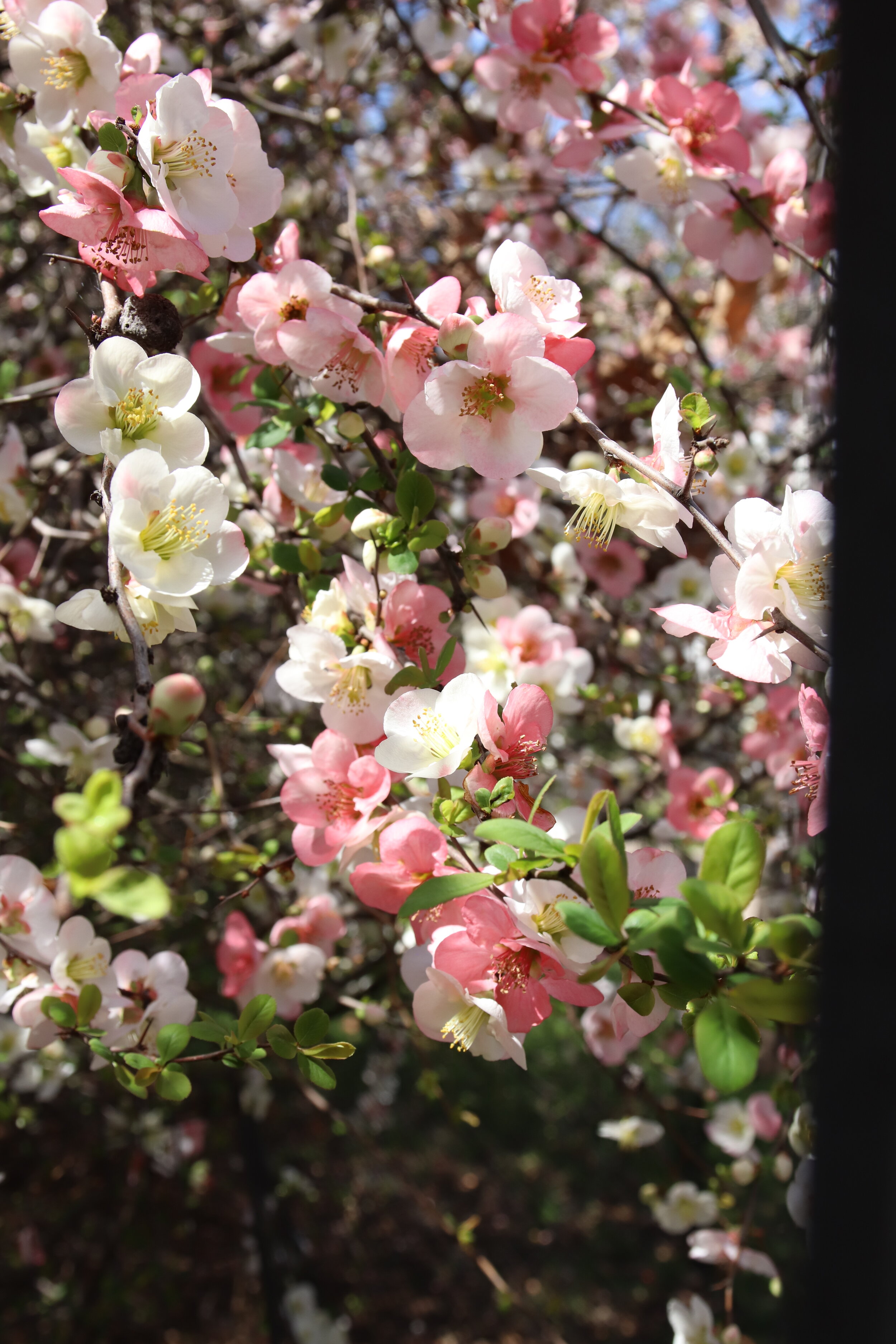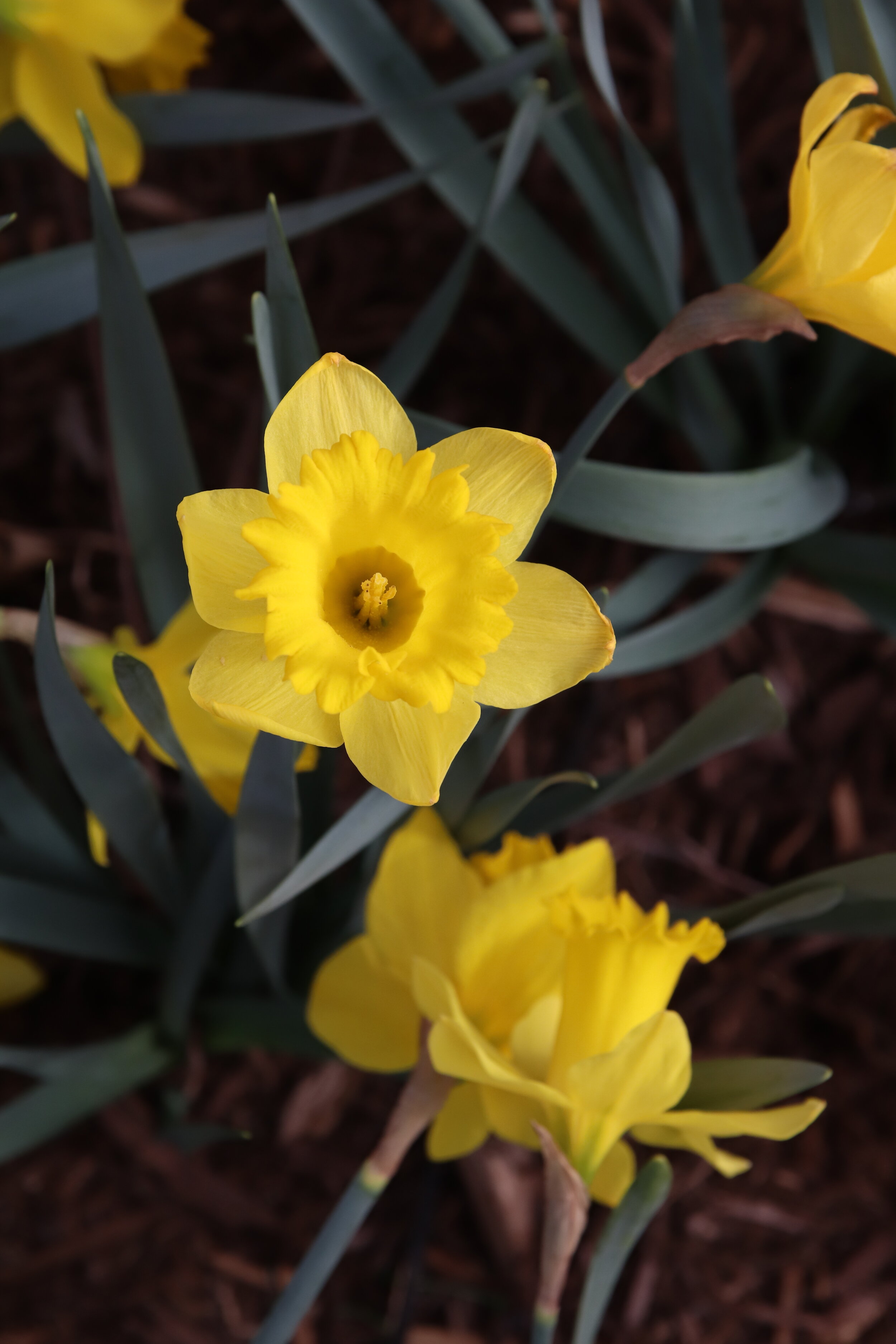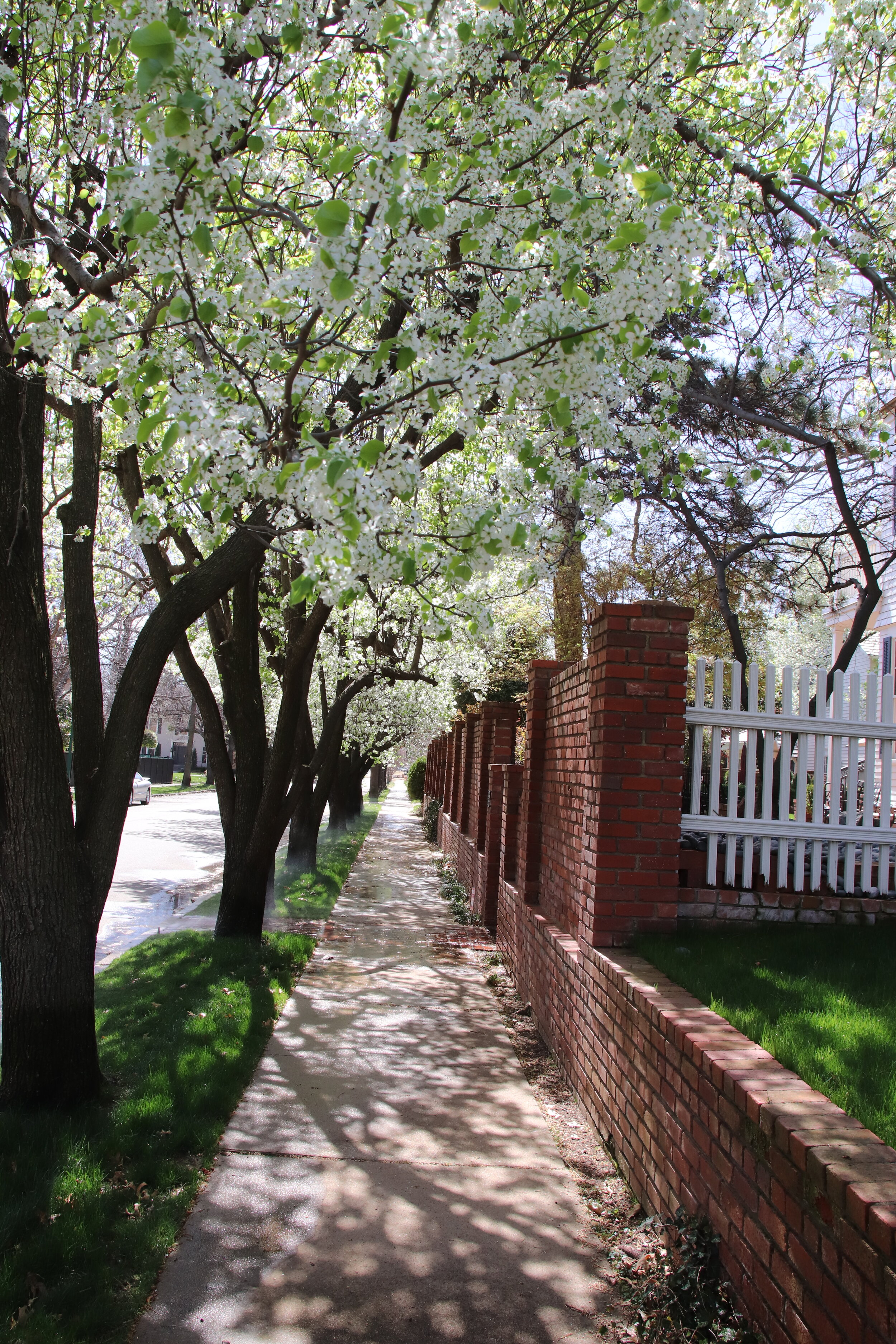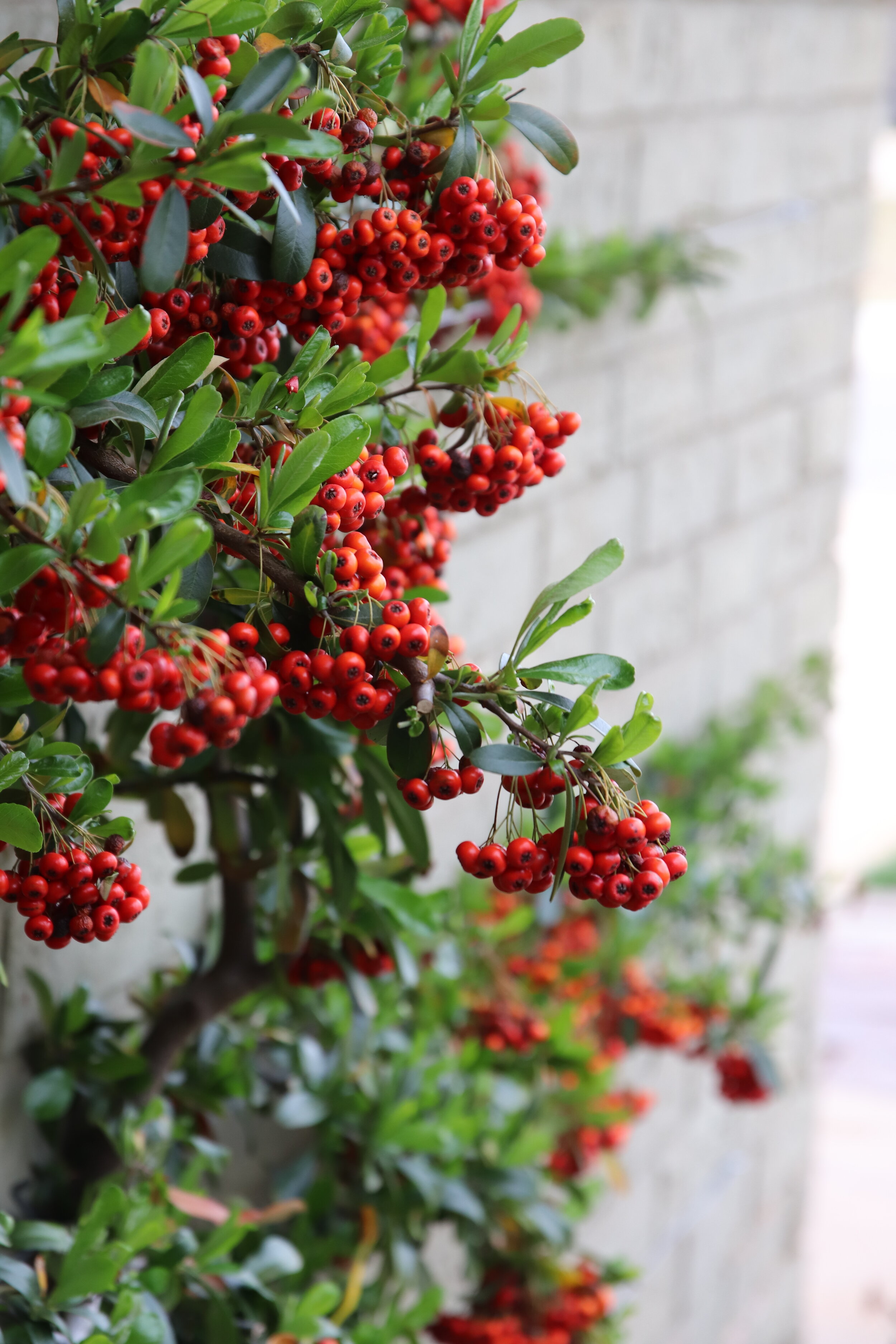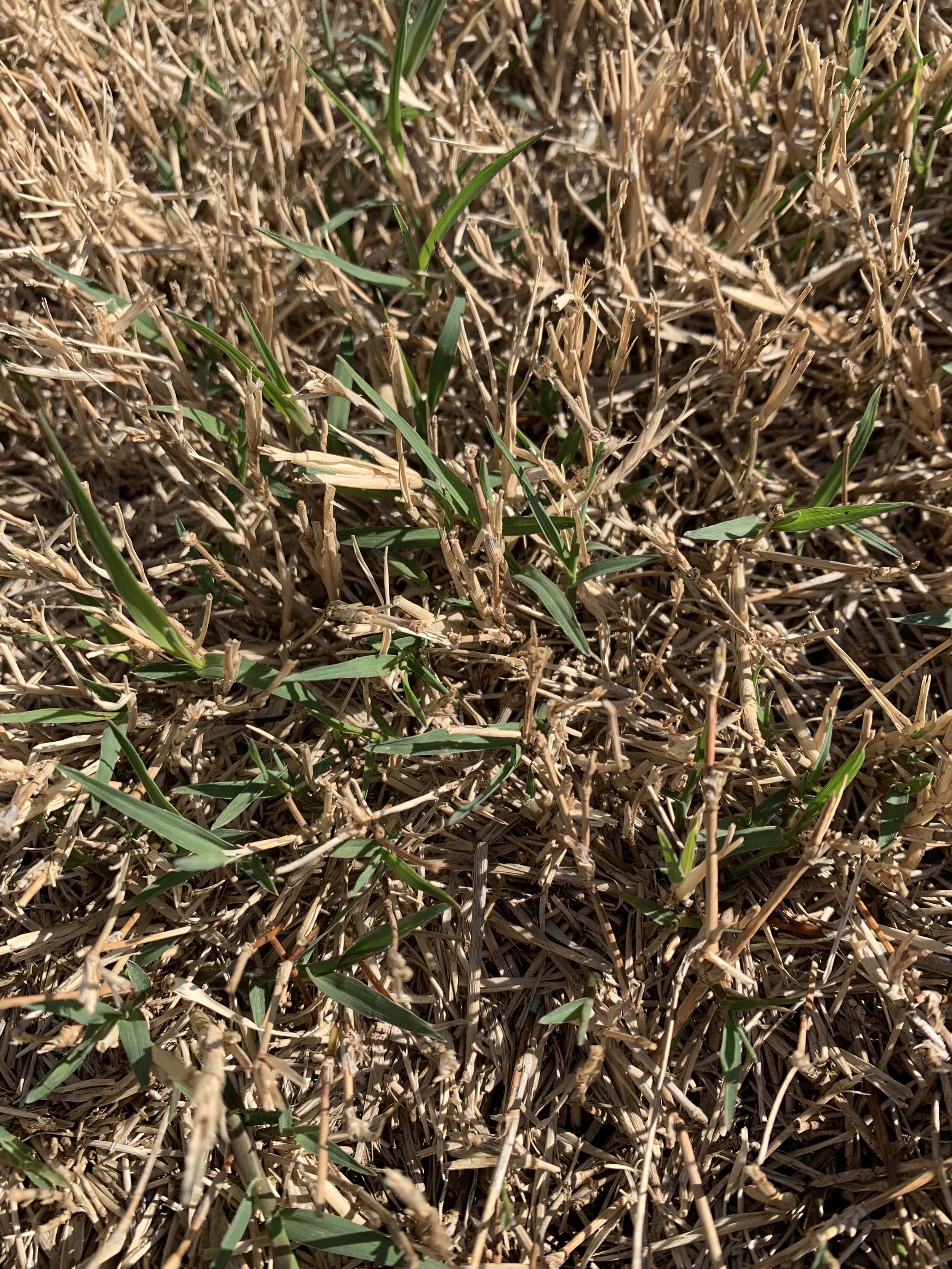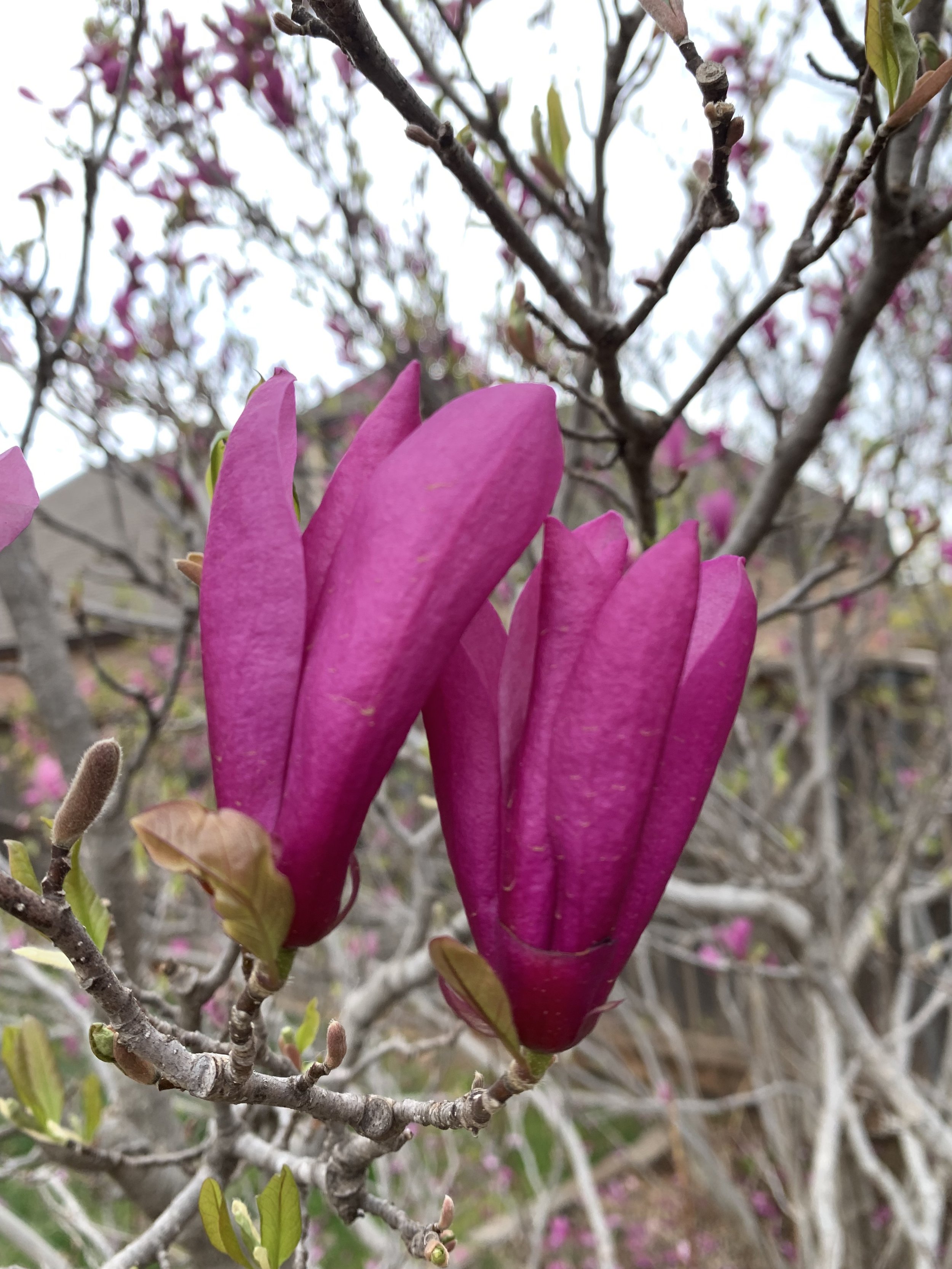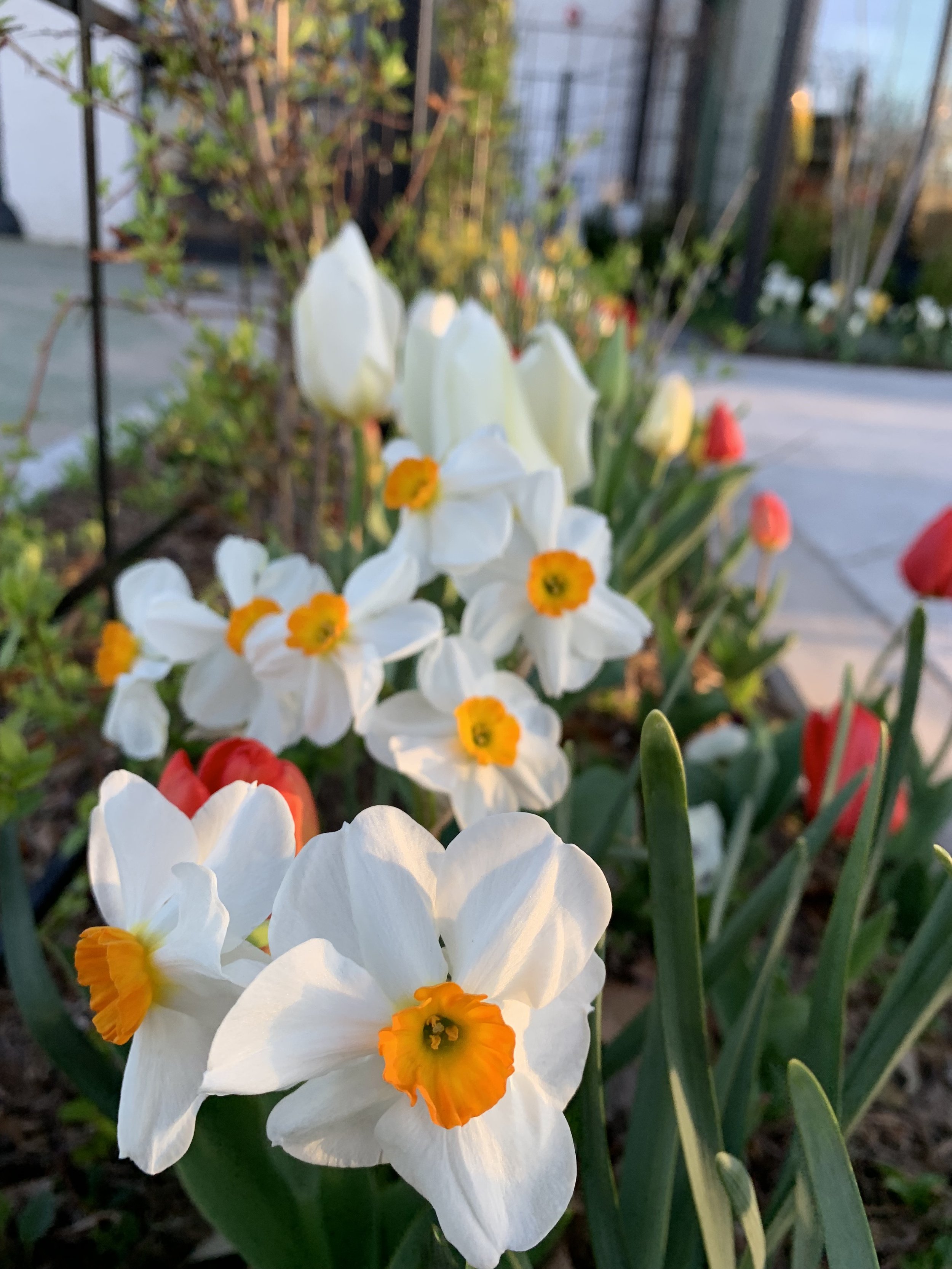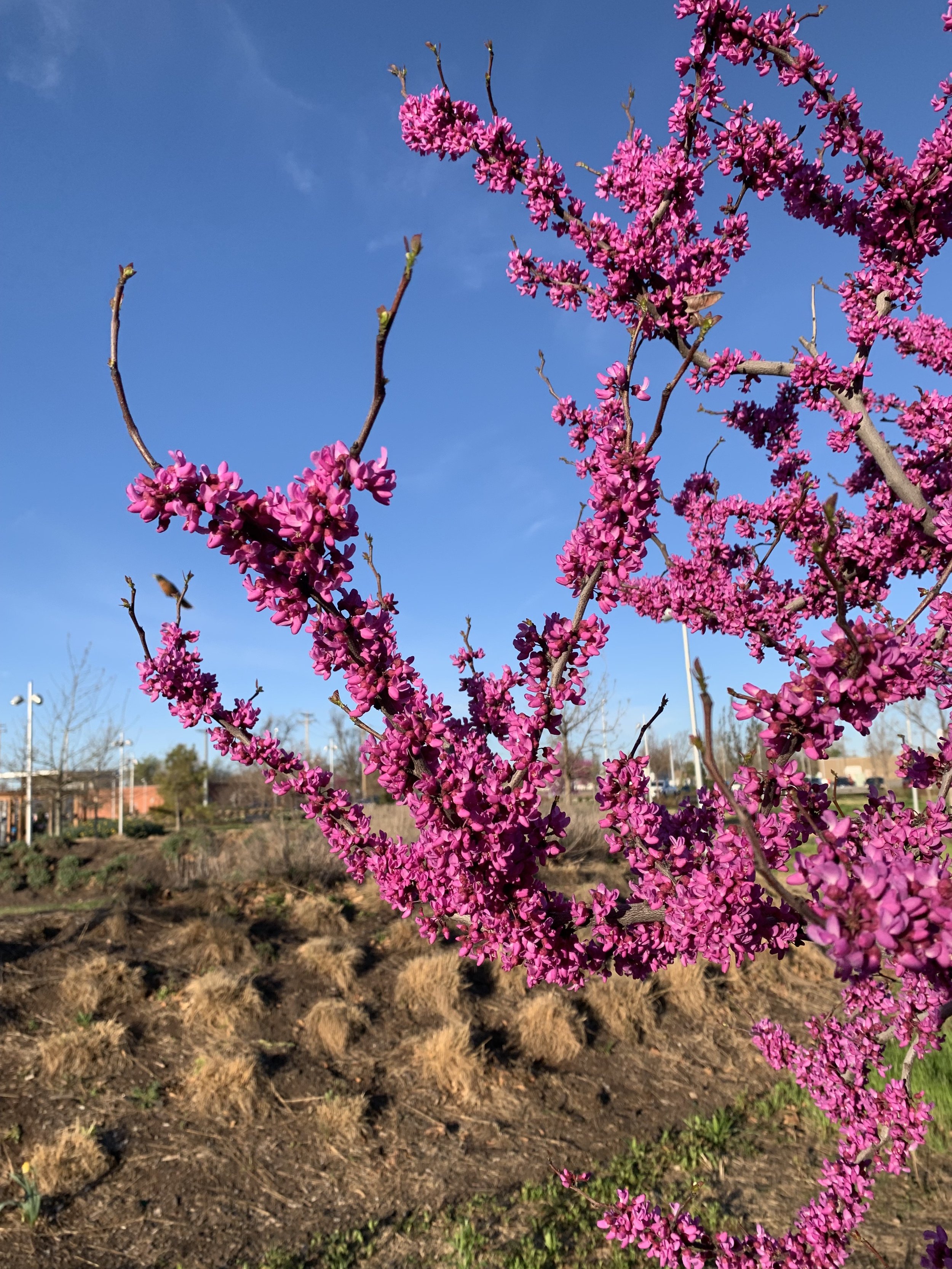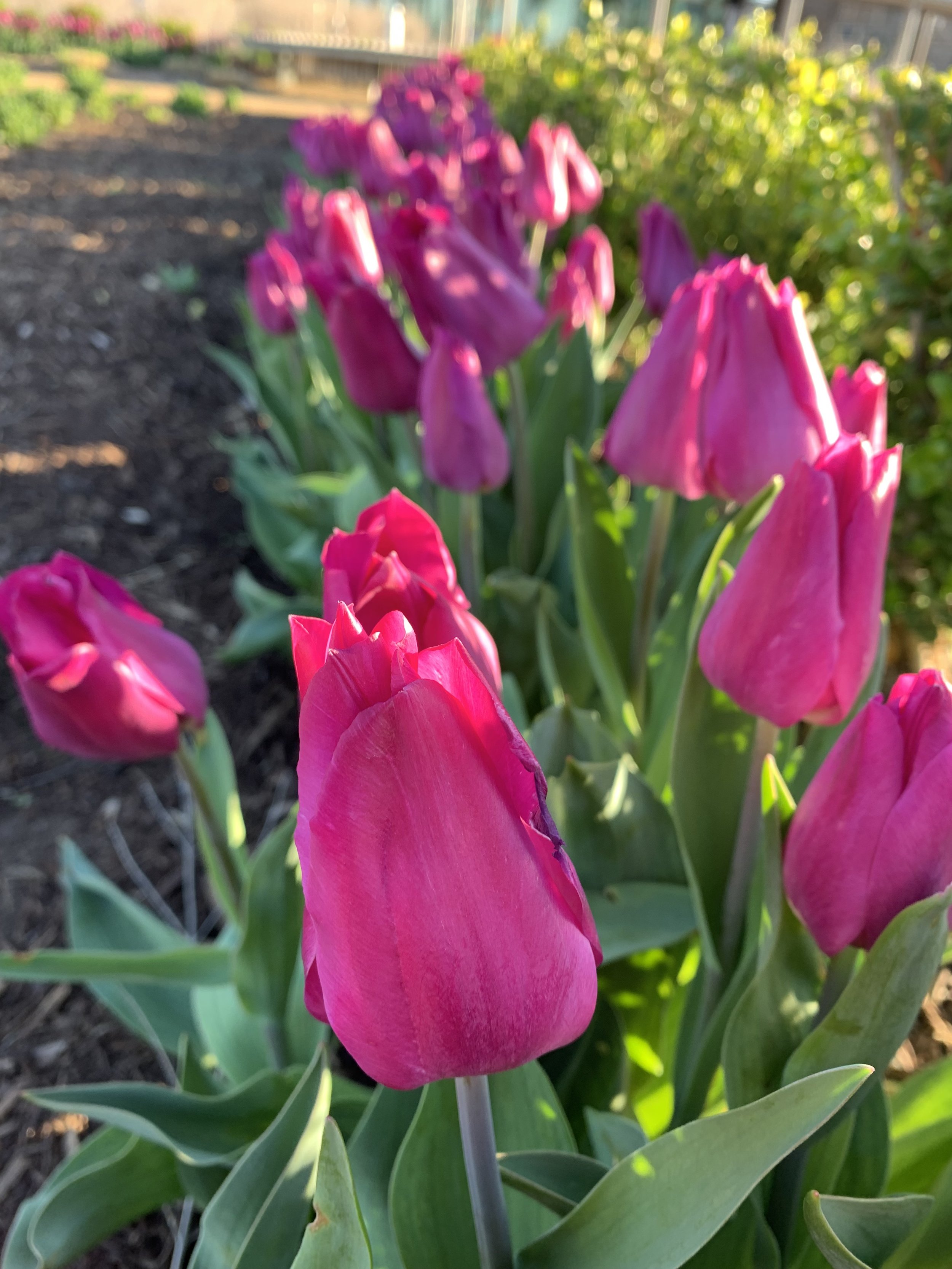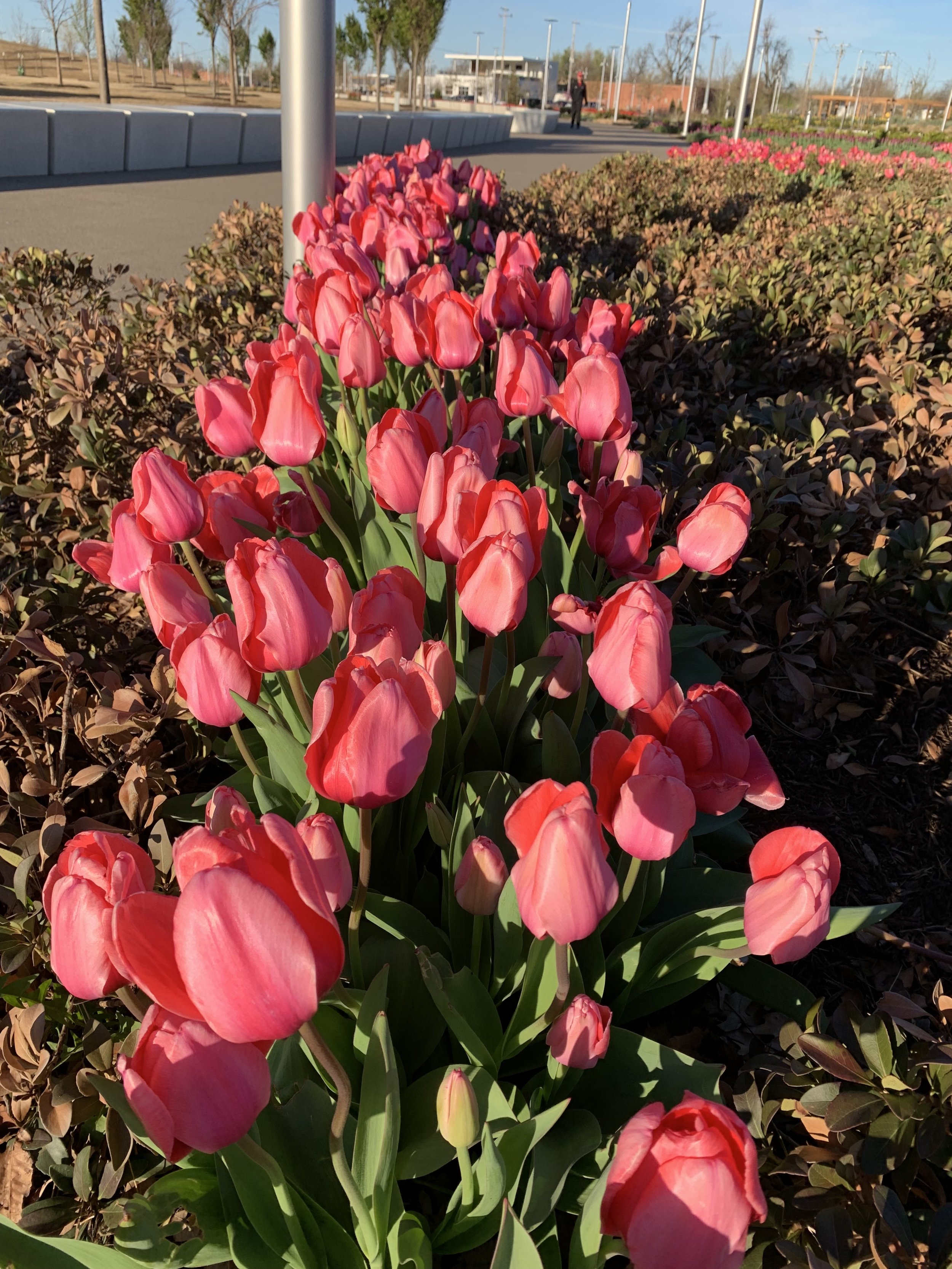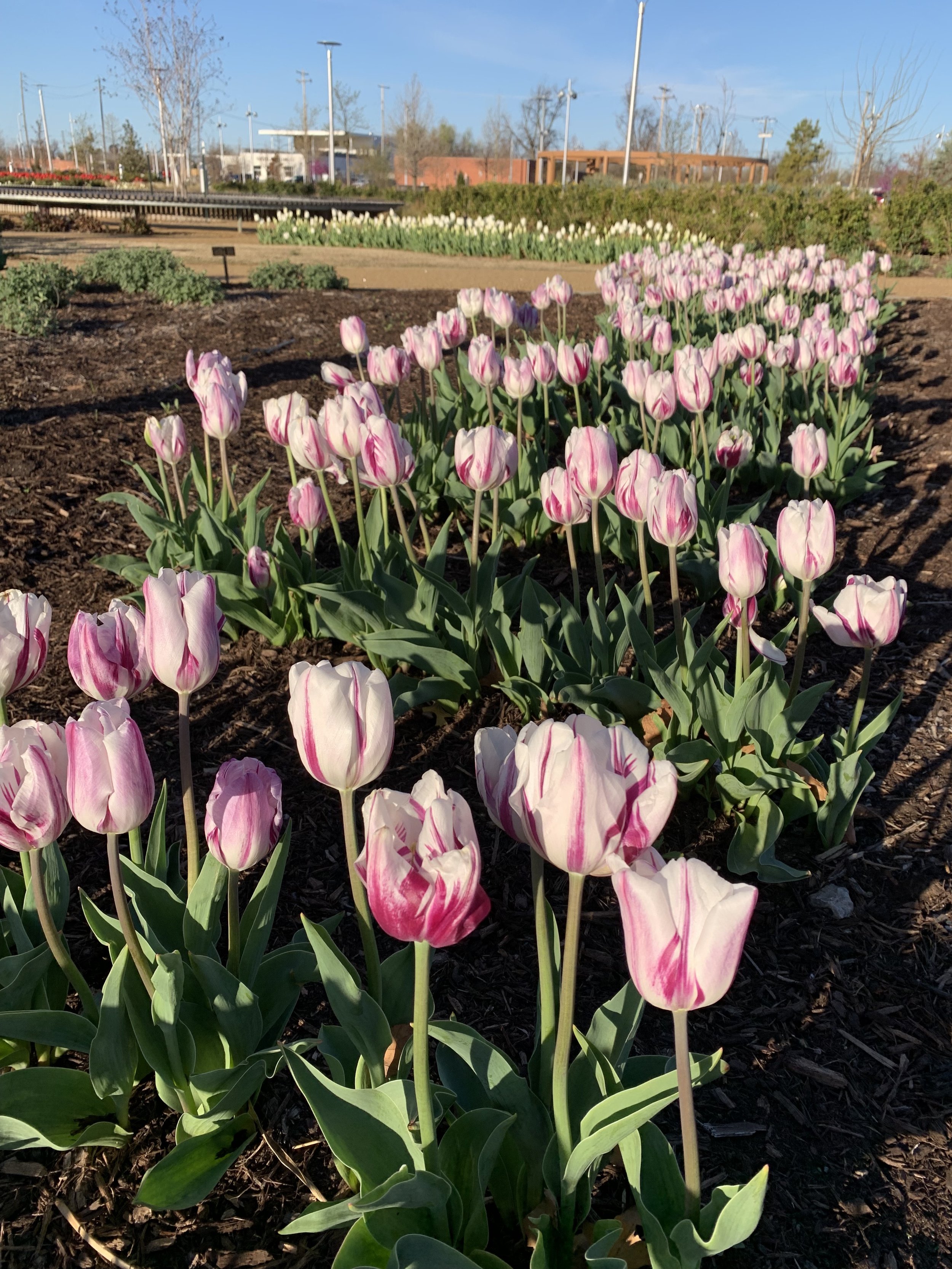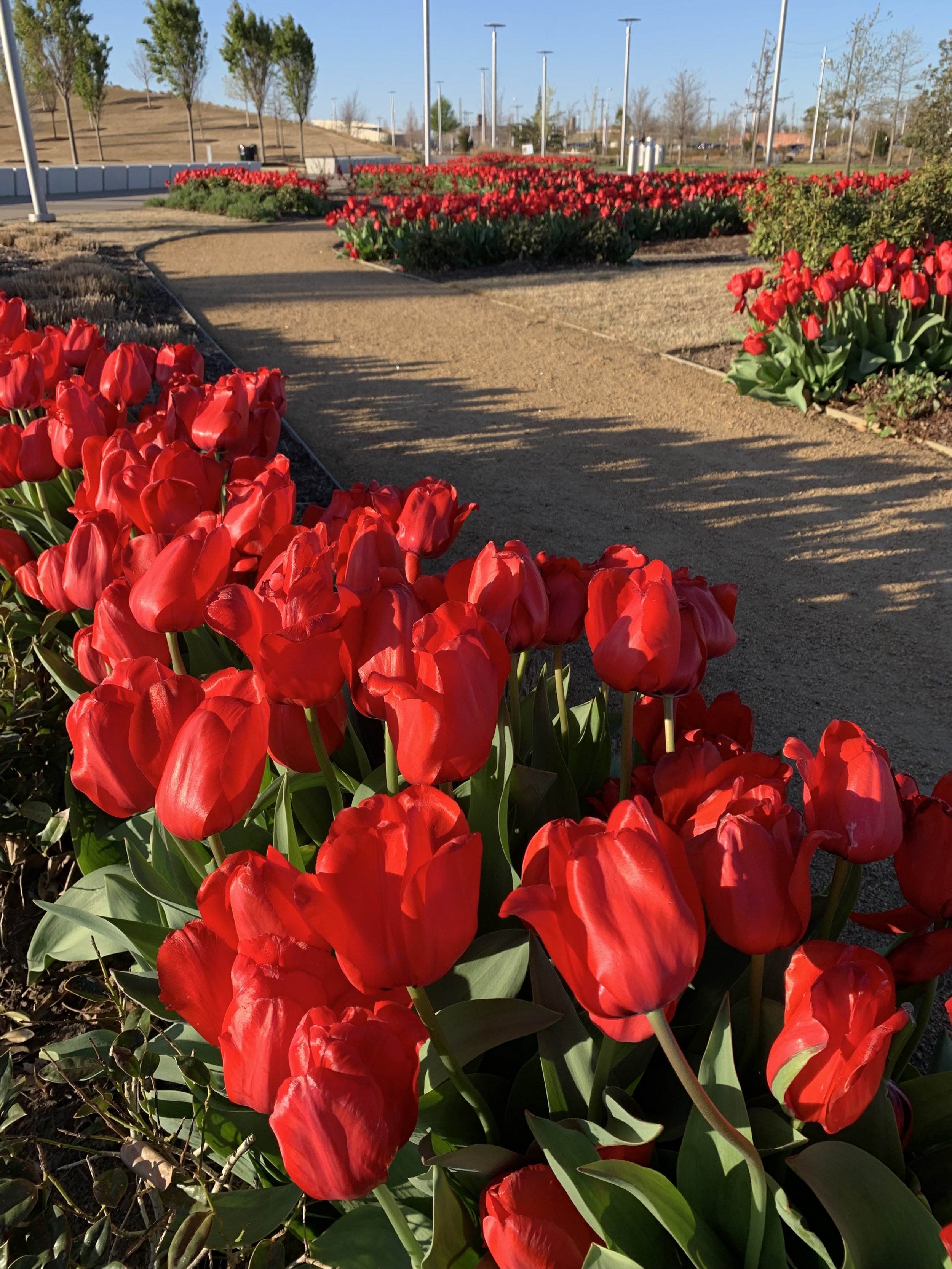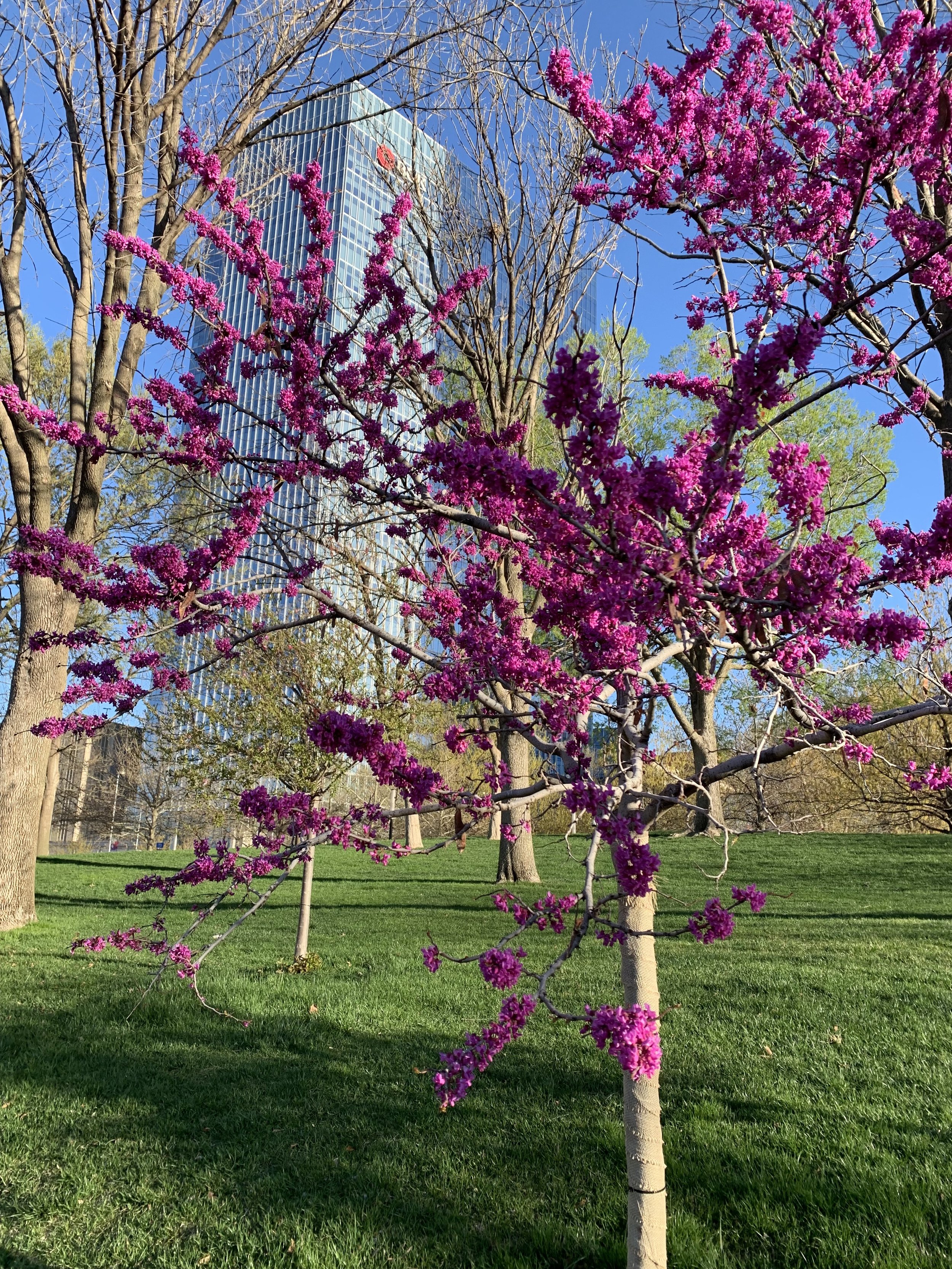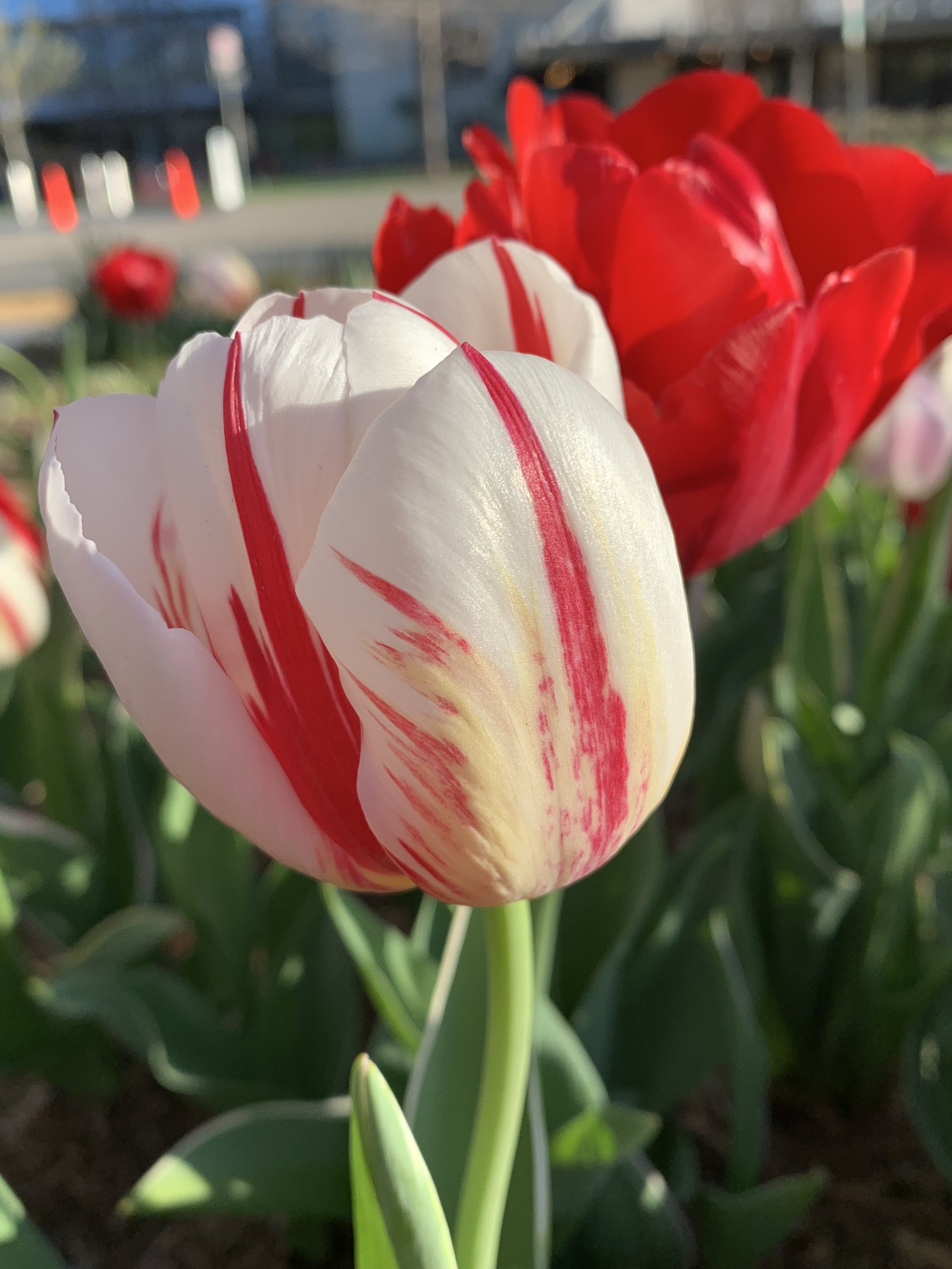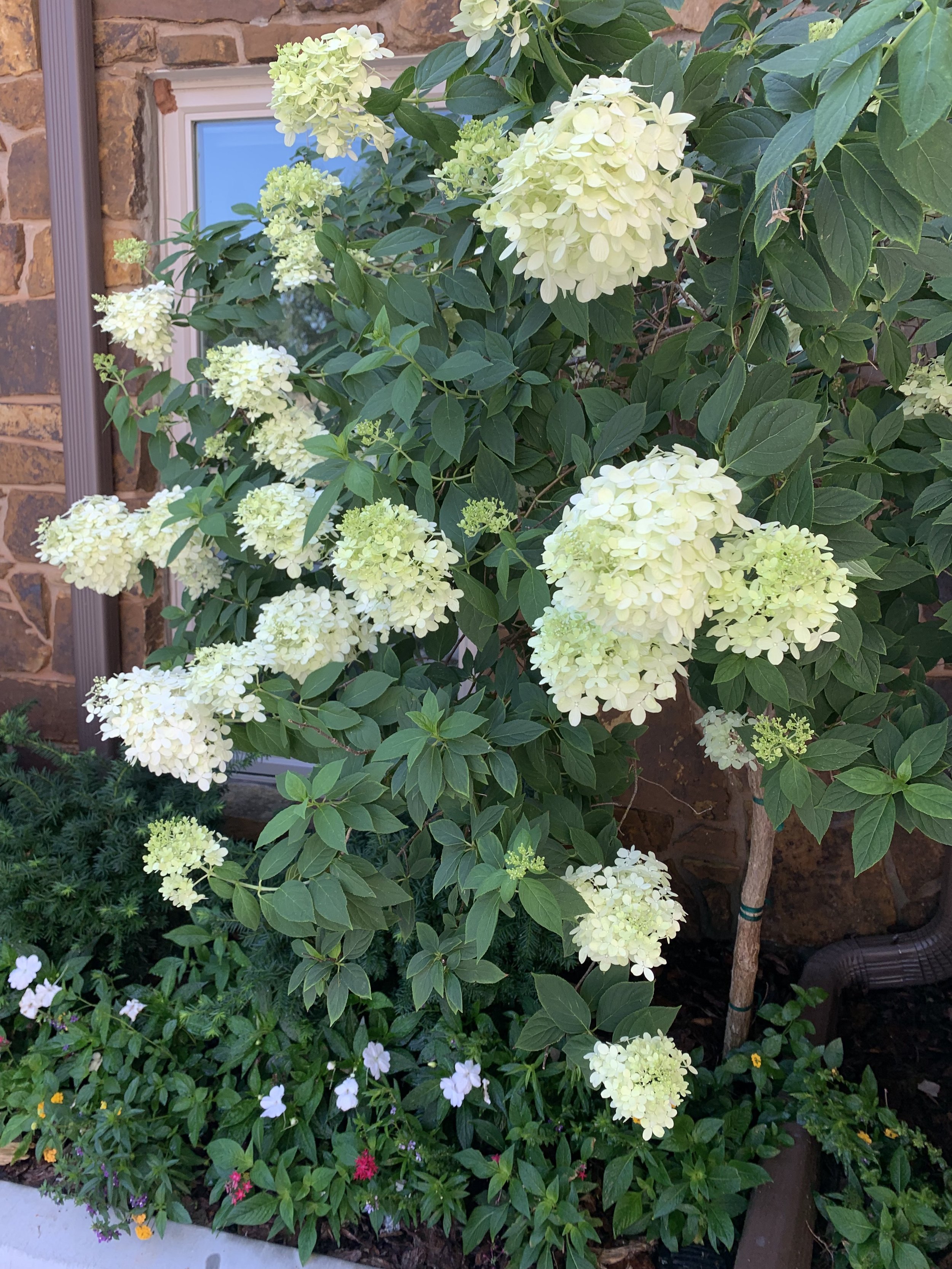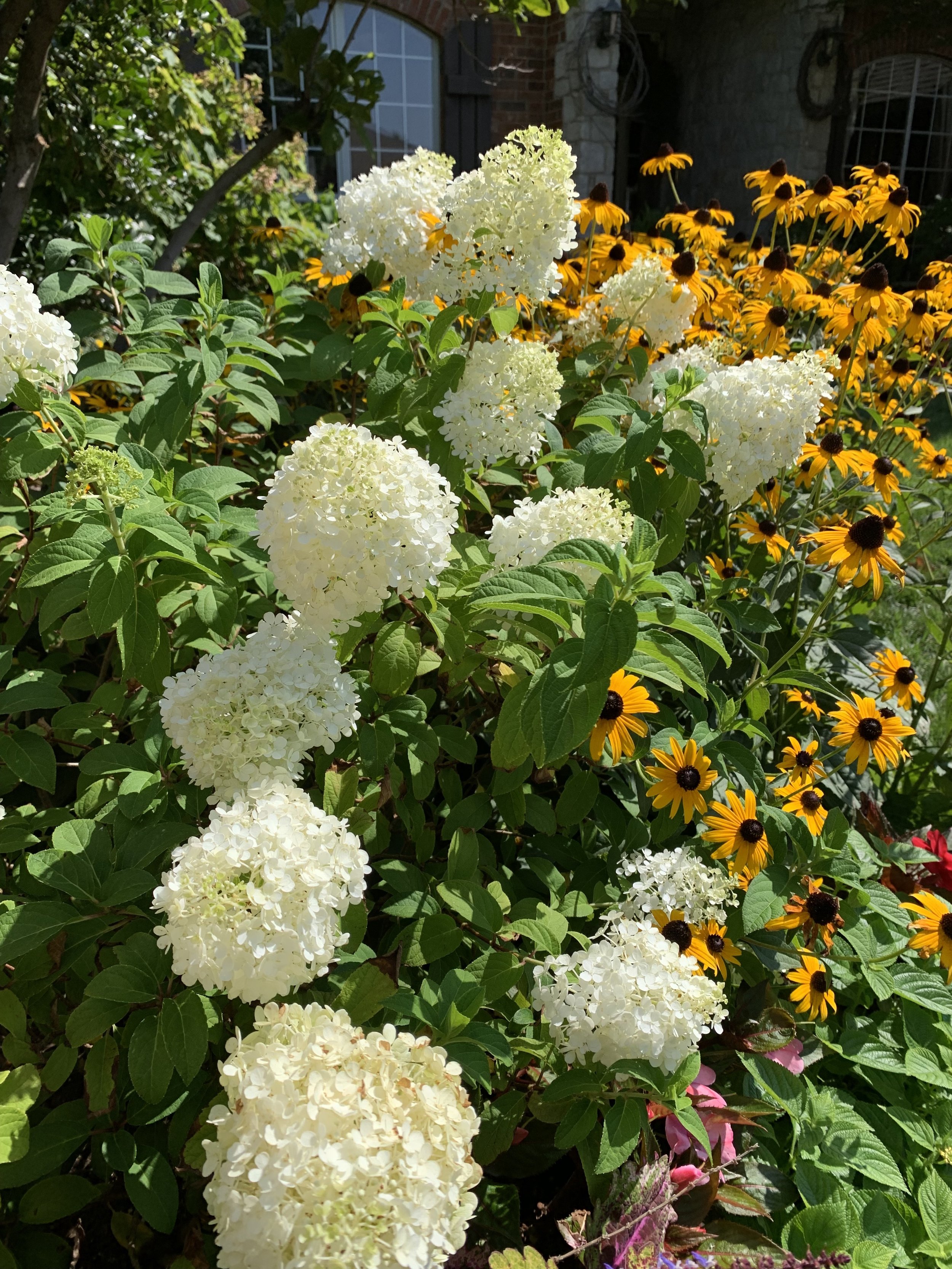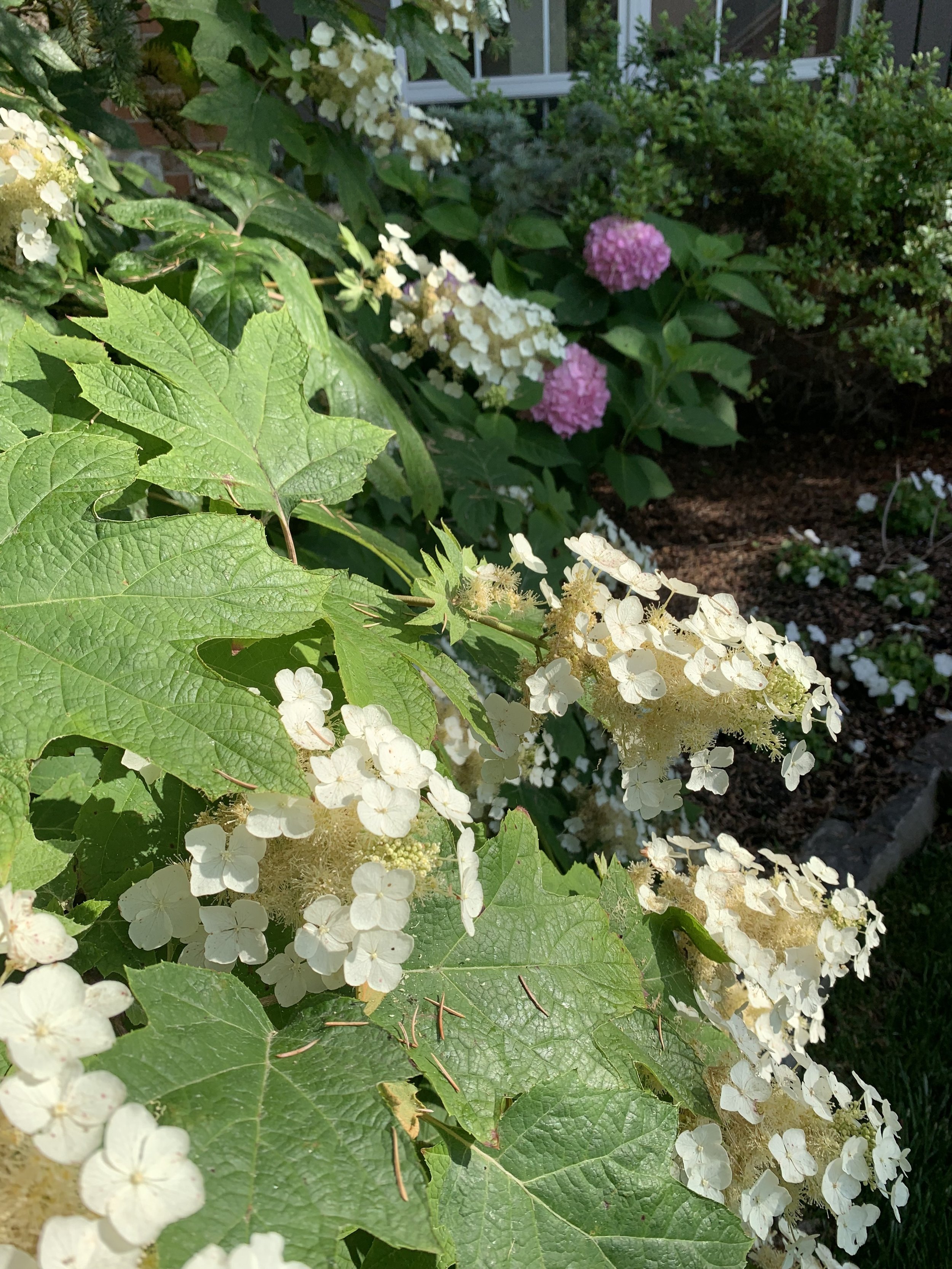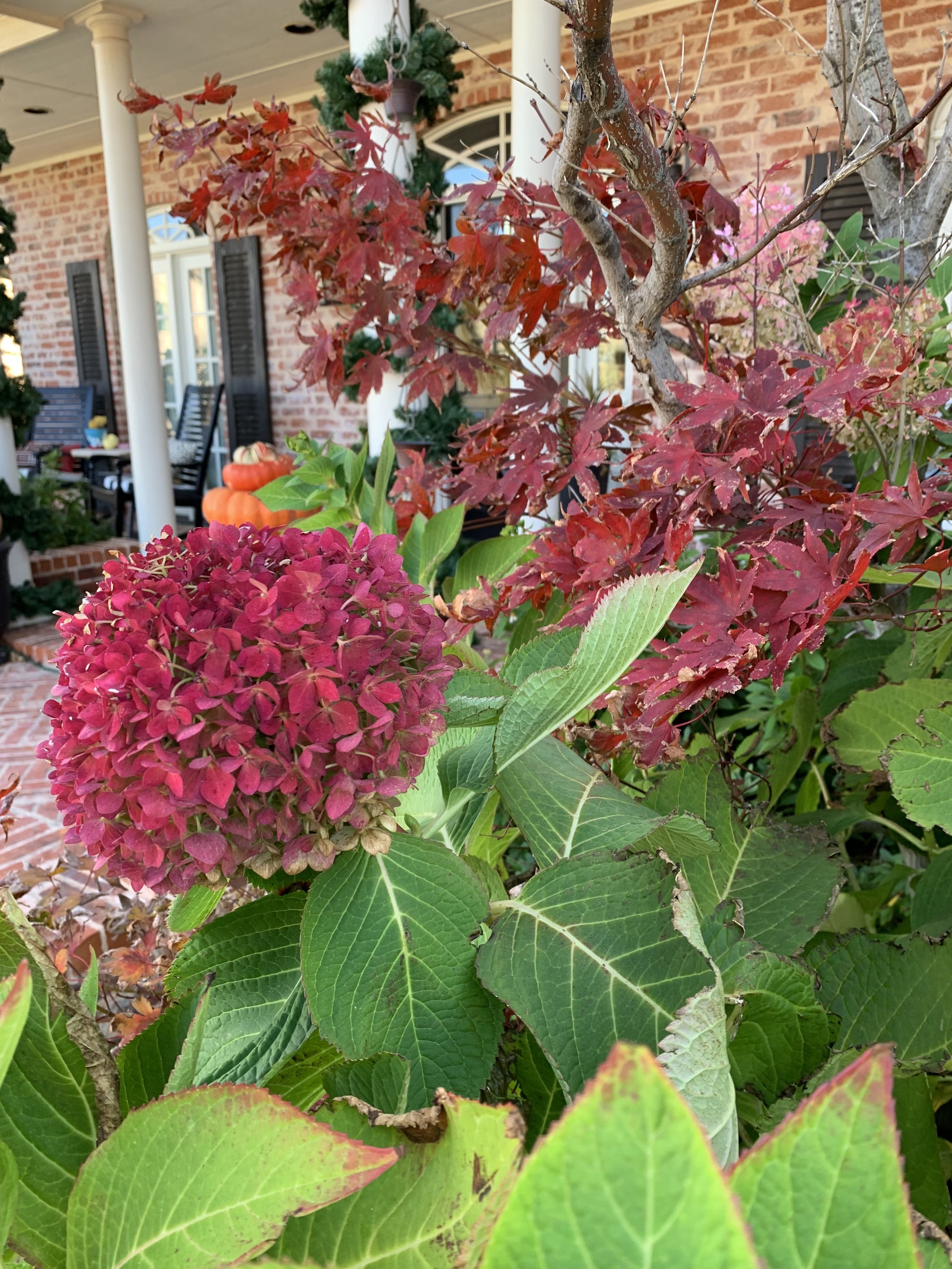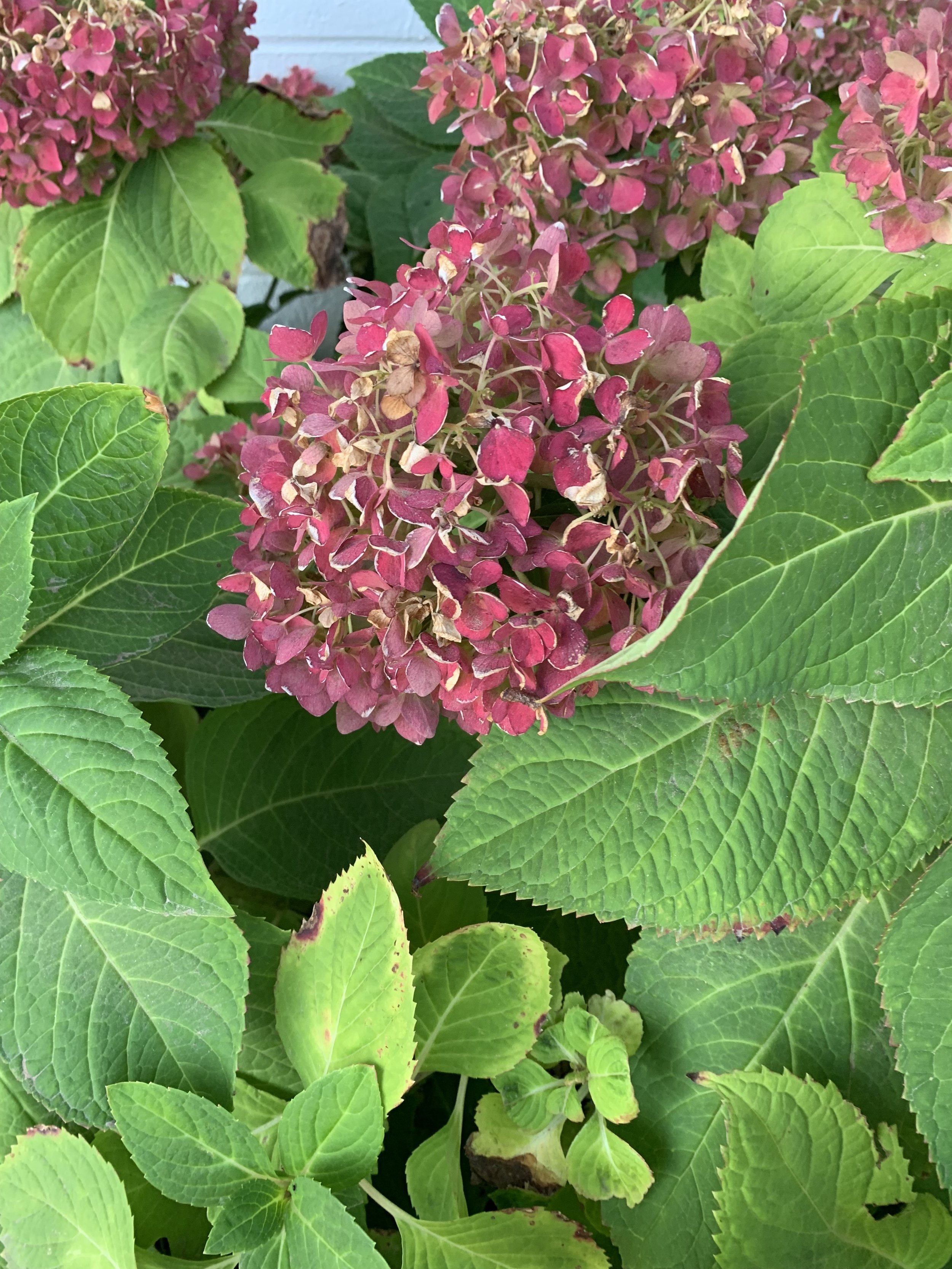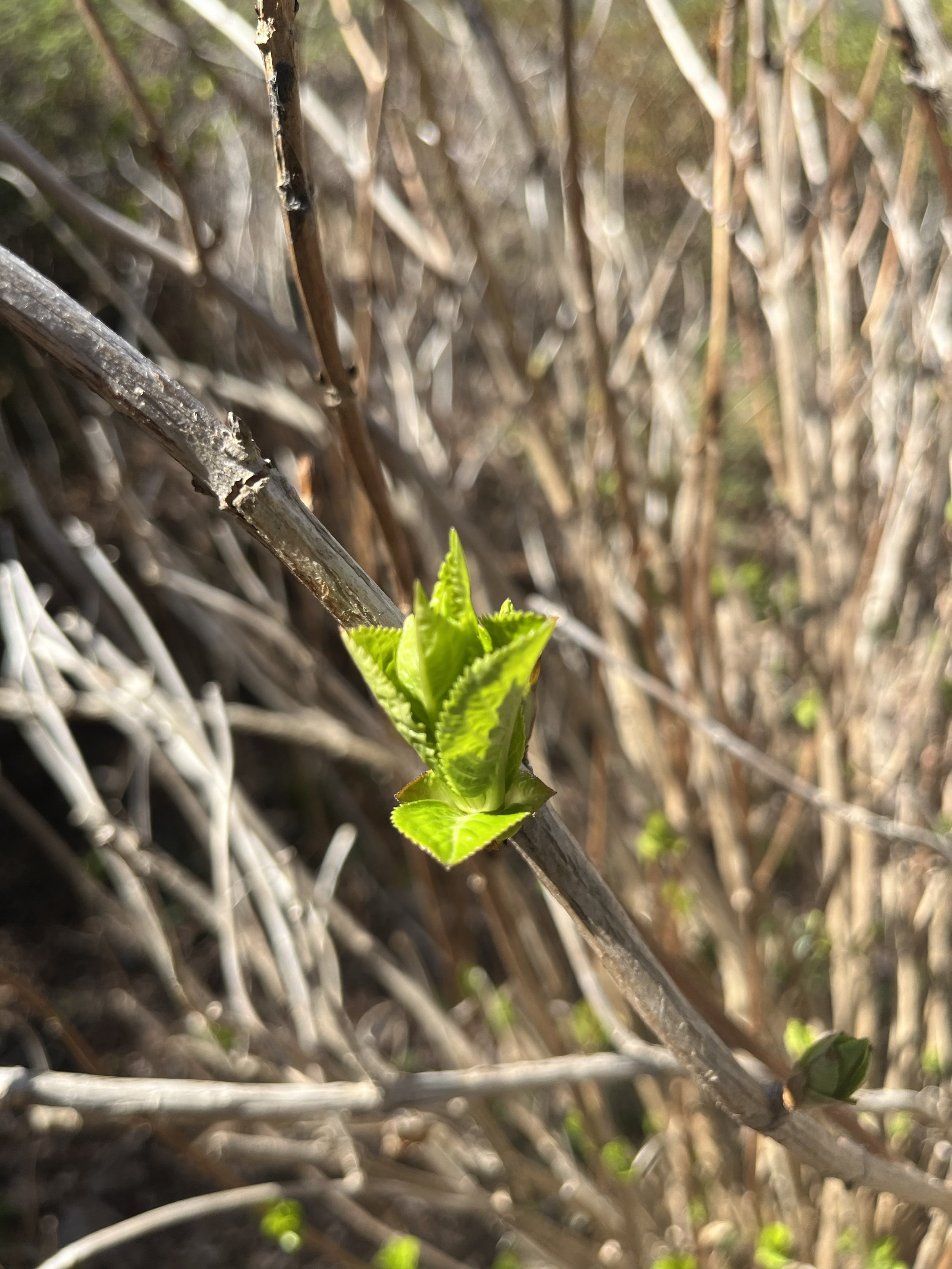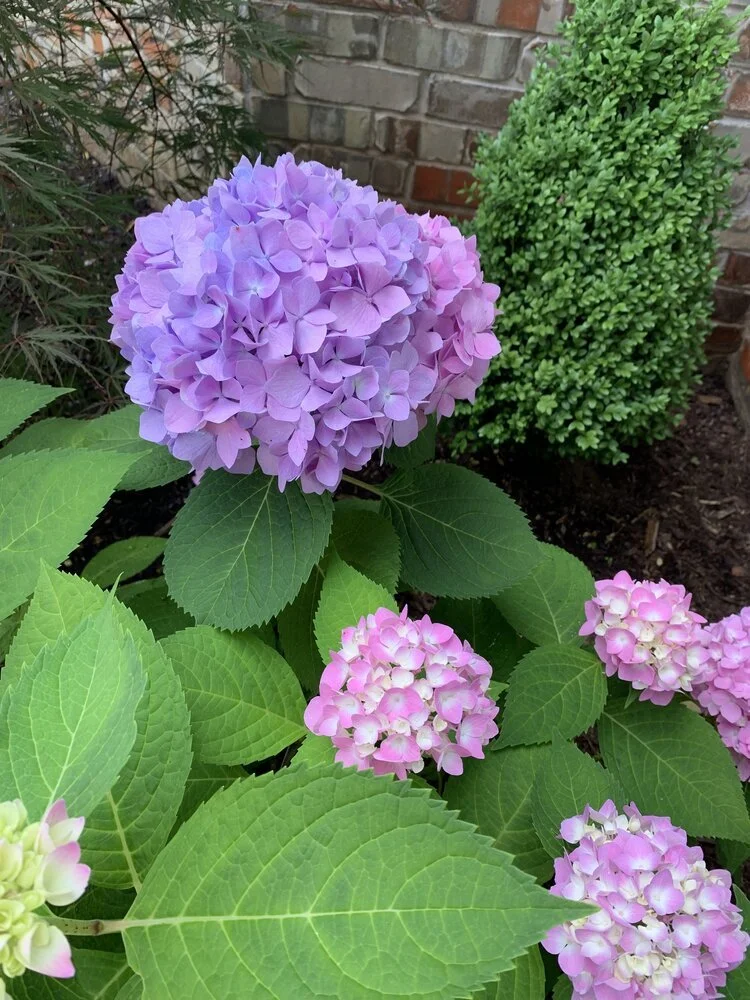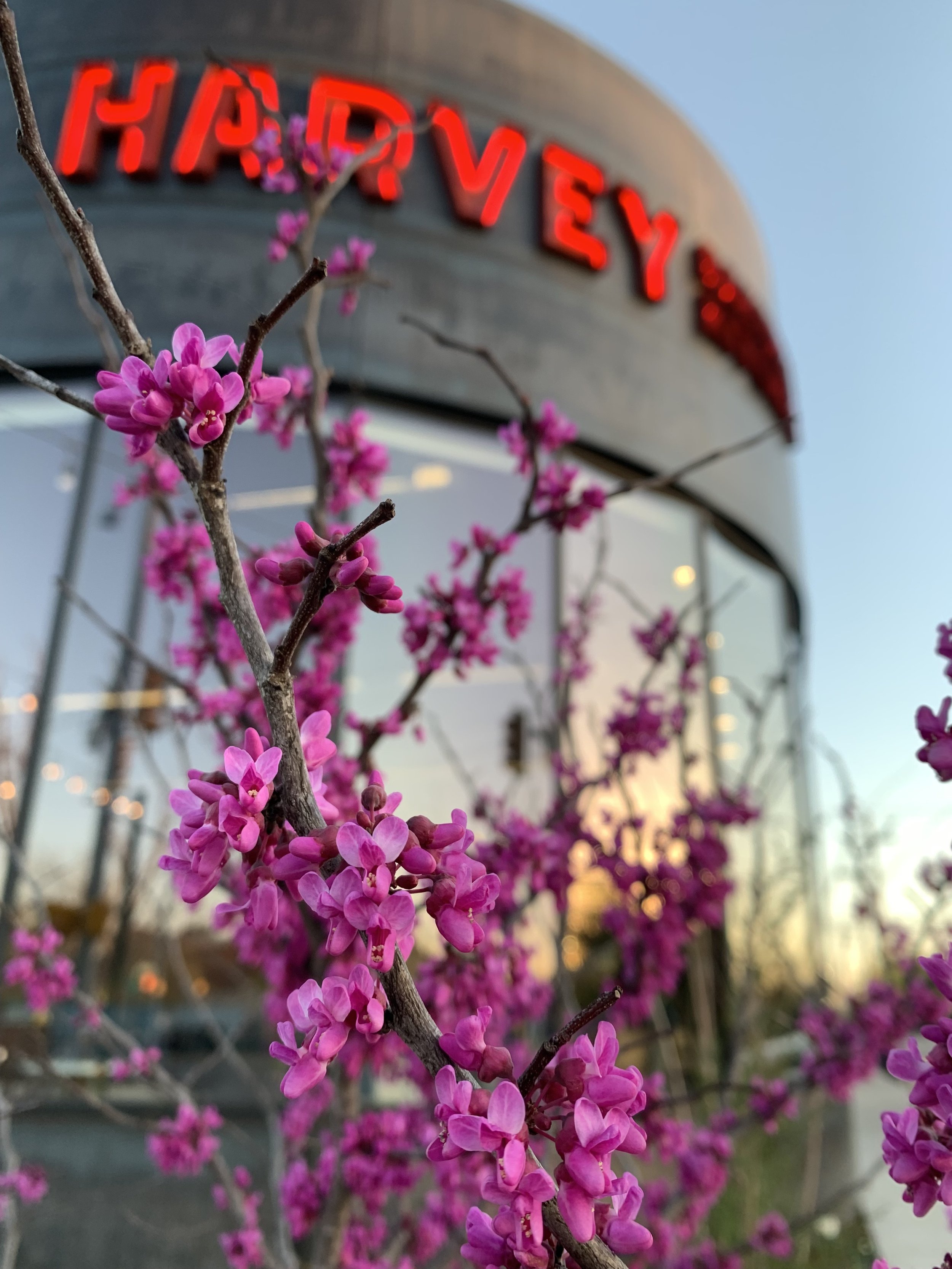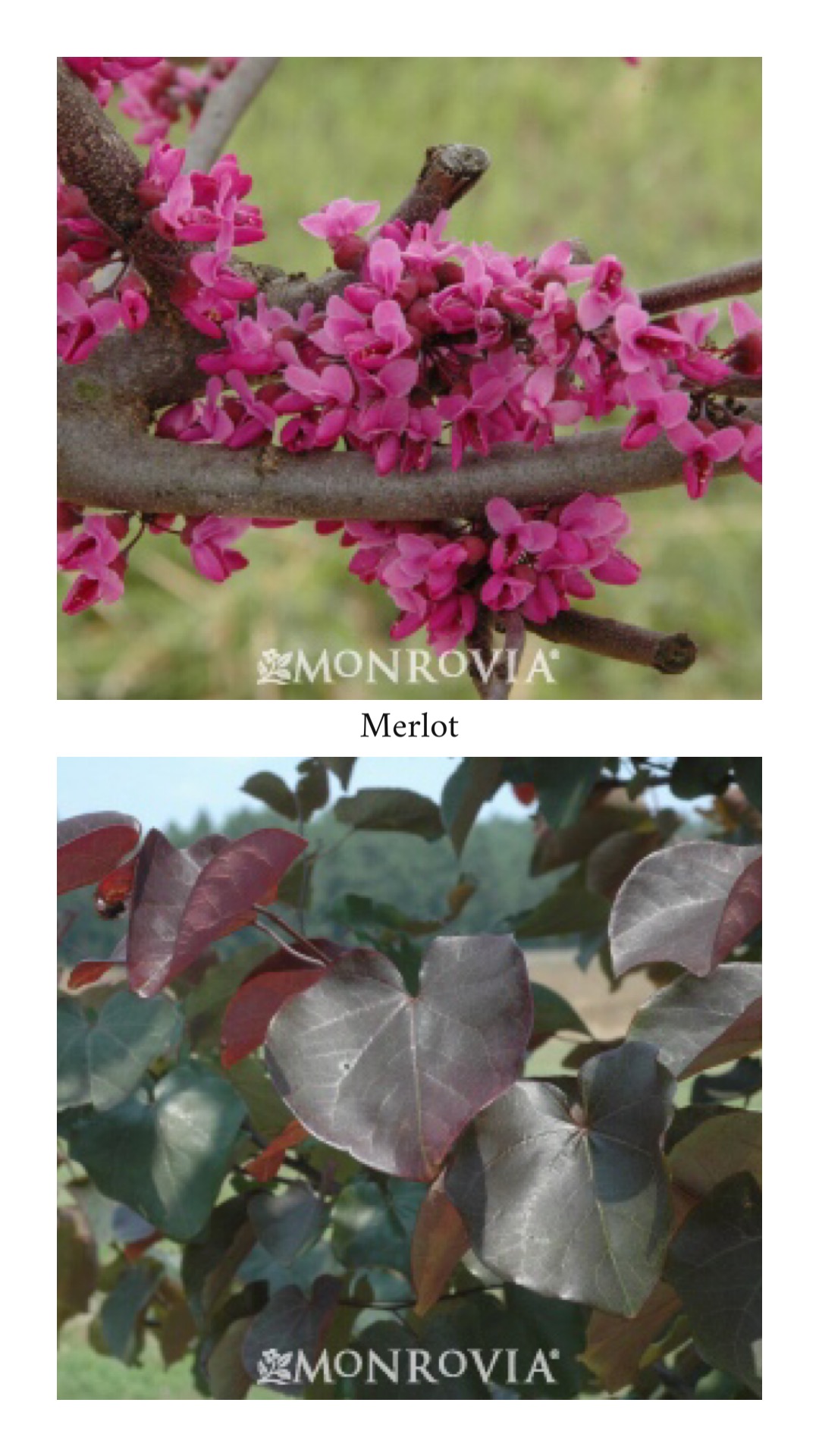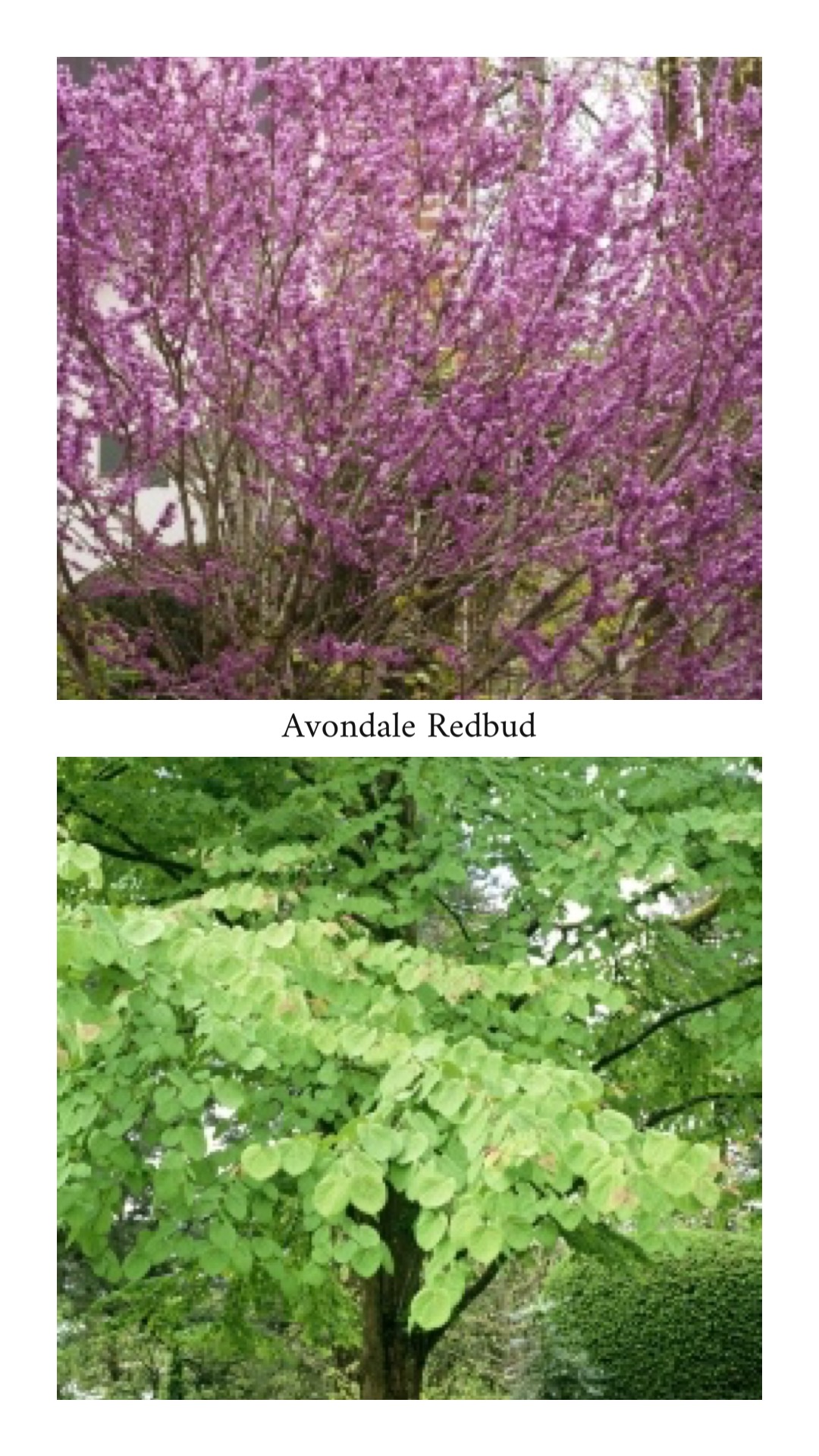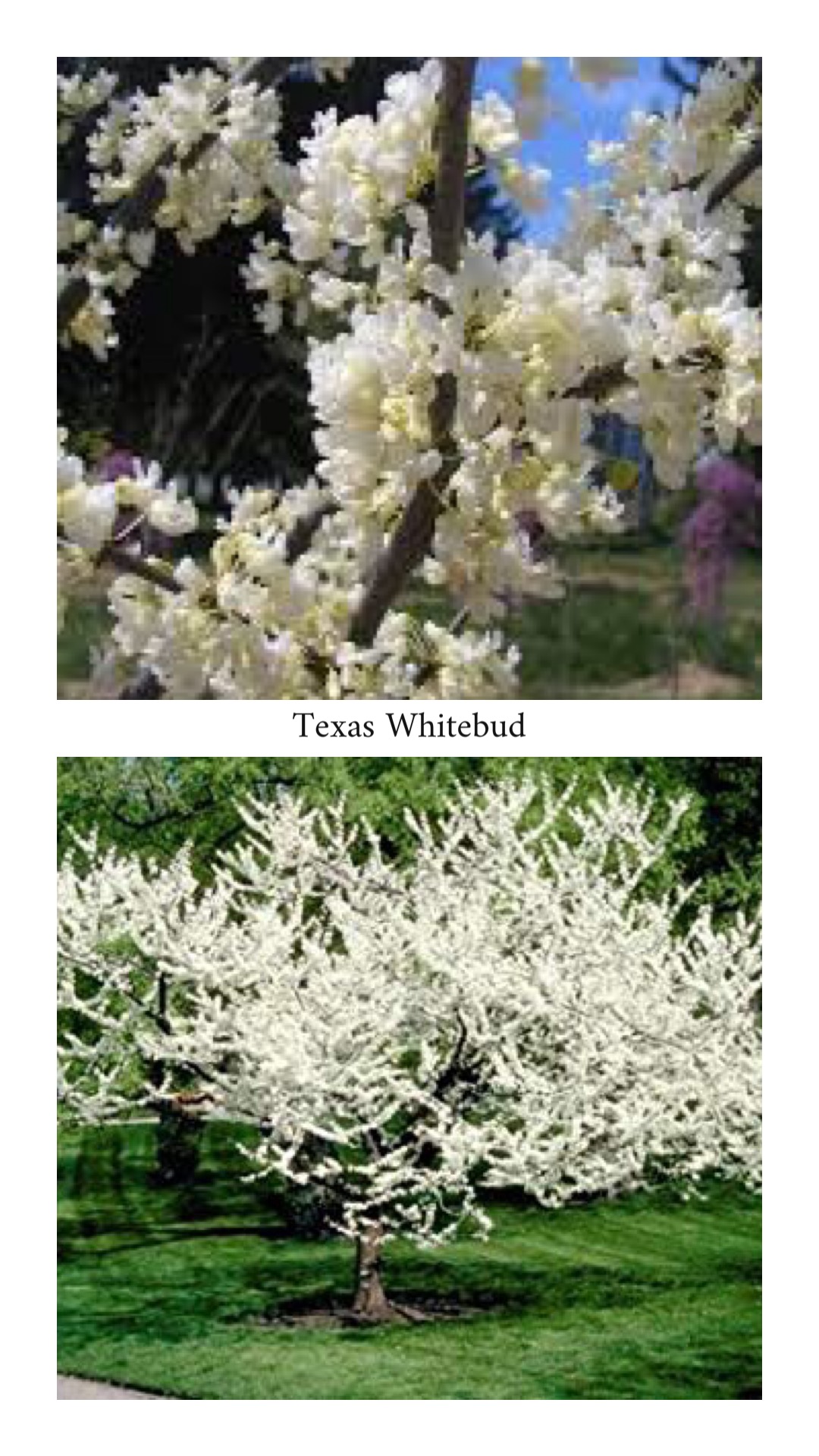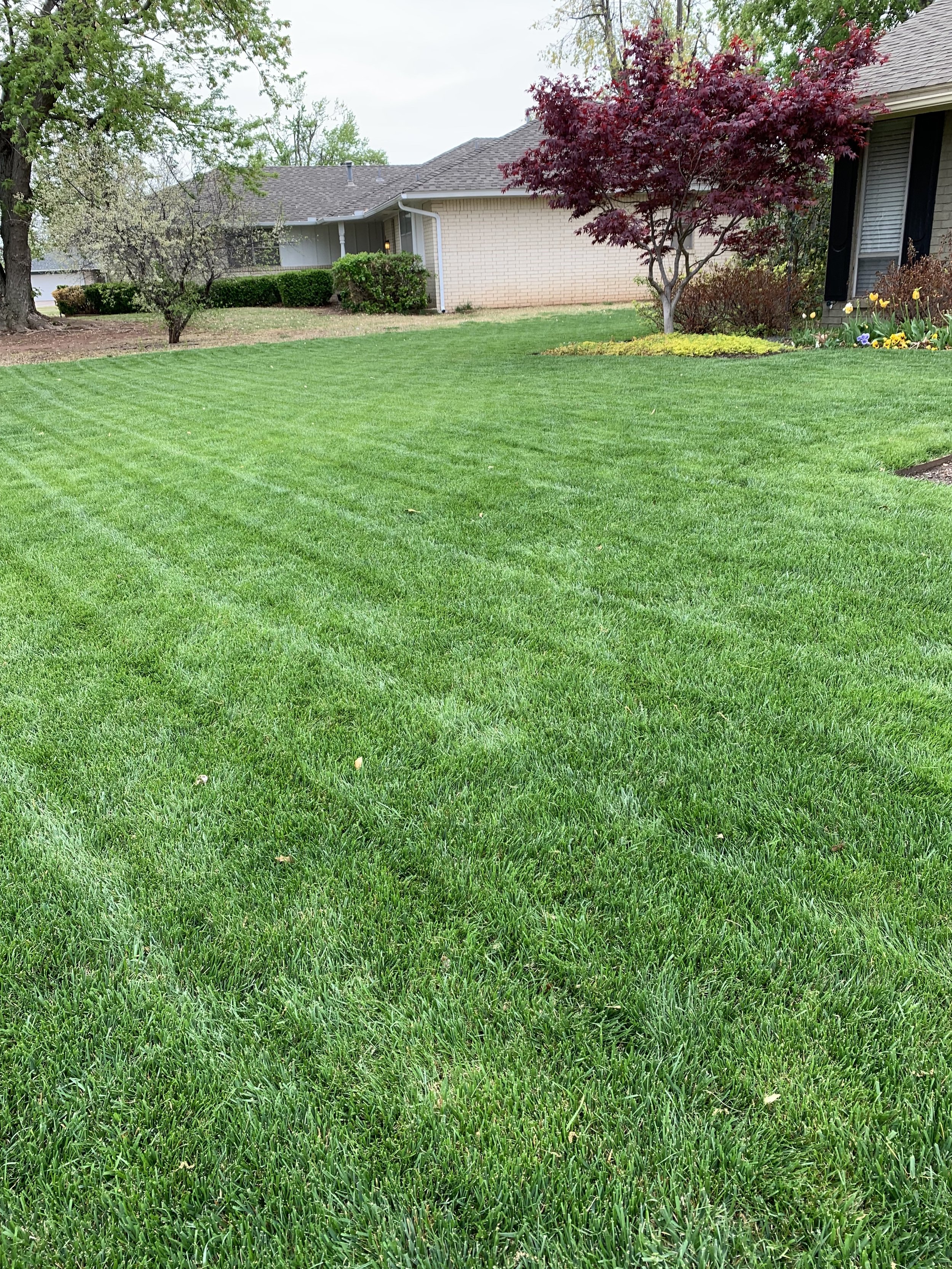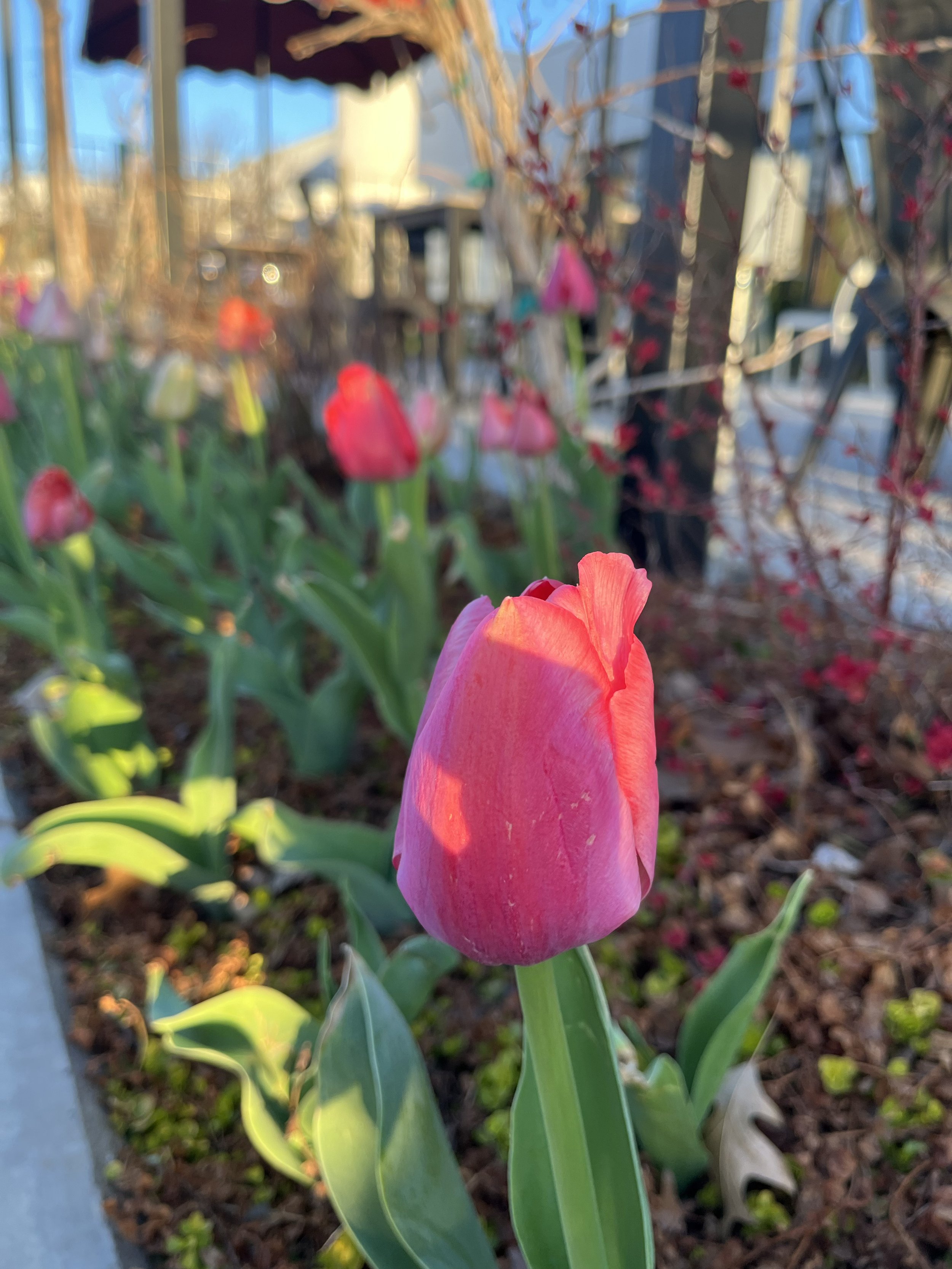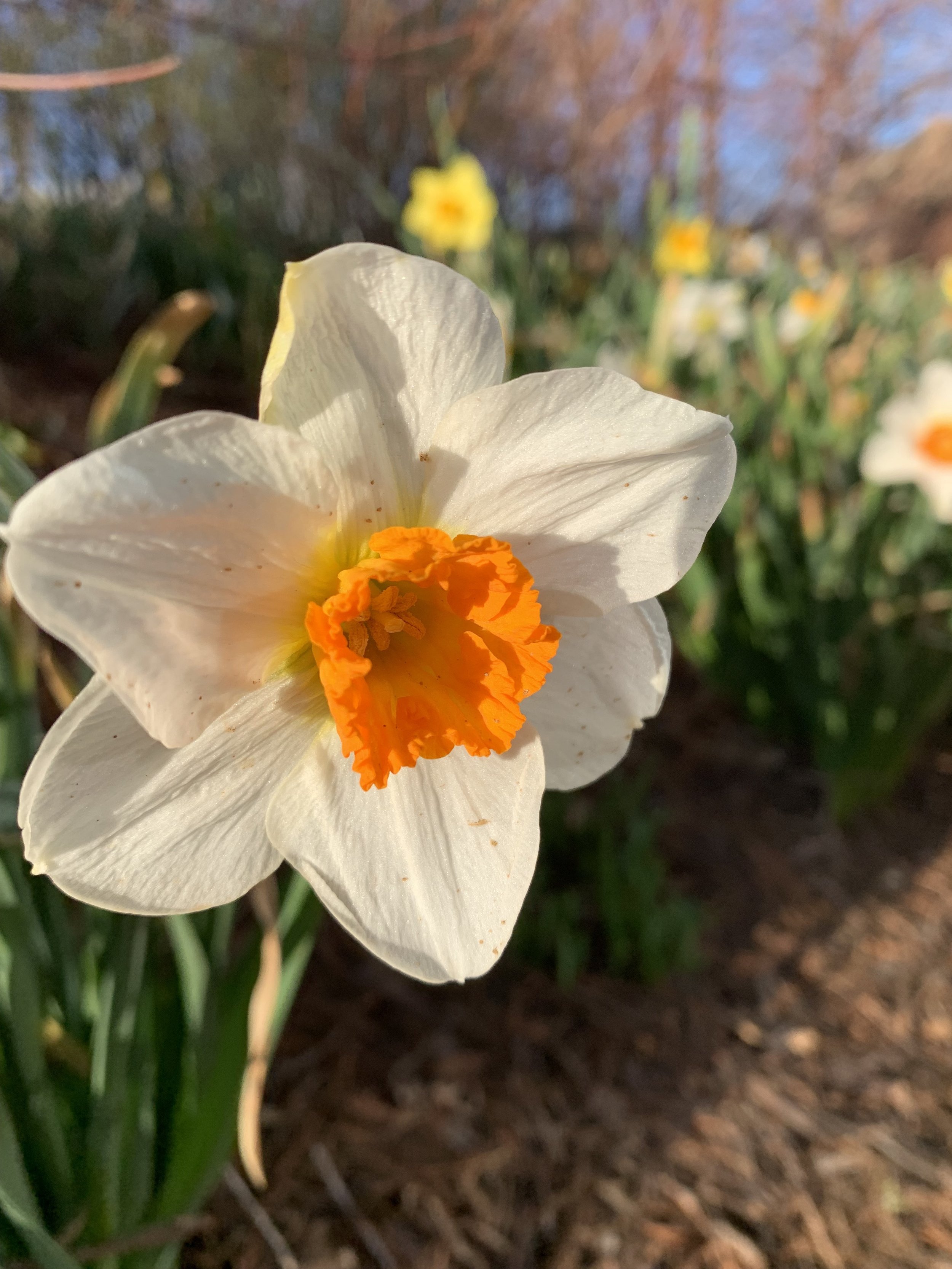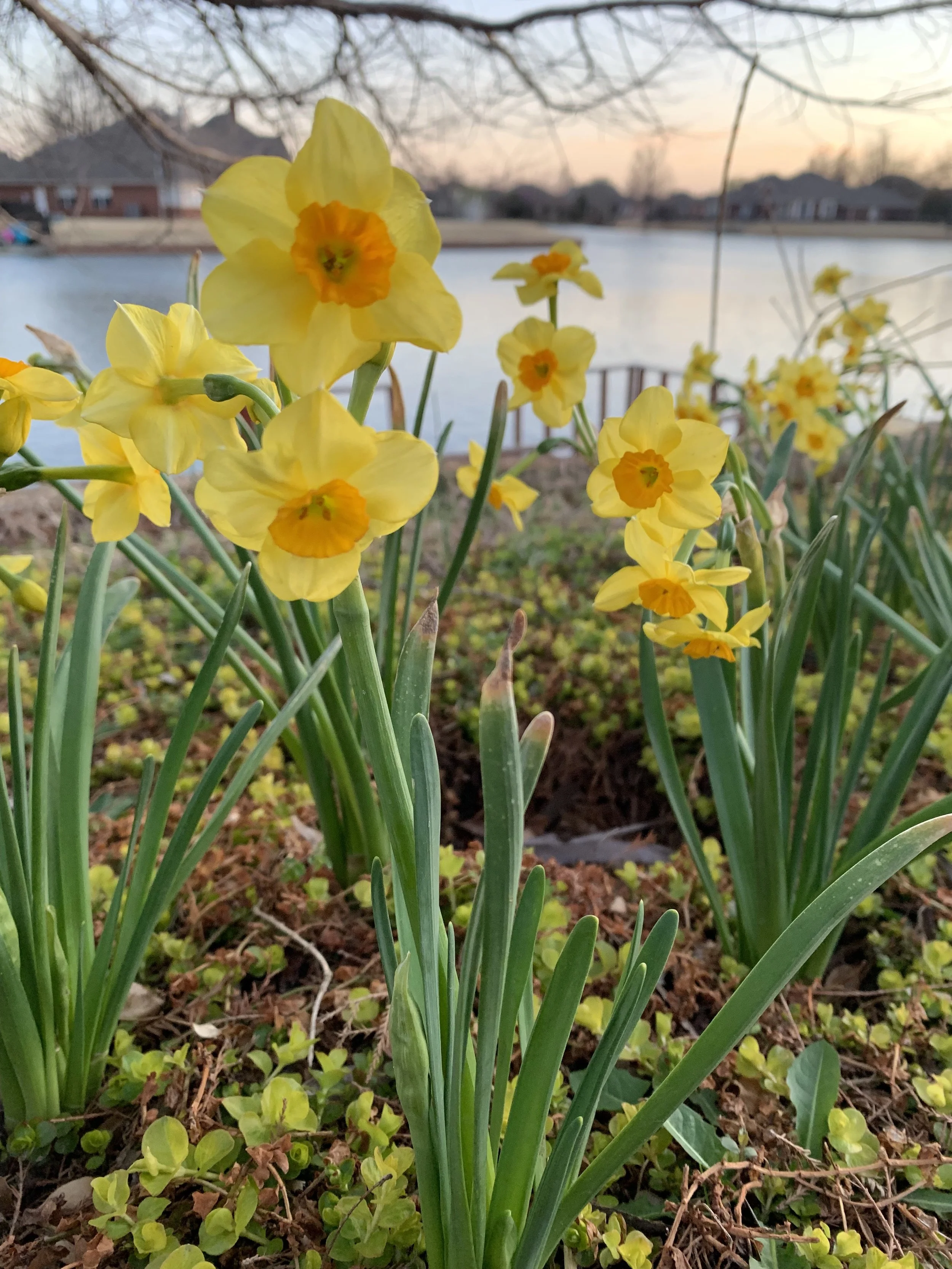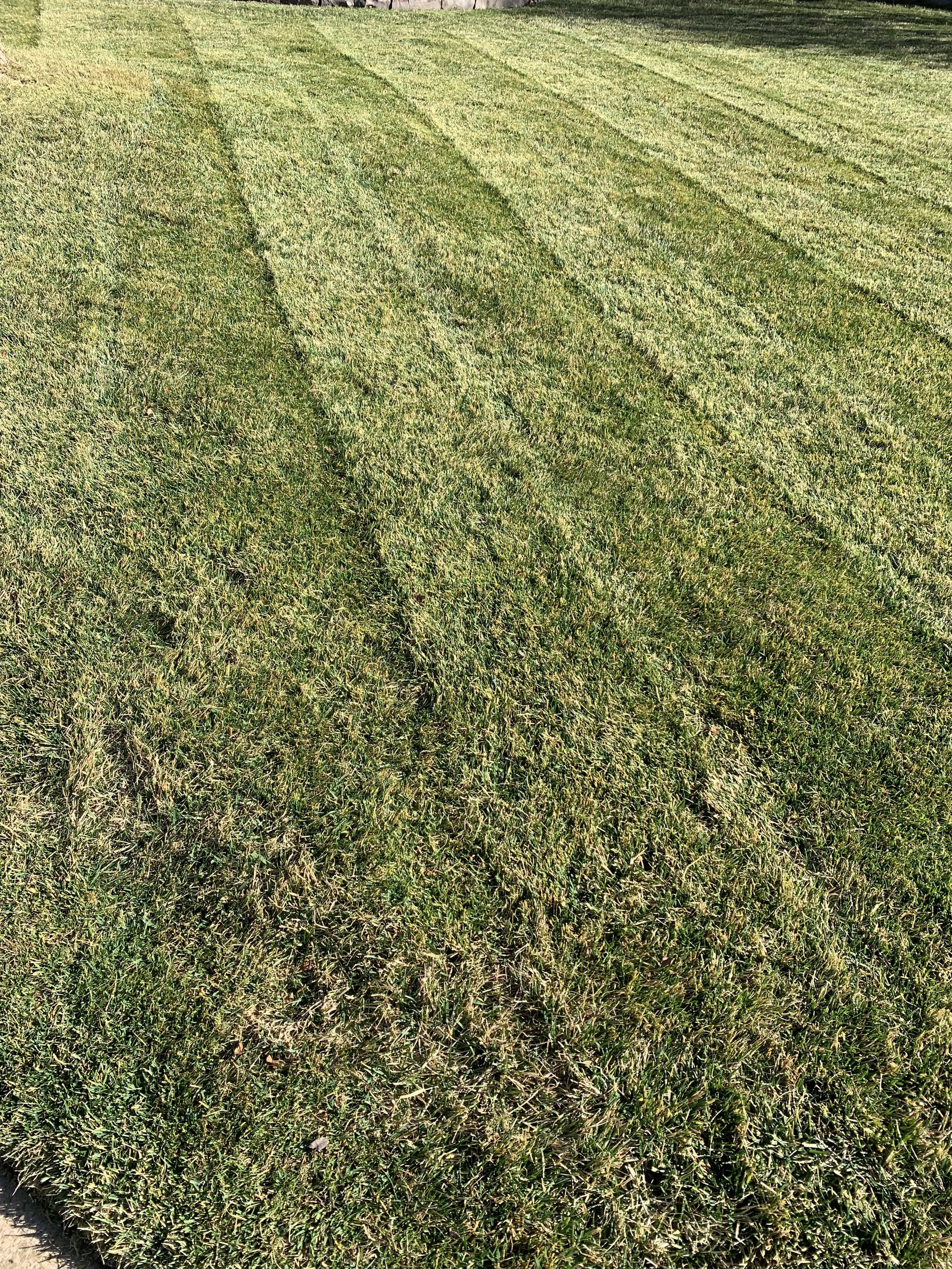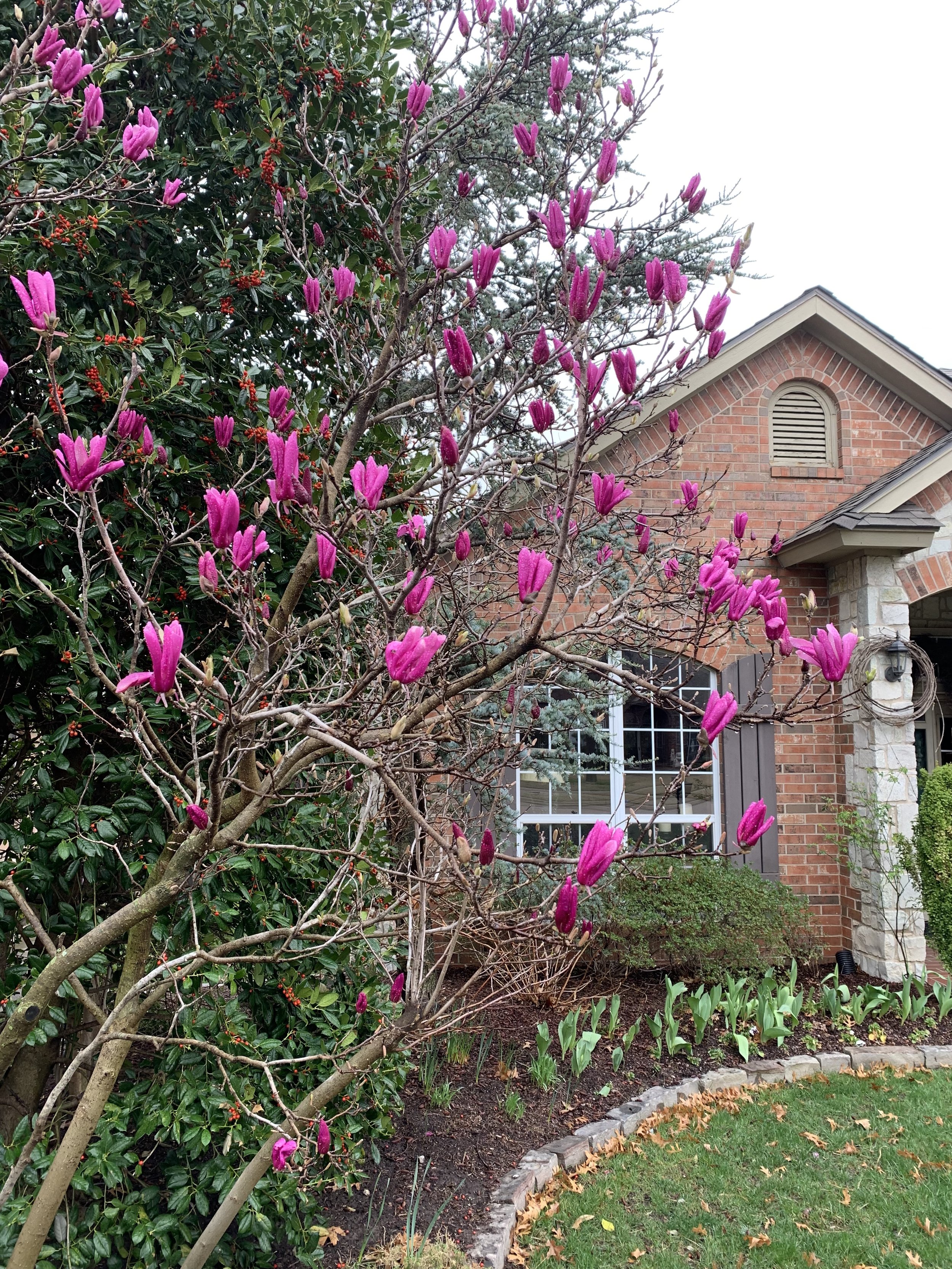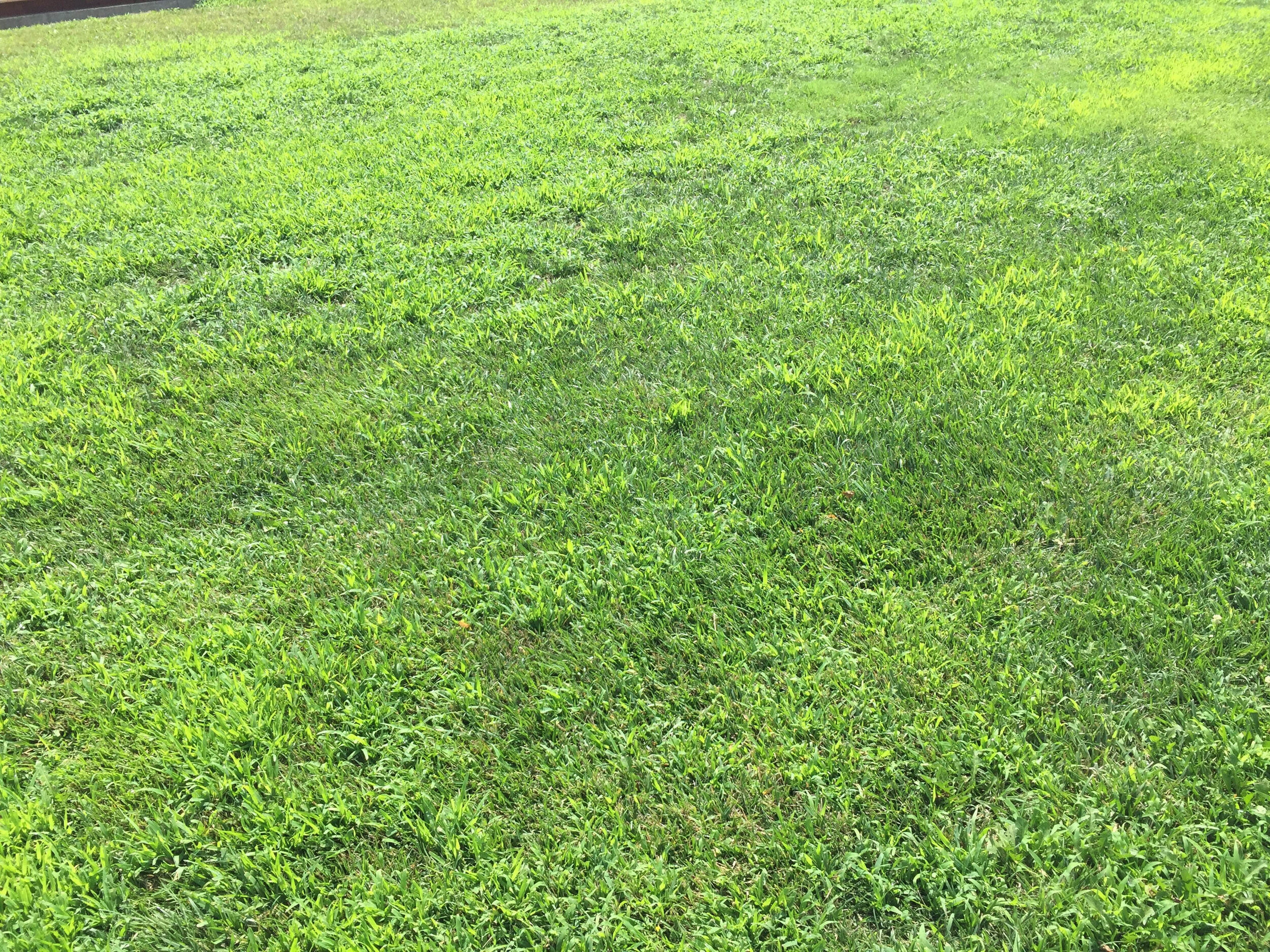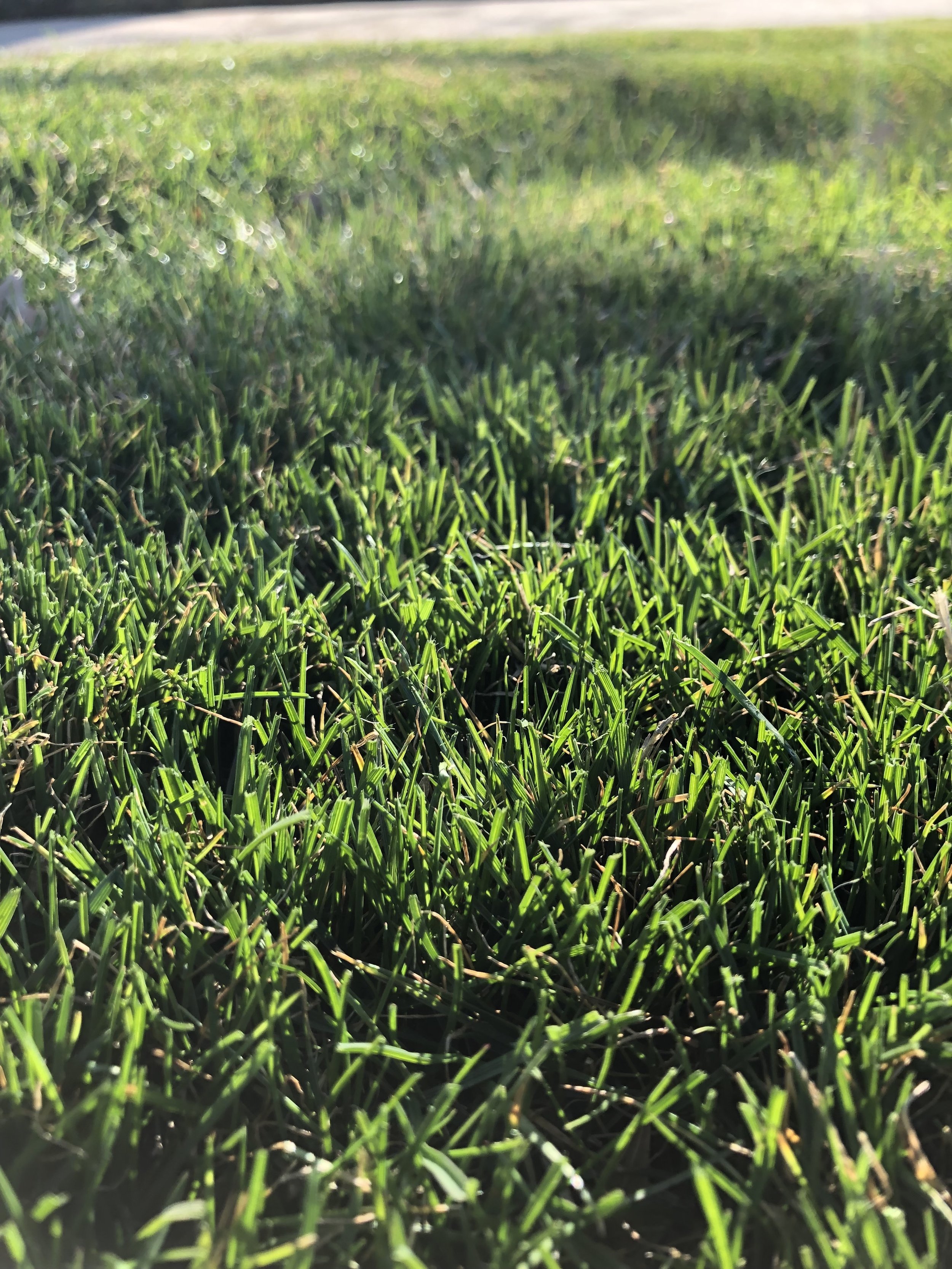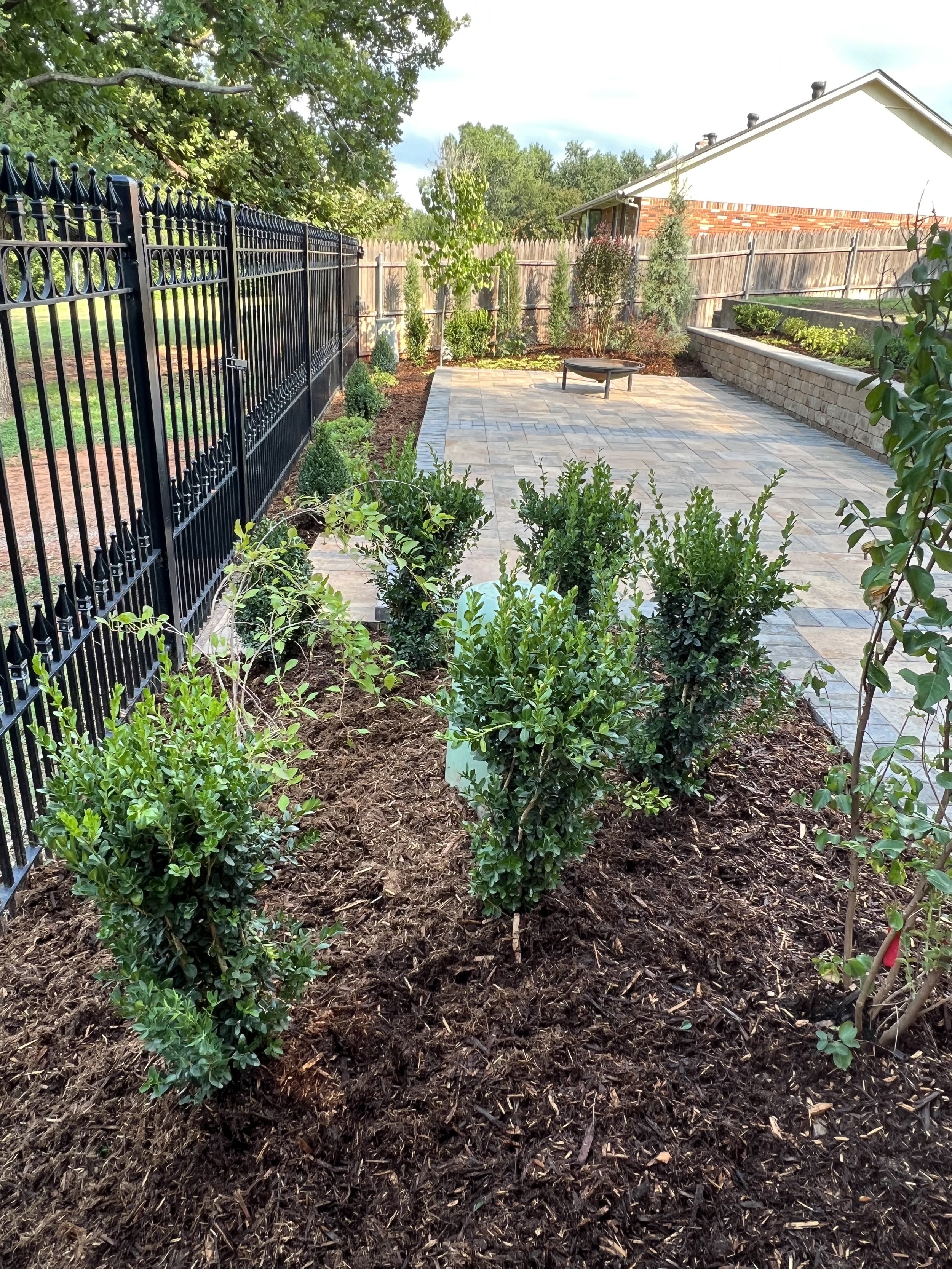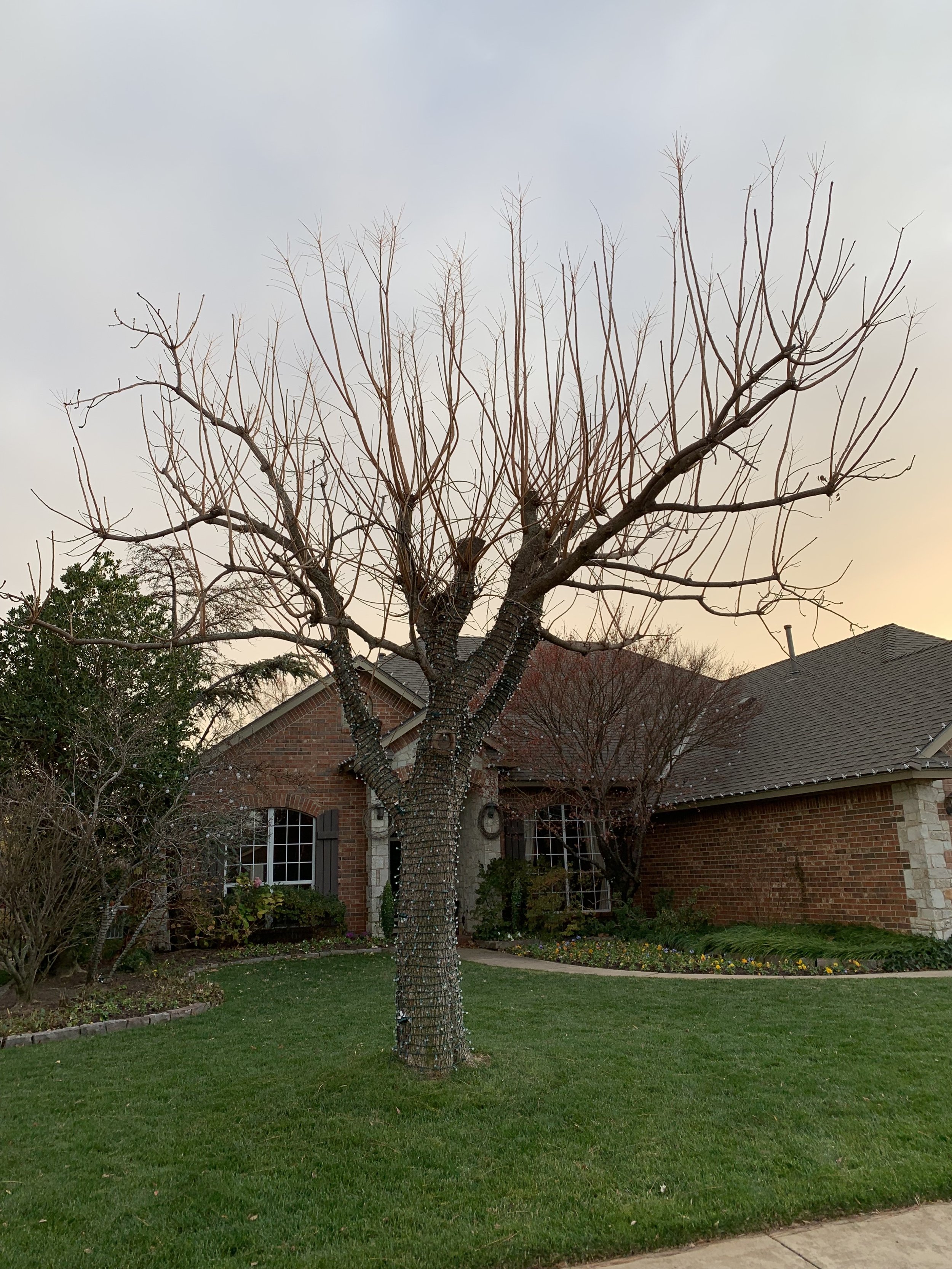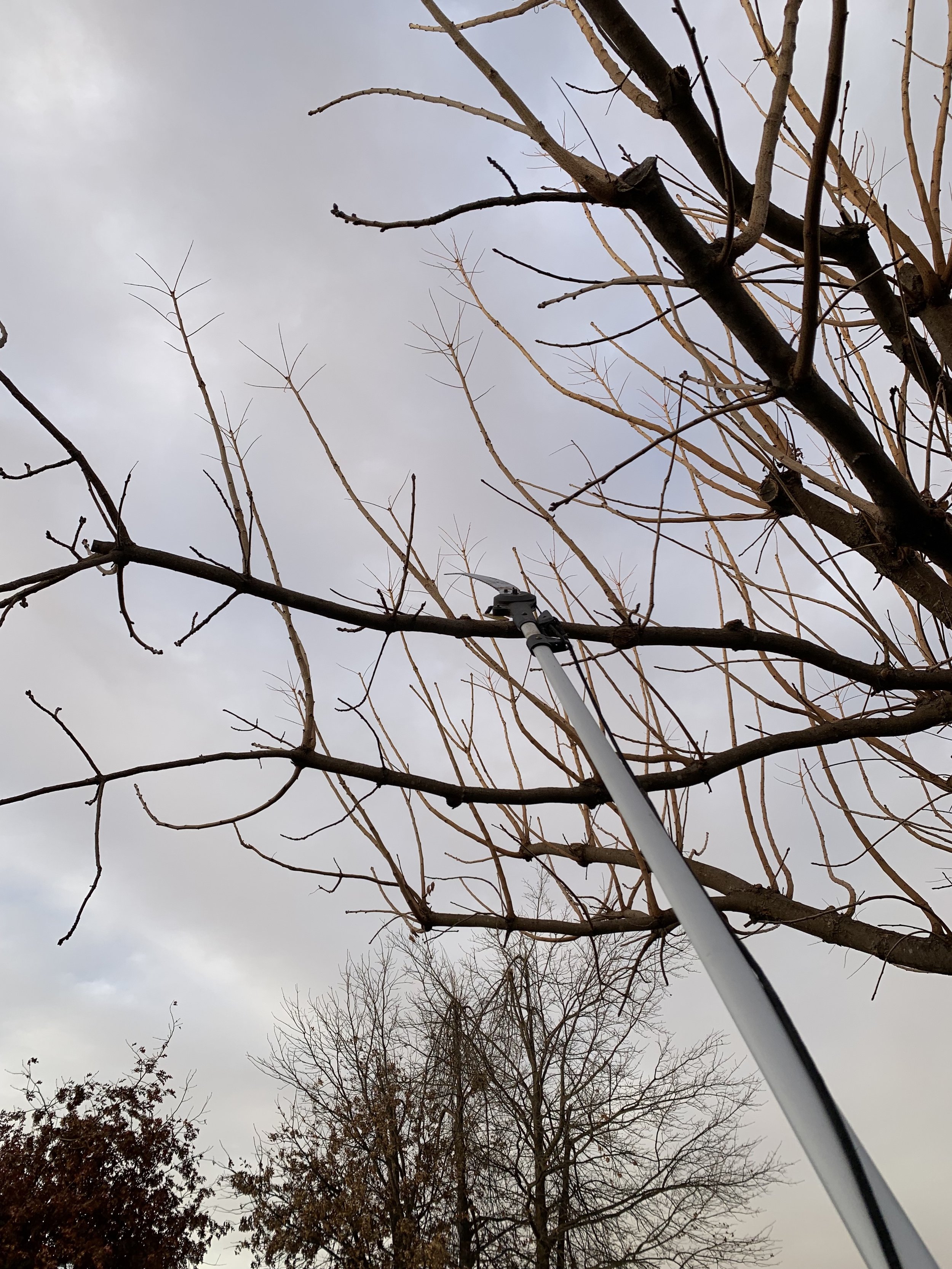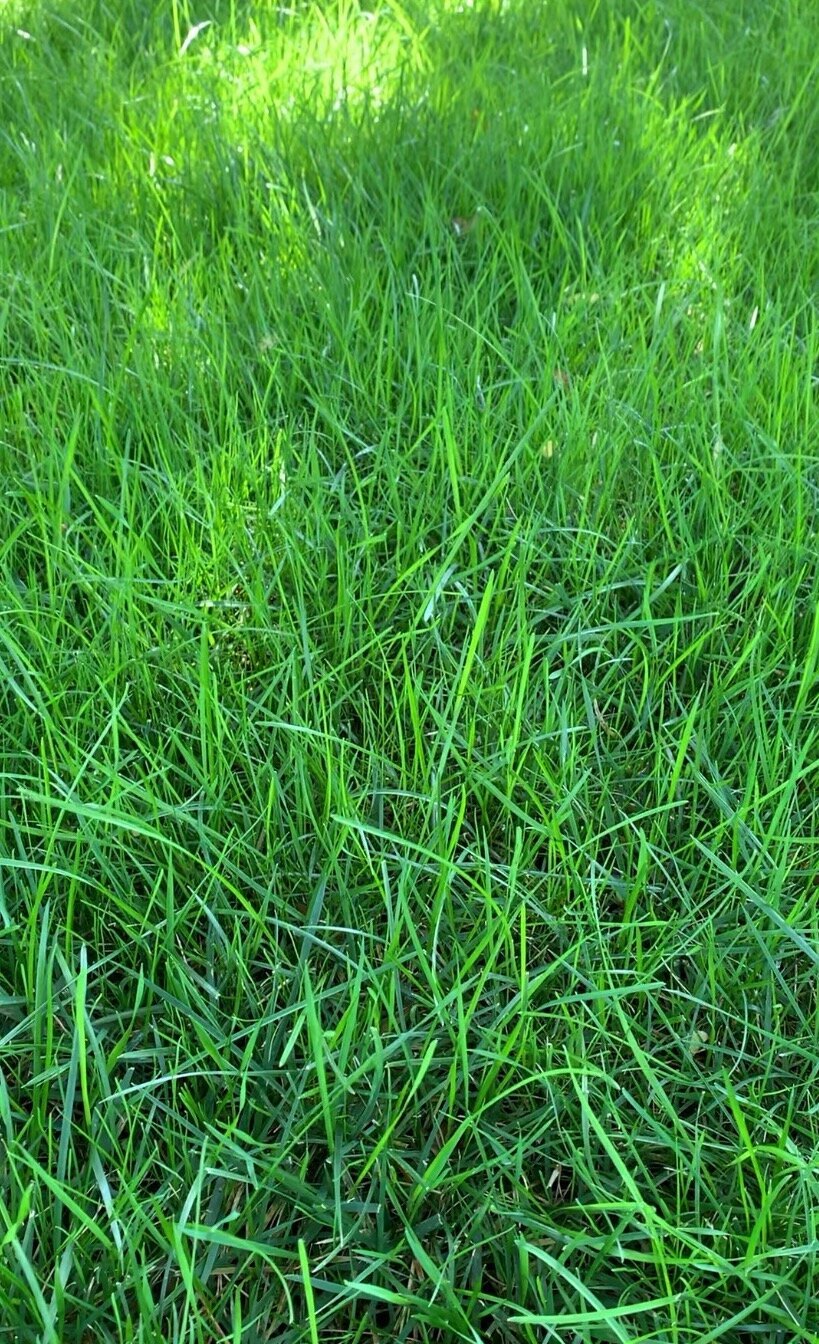
Aeration… the "Then Some” of Lawn Care
A good lawn is the result of several key activities:
1. Correctly timed pre-emergent applications to prevent weeds before they germinate.
2. Applying the right amount of fertilizer to ensure you have a thick and healthy turf.
3. Regularly scheduled mowing that only removes the top 1/3 of the leaf blade each time.
4. Infrequent, deep watering based on seasonal need.
But, there is a 5th activity that too often is overlooked.
George Toma, the greatest groundskeeper in the history of sports, has a saying:
“Do the job and then some. It is the ‘then some’ that
distinguishes the mediocre from the great.”
George Toma played a part in preparing the playing field for every Super Bowl until he retired after Super Bowl LVII at the age of 95. Toma is known as “The Sodfather!”
George Toma, presenting the keynote address at a turf conference several years ago, started his talk by announcing he was going to discuss the three most important things to have a great turf.
His 1st point was Aeration.
His 2nd point was Aeration.
And, you guessed it, his 3rd point was Aeration.
What are the benefits of aeration?
Soil compaction is reduced.
Air movement into the soil is improved.
Fertilizer can quickly reach the root zone.
Water runoff and puddling is reduced.
Roots grow stronger and deeper.
Thatch is reduced.
Reduction in weeds that thrive in compacted soils.
For George Toma, the “then some” that distinguishes the mediocre lawn from a great lawn is aeration.
Aerification is a must!
If your goal is to have your best lawn possible, aeration is a required step in your lawn care program.
What is aeration?
Aeration is the process of mechanically removing 2”-3” cores of soil, 4”-6” apart, from your lawn.
Compact soils prevent grass from establishing a healthy root system and prevent air, water, and nutrients from reaching the root zone. Walking, playing, and mowing (in other words everything you do on your lawn) increases soil compaction.
As Oklahomans, we know about tight clay, compacted soils. Our clay soils make growing a great lawn a challenge.
Too often we accept soil compaction as just the way it is and settle for the status quo of an average lawn.
Stop accepting the norm!
You don’t have to struggle with the results of growing a lawn in tight, compacted soil.
Golf courses typically aerate their turf at least two times per season. No wonder the fairways look so much better than most home lawns.
Lawns with compacted soil also are more susceptible to weed development. Most weeds thrive in tight compacted soil.
Nutsedge, one of the most difficult to control summer weeds, thrives in tight soils. Our experience has shown that annually aerated lawns have far less problems with nutsedge.
Why do golf course fairways always look so good? Turf managers know the importance of aeration. The secret to a great lawn is a great root system. Annual aeration is the ticket to a great root system.
Should the cores be removed or left on the lawn?
Leave the cores on the lawn. As they breakdown and dissolve, they will refill the holes with loose soil resulting in improved soil structure. The cores will break up and settle back into the lawn within a few weeks.
When should you aerate?
Warm season lawns (Bermuda and zoysia) should be aerated any time after spring green-up and before the end of July.
Cool season lawns (fescue) should be aerated in the fall, September through October. Aeration in conjunction with overseeding will not only improve the soil structure, but it will also improve seed soil contact resulting in better seed germination.
Now through the first half of the summer growing season is the best time to aerated lawn Bermuda, a warm season turf.
Nothing will take your lawn from good to great more than an annual aeration!
One more Toma saying… “The most important part of grass is the soil and the root system.”
Aeration is the best way to improve the soil structure and develop a stronger root system.
Aeration, the most overlooked lawn practice, will give you a healthier, more vigorous, less weedy lawn.
To achieve your best lawn, annual aeration is a must.
Lorne Hall
Hall | Stewart Lawn + Landscape
(405)367-3873
The Joy of Spring
What a week in the landscape!
Last weekend didn’t feel like spring. But, with one final, late cold spell in our rear-view mirror, the landscape has exploded with color this week.
The much needed rainfall has delivered us greener turf, more trees adding leaves, colorful perennials, bulbs, shrubs and trees in every pocket of the Oklahoma City metro area.
Every spring feels a little different. The timing of blooms. The length of blooms. Every spring another plant is going to captivate our attention. Every spring there is another plant that just seems a little more dynamic than it has ever been.
What are your favorite spring blooming plants?
Are you like me? Your favorite is, “All of them!”
Let’s spend a few minutes reviewing some of the tried and true spring blooming plants you can count on adding beauty and joy to our world year after year.
PERENNIALS
Creeping Phlox
Creeping Phlox. The first to welcome spring each year. Creeping phlox produces a spring-like carpet in pastel hues of white, lavender, red and pink. Creeping phlox is a moderate grower that can spread up to 2’ but only reaches 4-6” in height. It requires full sun but will tolerate a couple hours of shade each day. Borders, walls, and around boulders are where it looks best. In my garden, you will find it cascading over a rock retaining wall. It tolerates most soil if it is well drained. The plant requires little maintenance. Mites are about the only insect problem it will have.
‘May Night’ Salvia. Sage type flower spikes of deep bluish-purple that will add color in April, May, and early June. The best flower show will be in full sun, but it will tolerate a little dappled shade each day. The plant grows 12-18” tall with flower spikes reaching 24”. The plant looks great in the middle of the garden planted behind creeping phlox or dianthus, and in front of Shasta daisy or Black-eyed Susan. The leaves often become tattered later in the summer and become dormant over the winter. Keep faded blooms removed to maximize bloom period and pruning the plants after blooming may result in a few fall blooms. In the early spring, before new growth emerges, remove the dormant foliage. Salvia tolerates clay soils but will struggle with root rot if the soil stays saturated.
May Night Salvia
Dianthus. It works well as a border, in small groupings, around boulders or as a single plant reaching 10-15” tall with a spread of 12-24”. They bloom in late spring in rose, pink, white, and red. They like full sun but will take some dappled shade or afternoon shade. Just like creeping phlox, they are a cool season lover. They will grow in most soils, prefer alkaline soils, but waterlogged soil will cause crown and root rot. Heavy mulching near the crown of the plant can be detrimental. Late March through April and into May is the peak bloom time. Light feeding in the spring with a complete fertilizer of phosphorus, potassium and low nitrogen is recommended. Other than occasional aphid or powdery mildew issue, they do not have many problems. There are more than 300 varieties of dianthus to choose from. My all-time favorite is ‘Firewitch’. It has a silver-green foliage with a vibrant pink bloom.
Dianthus
Dianthus and May Night Salvia
SHRUBS
Forsythia.
Forsythia. Best grown as a specimen shrub where it can show off its naturally stunning shape. Forsythia’s brilliant yellow flowers are the first to welcome spring. It performs best planted in full sun and will grow in partial shade, only with less spring blooms. It is considered a fast grower. Forsythia adapts well to most soils but prefers well drained. It rarely has an insect or disease problem. Pruning should only occur after spring blooms fade. If you prune later in the year, you will reduce blooms the following spring. The best way to prune this shrub is to remove older wood all the way to the base of the shrub. Traditional forsythia will grow to 6-8’ with an 8’ spread and are well suited for large lawns. If you have a smaller yard, look for one of the newer varieties, such as Gold Tide (Forsythia ‘Courtasol’), a dwarf variety that only reaches 2’ high and spreads to 4’.
Bridal Wreath Spirea. A medium sized shrub with arching branches covered with an abundance of white cascading flowers in mid spring. It is a very hardy, heirloom shrub, with no specific pest issues that thrives in well drained soils. It attracts hummingbirds and butterflies. To preserve the natural arching shape avoid sheering but if pruning is needed, it is best done in the spring after blooms fade. It looks stunning planted in full sun to partial shade in front of darker structures or large hollies. Spiraea nipponica ‘Snow mound’ is another great variety.
Bridal Wreath Spirea.
Flowering Quince.
Flowering Quince. Another early bloomer known for adding splashes of red to the landscape. It also performs best in full sun and tolerates partial shade but with fewer blossoms. Considered a moderate grower and mid-sized shrub, most varieties reach 4-5’. It does best if planted where it can grow to its natural size and shape. If pruning is required, only prune in the spring after blooms have faded. Flowering Quince is loved by butterflies and hummingbirds. The plant is very drought tolerant once it is established and it will tolerate most soil, but like most plants would enjoy well drained areas. Another variety, Chaenomeles speciosa Double Take Series, has blooms that resemble camellias.
Flowering Quince buds are staring to pop.
Snowball Bush is another great spring show piece that is just starting to add interest to the landscape.
Snowball Viburnum. There are many varieties of viburnum, but the old fashion Snowball Viburnum with its masses of large, pure white, snowball sized blooms is still my favorite. Blooming from mid spring to early summer, if it wasn’t for the time of the year, it could easily be mistaken for a Limelight Hydrangea. A large shrub that can reach 10’ high and 10’ wide. Easy to care for. Tolerant of most soils but prefers well drained soils. Plant in full sun to partial shade. Oh, and it is perfect for cut flower arrangements.
Snowball Viburnum
Azaleas. There are too many varieties and nauseas to summaries in a single paragraph. But, right now, it is hard not to fall in love with azaleas. They are undeniably the most dynamic spring color plant for shady locations. And yes, you can grow them successfully in central Oklahoma, but they are not a no care, low maintenance plant. We often dedicate an entire article to growing azaleas in central Oklahoma this time of year. To learn more about azaleas, spend a few minutes reading our post from last April: https://www.hallstewart.com/hsblog/growing-azaleas-in-central-oklahoma
Shrubs such as Double Play Candy Corn Spirea add interest to the spring landscape as their new foliage emerges.
TREES
Oklahoma Redbud.
Redbud. My all-time favorite “Welcome to Spring” plant. (You can on us dedicating an entire article to Redbuds every spring.) Reddish purple blooms appear on branches before leaves appear. The ‘Oklahoma’ variety was discovered in the Arbuckle Mountains and known for its glossy, heart-shaped, green leaves in the summer. It grows to 15’-20’. Preferring full sun but does well as an understory tree in dabbled shade. For more Redbud love, visit our article from March: https://www.hallstewart.com/hsblog/the-redbud-oklahomas-state-tree
Redbud.
Oklahoma Redbud
Oklahoma Redbud
Redbud buds are swelling up!
Crabapple.
Crabapple. There are many varieties of crabapples, but ‘Prairifire’ is one of the best. It was the Oklahoma Proven tree of the year in 2007. It is disease resistant and not fazed by most of the problems with crabapples. Flowers of rose-pink cover the tree as soon as leaves emerge. Young leaves go from purple-red to dark green as they mature. Branches have red fruit in the winter. Mature, 20-25’, trees have a rounded top. Plant in full sun as a specimen tree or in a grouping. Water extra during periods of extreme heat or drought.
Saucer Magnolia.
Saucer Magnolia. A specimen type tree that reaches 15-20’. Large blooms put on a spectacular show on multi-trunk spreading branches. Blooms range from white to pink to purple. Best if planted in full sun. Plant away from radiant west or south heat where warm spring days may cause buds to develop too early only to be killed by a late freeze. They require regular deep watering in the summer months when leaves become tattered looking. It is best if their roots are protected with a layer of mulch to conserve water in the summer.
Red Baron Peach
Bonfire Patio Peach
Bonfire Patio Peach. With a mature height of 5-6’, its profuse early spring eye-level pink blooms are a real head turner. The dark red to burgundy summer foliage keeps the interest going all season long. The small tree performs best if it receives at least 6 hours of full sunlight per day.
Ornamental Peach Trees add shades of pink to the March landscape.
White Dogwood with Azaleas create a stunning color display in the spring in shady landscapes.
Dogwood. Great understory, slow growing, small to medium sized tree (15-20’) that is loaded with a four petaled flower in the spring. They grow well in shade to partial shade where they brighten the spring landscape with splashes of white, pink or red. Dogwoods need acidic, moist, well-drained soil, similar to azaleas.
A great understory tree, the Dogwood, adds color to shady landscapes in the spring.
The bright red spring leaves of Japanese Maples are sure to catch your attention.
Japanese Maples. Not a blooming tree, but with the bright color of their new spring leaves, it is easy to include them in a list of spring blooming trees. With so many shapes, sizes, and colors, there has to be a variety for nearly every landscape. Japanese Maples have been referred to as the “aristocratic” of the landscape. Several times we have dedicated an entire article just to the Japanese Maple. Click this link to learn more about them: https://www.hallstewart.com/hsblog/2020/4/19/japanese-maples-the-aristocrat-of-the-landscape
Japanese Blood Good Maple
Lace Leaf Weeping Japanese Maple
Spring Bulbs
One of my favorite ways to declare spring is Hyacinths, Daffodils and Tulips!
Last October we wrote about spring flower bulbs, “Plan Now. Plant Next Month. Enjoy Next Spring.” https://www.hallstewart.com/hsblog/plant-now-plant-next-month-enjoy-next-spring
If you were inspired and added spring flowering bulbs to your landscape, you are enjoying a spring full of color.
Don’t miss out next spring! Open your calendar right now to October and write “Plan spring bulb planting!”
A friend talked about being greeted with “What has brought you joy today?” at a local business recently.
What a wonderful greeting!
We hope, as the landscape burst with new life, you find joy in the beauty God creates for us every spring, without fail.
Don’t let the busyness of life rob you of the joy of spring!
Get outside. Go on a walk. Visit a park.
Add a new plant to your landscape!
The beauty of spring is all around!
Lorne Hall
Hall | Stewart Lawn + Landscape
(405)367-3873
The Cost of Watering vs Protecting Your Lawn and Landscape Investment
Awe…April showers!
We are so thankful for the good soaking rainfall!
Over the last 365 days, the Oklahoma City metro area has received a near normal amount of annual rainfall, approximately 34” of total rainfall.
But, if you talked to your lawn and landscape, they would tell you a different story. For them, total annual rainfall doesn’t tell the true story. Since June of 2024, moisture has been very sporadic falling in heavy rain events followed by extended periods of no moisture. Rainfall for the months of July, August, September and November all came in single rainfall events. Between the rain event in mid-September, until the early November rainfall there was a 40-day span without any moisture.
meteorologists tell the story that rainfall has been normal over the last 365 days.
Our lawns and landscapes tell a different story.
Let’s hear it for the return of Spring Showers!
Soon the summer battle will begin:
Cost of Watering vs Protecting Your Lawn and Landscape Investment
We all feel stress over the watering battle. The battle traps us in a cycle of watering one month, followed by an excessive water bill, followed by less watering, followed by signs of drought stress in our lawn and landscape, followed by increased watering, followed by an excess water bill…. the cycle never seems to end.
Water is the most abundant substance on earth, and ironically it’s our most threatened resource.
Is there another option?
Hall | Stewart set out to find another option last summer and experimented with Hydretain on a few lawns.
What is a Hydretain?
Hydretain is a unique root zone moisture management product that reduces the overall watering requirements of lawns and landscapes.
Hydretain is a blend of hygroscopic (absorbing or attracting moisture from the air) and humectant (helps retain moisture) components that attract moisture. In other words, it acts like tiny “water magnets” that form microscopic droplets within the root zone. It protects landscapes from drying out between rainfall and watering cycles. The result is a healthier, more vigorous and more drought resistant lawn and landscape.
Hydretain test plot
Hydretain advantages:
Maximize soil water availability and reduce irrigation frequency.
Manage soil moisture to help plants withstand periods of drought and watering restrictions.
Reduce water use and water cost.
Maintain a green lawn with less water.
Control or eliminate dry spot problems.
Enhance nutrient uptake.
Non-toxic, safe around pets and children.
Moisture is critical to the health of your lawn and landscape.
All plant processes require water. Without adequate water, plants cannot function or survive. Water facilitates a critical balance of moisture, air, and nutrients available to the roots. When soil begins to dry and roots can no longer absorb adequate water, plants enter drought stress. This process is not limited to long term drought or neglect. It happens regularly when soil dries between normal rainfall of irrigation cycles. Regular periods of drought stress impact the plant’s ability to defend itself against insects and diseases.
Results of Our Experiment Last Summer:
Lorne’s Fescue Lawn – Following an application of Hydretain in July and watering the product in thoroughly, the irrigation schedule was changed from an EVEN day watering cycle to an every FOUR day watering cycle.
One week after the application was made the lawn received ¾” rainfall over a 4-day period and then no rainfall for 15 days. In the 30 days after the application was made, the average high temperature was 95 degrees with 7 days 100 plus.
The fescue lawn maintained a consistent rich green color and showed no signs of heat or drought stress the rest of the summer.
The result was a monthly water bill 33% less than the previous July and August.
Lorne’s Fescue Lawn - Picture from last August, 30 days after Moisture Retention Application with every 4 Day watering cycle.
Tom’s Bermuda Lawn – The lawn was divided into three areas. One area received an application of Hydretain and was watered once per week with a hose end lawn sprinkler receiving 1” of water each time it as watered. The second area received an application of Hydretain but was not watered the rest of the summer. The third area did not receive an application of Hydretain and only received rainfall.
The area received a ½” of rain in mid-July and then went without moisture until a heavy rain in mid-August.
The bermuda lawn that was treated and watered maintained a green, thick healthy appearance through July and August. The area that received a Hydretain treatment but not watered retained a significantly more color and showed less drought stress than the area that was not treated.
Tom’s Bermuda Lawn Area 1 - Picture taken in August ‘24 one month after Moisture Retention Application, deep watering once per week.
Tom’s Bermuda Lawn Area 2 - Last August one month after Moisture Retention Application. Area received 1/2” of rain 3 weeks before picture was taken and without receiving any supplemental water.
Tom’s Bermuda Lawn Area 3 - No moisture retention application was made. Picture was taken the same day as Area 1 and 2 pictures.
Introducing Hall | Stewart’s Moisture Retention Program
Two Applications per Year Recommended: Spring and summer, approximately 90 days apart.
Application #1 April - May
Application #2 July - August
For best results, water immediately after application is made, or at least within 3-5 days. Water thoroughly allowing the product to completely penetrate into the root zone. It will not be functional until it is properly watered in. Delay mowing until the product is watered in.
For continued effectiveness, a Moisture Retention Application is recommended every 90 days.
The Moisture Retention Program does not replace the need for Lawn Care Applications. A proper fertilization program will enhance the results of a Hydretain application.
Is your lawn ready for a hot and dry summer?
Let us get your lawn ready with our Moisture Retention Program. You will save money and use less water.
Call (405)367-3873 or respond to this email with questions, to request a price, and/or to schedule our Moisture Retention Program.
Lorne Hall
Hall | Stewart Lawn + Landscape
(405)367-3873
April Lawn & Landscape Tips
Awe…April…there are not enough words to describe April.
April…the month the color of Fescue lawns become more vibrant every day.
April…the month Bermuda lawns shake off the winter brown and every day add more green.
April…the month you discover another perennial, shrub or tree is adding splashes of color every day.
April…the month you just want to be outside every day.
April…is the month something is coming to life every day.
April is a big month for your lawn and landscape. It is the transition month between cool weather and warm weather and so many important tasks need our attention.
The first purple blooms will grace wisteria vines this month.
What a spring for tulips! The colors have been spectacular and without extreme cold or hot weather they just keep going and going and going.
April is the month Fescue lawns make a big statement. If you have fescue it is time to start mowing every 5-7 days.
There are many varieties of Viburnum that grace the landscapes in April.
Henbit is a winter annual broadleaf weed know for purple flowers. If you want a clean lawn in April, don’t skip the two fall pre-emergent weed control applications.
April is the month Flowering Crab Apples shine!
Salvia start adding blue to purple spikes this month. May Night Salvia is a great companion perennial to dianthus.
Turf Fertilizer
Both Fescue and Bermuda lawns will benefit from a fertilizer application this month. If you subscribe to the Hall | Stewart 7-Step Lawn Care Program, your lawn will receive fertilizer. If you subscribe to our 4-Step Weed Control Only Program, apply fertilizer to your lawn this month. Look for a fertilizer with 25-30% nitrogen and a small amount of phosphorus and potassium.
It is hard to beat the deep green color of fescue in April.
Dianthus is a perennial that starts putting on a show in April.
Turf Weed Control
The second spring pre-emergent application started in March and continues through April. A second spring pre-emergent is important because pre-emergent herbicides gradually break down overtime. A second pre-emergent extends weed prevention through the summer months. April is a good time to get control of broadleaf weeds in Fescue, but while Bermuda is coming out of dormancy you must be careful with herbicide applications not to cause damage. Good turf development now is the key to a healthy lawn all summer and you don’t want to cause any harm while warm season turf is coming out of dormancy.
Our promise to you is to take all the steps we can to remedy weed issues in a way that is safe for your lawn and the environment.
Our request is that you always let us know how your lawn is doing 10-14 days after an application.
If the lawn needs to be retreated, results will be better if it occurs within 2-3 weeks of the initial application.
Poa Annua, annual bluegrass, is a winter annual that weed that is easier to prevent with fall pre-emergent herbicides than it is in the spring.
With soil temperatures in the mid 50’s, bermuda lawns are starting to green up. As soil temperatures reach into the 60’s, they will begin to actively grow.
In the right location, a place with dappled or morning sun with acidic, well drained soil, Dogwoods add a splash of brightness to the landscape this month.
One of the first perennials to bloom each spring is creeping phlox.
Tree & Shrub Care
April continues to be a good time to fertilize trees and shrubs with slow-release nitrogen, high quality phosphorus and potassium as well as micronutrients to provide consistent, extended feeding. This formulation is ideal for improving tree and ornamental development and vigor without unwanted shoot growth. Spring is also a good time to apply systemic insecticide to control sucking and chewing insects. As temperatures warm start inspecting plant material for insect activity. Early detection is an important part of insect control.
Hall | Stewart Lawn + Landscape follows an integrated pest management approach, which starts with inspecting trees and shrubs and treating as needed.
Important: Unhealthy trees and shrubs, those that are under stress, are more susceptible to insect and disease problems. Put your plants on your calendar for a frequent inspection. Be ready to treat problems as they arise.
Need help protecting your landscape investment?
Give us a call, (405)367-3873 or respond to this email.
Our Tree & Shrub Care Specialist would love to make a visit to evaluate the health of your landscape plants.
Shrub Pruning
April is the last chance to do early season pruning on crape myrtles, hollies and ornamental grasses. On crape myrtles, remove any crossing or rubbing branches, cut off last year’s left-over seed heads, and any branches off that are smaller than a pencil. Overgrown hollies can still be reduced in size if you do it soon. The goal is to do any major pruning before the first heavy growth flush of the year. On ornamental grasses, cut them down to about 1’ before new growth begins to shoot up from the grass clump. Now that hydrangeas have started to bud, you can prune dead branch tips back to just above the highest bud.
For more information on Hydrangea varieties and care, visit our post from last week: https://www.hallstewart.com/hsblog/hydrangeas
Oh, the colors of new leaves on Japanese Maples!
Creeping Phlox, one of the first perennials to bloom, are putting on a show.
Deciduous (plants that drop their leaves in the winter) shrubs, such as abelia are coming to life.
Flowering Quince is an old fashion shrub that provides a show of red March to April.
Love peonies? Look for their blooms to burst open before the end of April.
Looking for a shrub that will add a fun splash of orangish red to your landscape in the spring? The leaves of Double Play Candy Corn Spirea emerge with a bright candy apple red and then mature to a bold yellow.
Lawn Maintenance
If you have a Fescue lawn, April is the month that you will need to start mowing regularly. Remember the rule of 1/3 – never cut more than 1/3 of the turf off in a single mowing. Anytime you cut more than 1/3 of the leaf blade off you are keeping your lawn from looking its absolute best. Start mowing the Fescue taller in April. It needs to have as much leaf space as possible going into the summer months.
If you have a warm season lawn (Bermuda or Zoysia) and have not already cut the lawn short for the spring, do so as soon as possible. Once the lawn starts growing it will need to be mowed every 10-14 days during a typical April. Try to keep your Bermuda lawns cut short early in the season by mowing often enough that you never remove more than 1/3 of the leaf when mowing.
Seasonal Color
We all have the tendency to get a little antsy and want to plant annuals a little too early. Who can blame you? With all the colorful plants already in the garden centers, it is hard to resist. Start with annuals that tolerate a few cool nights, such as begonia and impatient, and wait until May to plant heat loving annuals, such as periwinkle, lantana, penta.
Note: Go ahead and open up your calendar now and set yourself a reminder for next fall. Yes, next fall. We don’t want you miss out on planting spring flowering bulbs such as tulips, daffodils, hyacinths etc. You won’t regret it!
Oakleaf Hydrangeas are leafing out.
April = Tulips! Take a stroll through the Myriad Gardens this week.
Irrigation
As the weather warms in April, your lawn and landscape will start needing more routine watering. If we go more than a week without a ½” rainfall, you need to start watering. Remember to follow the odd/even watering restrictions. If you have a rain sensor, it will interrupt the cycle when we receive rain. If you don’t, please remember to turn your system off when we get a good rainfall.
If you don’t have a rain sensor, consider having one installed.
A sensor will pay for itself in water savings very quickly.
Creeping Phlox adds interest to landscape edges and stone borders.
Bridal Wreath Spirea brighten the landscapes this month.
Ornamental Peach trees are benefiting from the slow warm up this spring.
Flowering Crabapple trees are demanding attention in the landscape.
Maynight Salvia is one of the perennials that will add color this month.
One of my April favorites, Saucer Magnolia.
Start planning now to plant bulbs this fall for spring color next year.
April is the month azaleas dazzle us with an explosion of colors.
Now, go get outside!
The world is bursting with new life!
If you have any questions about your lawn or landscape, please send us an email or call (405)367-3873.
Lorne Hall
Hall | Stewart Lawn + Landscape
(405)367-3873
Picture of the Week:
Dogwood - Known for the graceful flowers that arrive around Easter every spring. They are a small tree that needs to be out of the full sun making them a great understory addition to your landscape.
Hydrangeas Varieties and Care
Hydrangeas have a reputation for being difficult to grow, fussy and high maintenance. That was true of old fashion, traditional hydrangeas that only bloom on last year’s growth. It was common for a late spring freeze to damage buds resulting in little or no blooms, or a pruning mistake would also result in no blooms.
But, the world of hydrangeas keeps changing…every season the hydrangea options get better and better. New varieties just keep coming. Take a stroll through a local nursery and you will be surprised at all the hydrangea options.
First Hydrangea blooms from last May.
The introduction of the Endless Summer Hydrangea in 2004 from Bailey Nurseries with the help of Dr. Michael Dirr from the University of Georgia resulted in what many claim is the best-selling shrub of all time.
The Original Endless Summer Hydrangea
Little Lime Hydrangeas is a shorter option for smaller gardens.
Dirr had been trying to develop a re-blooming hydrangea for years with no success. Then in 1998, Dirr was visiting Bailey’s test field where he found hydrangeas in full bloom…in September! Bailey Nurseries had been propagating and testing a plant they had found in St Paul, MN for 10 years with success. The plant was unique because it bloomed in the spring on last year’s growth, like a traditional old-fashioned hydrangea, and rebloomed on the new growth during the summer and into the fall.
Dirr immediately knew it was “a game changer” for hydrangeas and quickly coined the name ‘Endless Summer’.
Endless Summer Hydrangea will continue to bloom into the fall.
The Original — big round blue or pink blooms
Blushing Bride - pure white blooms that mature to a pink blush.
Twist-n-Shout — reblooming lace-cap in pink or periwinkle blue with red stems.
Bloom Struck — purple or rose-pink flowers with red stems.
Summer Crush — a 2019 introduction with raspberry red or neon purple flowers with a compact growth.
Summer Crush Endless Summer Hydrangea
Pop Star – Introduced in 2023, Pop Star is a compact, big-leaf hydrangea that only grows 18-26” high and wide. It is the quickest Endless Summer to rebloom.
Original Endless Summer Hydrangea in the fall.
The Endless Summer Hydrangea is like traditional hydrangeas in that they prefer morning sun and afternoon shade.
Want to learn more about Endless Sumer Hydrangeas? Follow this link: https://endlesssummerhydrangeas.com/
Another hydrangea “game changer” is the Limelight. Limelight is a summer blooming hydrangea that grows in full sun!
A plant breeder in the Netherlands crossed two unidentified panicle hydrangeas and the outcome was a full sun, summer blooming show in the hydrangea family. Limelight Hydrangeas received a US Plant Patent in 2002.
I first noticed them years ago growing around a parking lot in downtown Oklahoma City in the middle of summer with vibrant white blooms planted in full sun. Of course, I circled the block, took lots of pictures, and started my search to find the name of the plant.
Limelight has become one of my favorite plants.
Limelight varieties:
Limelight (Original) – Blooms in mid to late summer on new growth. Flowers start green, turn to white and then back to green. Limelight is typically large 6-8’ tall multi-trunked shrubs or can be trained into a single-trunked tree formed large shrub.
Limelight Prime – All the characteristics of the original but a little smaller, 4-6’, and sturdier stems. Also, the flower color is more vivid than the original.
Little Lime – Great for smaller gardens and small pockets in the garden. Grows to 3-5’ tall.
Want to learn more about Limelight Hydrangea varieties? Follow this link to a Monrovia article: https://www.monrovia.com/be-inspired/best-panicle-hydrangea-varieties.html
Limelight Hydrangeas make a big statement grown as a single-trunked small tree.
Bobo Hydrangeas are another dwarf variety of Limelight Hydrangeas. They grow in full sun to partial shade and produce large white blooms that turn pink. A characteristic of Bobo Hydrangeas is the strength of their stems. Unlike some panicle hydrangeas the blooms don’t weigh down the stems and flop over.
Limelight Hydrangea blooms gradually go from white to lime as they mature.
Limelight – Blooms in mid to late summer on new growth. Flowers start green, turn to white and then back to green. My favorite thing about Limelight is that it grows in full sun. A hydrangea game-changer: Summer blooming hydrangea in full sun! Limelights are typically large 6-8’ tall multi-trunked shrubs or can be trained into a single-trunked tree formed large shrub. For smaller areas, try the Little Lime or BoBo Hydrangeas which grow to 3’.
Limelight Hydrangea blooming in August in full sun.
Think you have to have a shady landscape to enjoy hydrangeas? Not the case with the Limelight Hydrangea. It grows in full sun with large lime to white blooms in mid-summer.
Fire Light Hydrangeas in the Myriad Garden in downtown Oklahoma City.
A late spring to early summer blooming hydrangea is the Oakleaf Hydrangea. The Oakleaf is one of only two hydrangea species native to the US in the SE from North Carolina, south to Florida and west to Louisiana.
Oakleaf Hydrangeas are named for the deeply lobed oak-like foliage. They grow 4-8’ tall and wide with a rounded habit. The white cone shaped flower clusters fade to pink in the summer and leaves turn deep red hues in the fall.
The Oakleaf prefers morning sun and evening shade. Too much shade and they become leggy, have fewer blooms and poor fall color.
Oakleaf – Instead of traditional mophead blooms, oakleaf hydrangeas have white clusters of cone shaped flowers. It is named for the large oak-like leaves that turn reddish-purple in the fall. It is a large shrub that blooms in the summer on new growth. It also requires less water than a traditional hydrangea.
Oakleaf Hydrangea
Oakleaf Hydrangeas is a large shrub that can reach 5-6’ with long, cone-shaped white flowers with large oak-like leavers that turn bright red in the fall.
Oakleaf Hydrangea in the Dallas Arboretum.
Oakleaf Hydrangea leaves in the fall turn vivid shades of red and purple.
Oakleaf Hydrangea with Endless Summer in the background.
Other favorite hydrangea varieties:
Annabelle – A smooth hydrangea with white blooms on the new growth. Because it is fast growing, it is common for this hydrangea to be cut all the way to the ground each spring.
Phantom – Similar to Limelight but with color changing blooms that start in mid-summer as greenish white then gradually change to a blushing pink as summer transitions into fall. Phantom also grows in full sun.
Seaside Serenade Series by Monrovia – A more compact form of hydrangea ideal for smaller areas that blooms on both last year’s growth and new growth.
Pruning Hydrangeas
Most gardeners feel uncertain and confused about when and how much to prune hydrangeas. The truth is most hydrangeas do not need to be pruned at all. Occasionally, you may need to prune for shape or size, or remove some dead wood, but most seasons pruning can be skipped.
It is common to have some branch die back after the winter in our area. A common mistake is to get in a hurry when pruning back the winter damage. Be patient, don’t get in a hurry to remove dead branches. Wait until April before pruning off the dead branches. Pruning earlier, or pruning to the ground in the spring, could reduce or eliminate blooming this season. When it is time to prune back the dead ends, make your cuts at an angle just above the highest green bud.
When more pruning is required, it is important to know the type of hydrangea you have to know the right time to prune.
Bigleaf, Mophead, French Hydreanes. They bloom once per season in the early summer on old wood, meaning their buds are formed on last year’s growth. Pruning should be done during the summer. If they have become overgrown, remove up to ½ of the total stems by cutting them all the way to the ground. The plant will produce strong new stems that will flower next season. Nikko Blue is an example of this type of hydrangea.
Smooth Hydrangeas. They bloom on new wood, meaning buds are formed on new growth in the current season. Pruning should be done in late winter to early spring. Older smooth hydrangea varieties can become floppy and unruly. Don’t be afraid to prune this variety aggressively. Annabelle is an example of a smooth hydrangea.
Panicle Hydrangeas. They also bloom on new wood. Panicle hydrangeas rarely need to be pruned. But, if they were overgrown last season, prune up to 1/3 of the plant before they leaf out to create a more compact, rounded shape. Limelight is a panicle hydrangea.
Oakleaf Hydrangeas. Oakleafs like to be left alone. Pruning should be limited to removal of dead or broken branches. They bloom on old wood, so if there is a need to prune to improve the shape of the plant, pruning should be done in the summer after it finishes flowering.
Reblooming Hydrangeas. Hydrangeas that bloom on both old and new wood. Early in the season they bloom on the old wood from last season. During the current season they bloom on current season growth. All they really need is deadheading of spent flowers and removal of dead stems. The Endless Summer and Seaside Serenade series are examples of reblooming hydrangeas.
Reblooming hydrangeas in June at the Dallas Arboretum.
Wait until late April to early May to prune the dead from your Endless Summer Hydrangeas.
Oakleaf Hydrangeas rarely have winter die back and are best left alone.
Leaving faded blooms on hydrangea will add interest changing color as they fade.
Deadheading Hydrangeas
Deadheading is the practice of removing spent blooms. You can deadhead hydrangeas, but you don’t have to. Deadheading can increase blooms but is mostly done to keep the plant looking neat. Some gardeners like to leave spent flowers on the plant for seasonal interest as they will change color as they fade. If you do deadhead, prune right above the first set of leaves below the spent flower. Cutting lower will remove emerging buds.
If you don’t deadhead your Endless Summer Hydrangeas the spent flowers will add color to your landscape in the fall. This is the Endless Summer Hydrangea in front of the Hall | Stewart office in October.
Planting Hydrangeas
Hydrangeas prefer rich, well drained soil in a location with morning sun and dappled to full shade in the afternoon and evening. The exception is the Limelight Hydrangea which can be planted in full sun. When planting in our tighter clay soil, start with a hole twice as big as the plant container. Incorporate compost and peat moss into the existing soil, fill the bottom of the hole with enough soil that the root ball will be slightly above the existing grade. Backfill around the root ball with the remaining mix of soil and amendments creating a ring outside the root ball creating area to retain moisture when watering.
Hydrangea Watering
Hydrangeas require more water in the heat of the summer. They perform best in soil that retains some moisture but does not stay wet. It is common for their leaves to wilt slightly on 90+ degree days and then rebound quickly when watered. A good deep soaking every other day in the summer is enough. A 2” layer of mulch will help retain moisture.
Endless Summer Hydrangeas are usually pink in our soils because of the pH being over 6. Sulfur can be used to lower the pH and turn the blooms blue.
Changing Hydrangea Flower Color
Excluding white hydrangeas and many of the new reblooming hydrangeas, soil is the greatest determinate to whether the flower blooms will be blue or pink. Soil with a pH below 6.0 (acidic) will have blue blooms. pH above 6.0 (alkaline) will produce pink flowers. Adding lime to the soil will change blue blooms to pink and adding sulfur will change pink blooms to blue. Endless Summer has a formulated product called Color Me Pink which adds lime to the soil to produce pink blooms and Color Me Blue which adds sulfur to encourage blue blooms. Similar products are avaible from Bonide.
Hydrangea Fertilizer
Hydrangeas respond well to fertilizer in the spring and early summer. Select a slow-release fertilizer that is high in phosphorus, the middle number on the fertilizer label. Phosphorus produces more blooms. If you fertilize with high nitrogen, the first number on the label, you will have more and larger leaves and less blooms.
Hydrangeas are starting to bud. Wait until April to prune. Prune just above the highest bud on each branch.
Bonus Info: “Why aren’t my Endless Summer Hydrangeas blooming?”
Pruning – The most common blooming problem is a result of over pruning and pruning at the wrong time. Remember, it is best not to prune them at all. Really the only pruning recommended is at the beginning of the season to remove the brown stems left from the winter. Wait until April to prune and then only prune back to the first bud. During the summer, if you want to you can snip off spent blooms, but it is not required. Otherwise, keep the pruners and shears away from your hydrangeas. And…never prune in the fall.
Fertilizer – Hydrangeas needing fertilizer or having been fertilized wrong will always disappoint. As mentioned above they need slow-release high phosphorus fertilizer. If you are using a high nitrogen, low phosphorus fertilizer, you will have lots of pretty leaves and no blooms. Just remember – use a fertilizer with a low first number and a high second number.
Water – The right amount of water will make a difference. You don’t want the plant to be too wet or too dry. It is ok if they droop in the afternoon heat, but if they are still droopy in the morning, they need a good watering.
Sunshine – Hydrangeas bloom best planted in morning sun with dappled afternoon shade. When planted in a hot location such as on the south or west sides of a structure, they need to be protected from the scorching afternoon sun. The bottom line is you don’t want them to fry, and you don’t what them to go without some sun.
Soil Problems – What you plant your hydrangeas in will impact the results. Hydrangeas require well drained soil with a good amount of organic material. In our native soils it is best to adjust the soil when planting with ample amounts of pine bark, peat moss, and/or pecan hulls.
This Endless Summer Hydrangea was added to the landscape last spring and the homeowner was rewarded with extra large blooms this June.
I believe that there is a hydrangea just right for nearly every landscape.
Yes, they require a little more work when planting, and a little more attention to water, but otherwise they are not near as fussy as you would think.
Survey your landscape.
Pick a spot.
Take a trip to a landscape nursery.
Select the perfect hydrangea for your landscape.
It’s worth a try!
Lorne Hall
Hall | Stewart Lawn + Landscape
(405)367-3873
Oklahoma's State Tree... the Redbud!
Are you ready?
Ready for….
One of the best reasons to love Oklahoma!
Redbuds are on the edge of putting on their annual color show!
Who doesn’t love spring in Oklahoma while the Redbuds are celebrating spring?
You have to love some of Oklahoma’s crazy state symbols:
Our state floral emblem is Mistletoe. Really? Mistletoe is an unwanted parasite that harms trees.
Our state vegetable is the Watermelon. Watermelon? Watermelon is a vegetable? Well, come July I’ll be eating a lot of vegetables!
But, when it comes to a state tree, Oklahoma couldn’t have selected a better tree.
There is no better flowering tree than the Redbud, especially the ‘Oklahoma’ Redbud.
Michael Dirr, easily considered America’s leading woody plant expert, wrote in his textbook Dirr’s Hardy Trees and Shrubs about Redbuds:
“No equal, no competitor, can be found among small flowering landscape trees – the stage is reserved for this native species.”
I agree!
Eastern Redbuds are native to the Eastern US from Massachusetts to Florida extending west to Kansas, Oklahoma, and Texas. In the native landscape, you typically see them as understory trees in wooded areas.
From mid-March to early April, you can’t miss them. Their pink to lavender flowers brighten the landscape before leaves bud on most trees. They grow in full sun and partial shade. They tolerate clay, loam, and sandy soils. They adapt to a wide range of soil pH as well as soil moisture.
But, the native Eastern Redbud has its shortcomings. During the summer, the leaves are a disappointment in Oklahoma. The hot winds of July and August leave the native Redbud leaves tattered and bruised.
Thankfully, Oklahoma has an answer to the Eastern Redbud –
the ‘Oklahoma’ Redbud, Cercis Canadensis var. texensis ‘Oklahoma’.
The ‘Oklahoma’ Redbud has a deeper purple color bloom and a waxy, thick, dark green, heart-shaped leaf. The ‘Oklahoma’ is far richer in color in the spring and carries beautiful foliage through the hottest of summers. In the fall, the leaves turn golden yellow.
‘Oklahoma’ Redbuds can be used in every imaginable landscape application. They are excellent lawn trees. They are dynamic in groupings. And they add interest to landscape beds.
Redbuds grow 15-18’ tall and have a spread of 15’ at maturity. Their small tree nature tends to produce a low branching, rounded top-growing pattern.
The Redbud rooting pattern can lead to difficulty in transplanting. When selecting a balled and burlap tree, it is best if the tree is harvested and replanted during the dormant season. A good size to start with is a 1.5” to 2” caliper tree (Tree caliper is the diameter of the tree trunk measured 6” above the soil). If you are planting a Redbud during the growing season, I would recommend purchasing a container grown tree, as there is less transplant shock.
A redbud in Oklahoma City that is starting to bud this week.
Other varieties of Redbud include:
‘Forest Pansy’ which has a shimmering, reddish-purple leaf. This Redbud is a real winner in the spring. But, in the early summer the leaves fade worse than the Eastern Redbud leaves. If you decide to try this variety, select a place in your landscape where the tree will be shielded from the hot west sun and southern winds.
‘Texas Whitebud’ is a white blooming variety of the ‘Oklahoma’. It also has waxy, dark green leaves through the summer.
'Avondale' is a little smaller, reaching only 10-12' in height and width. It is one of the most profuse flowering redbuds with very showy dark rose-purple flowers. It also has a glossy, heart-shaped leaf.
'Lavender Twist' is a weeping redbud with rosy-pink flowers. The umbrella branching pattern only reaches 5-6' tall making it a good specimen for a focal point in the landscape.
'Merlot' is a new hybrid with dark foliage similar to the 'forest pansy' but has glossier leaves that take the summer heat similar to the 'Oklahoma' redbud.
‘Rising Sun’ rosy-lavender flowers and traditional heart shaped leaves that turn from yellow to orange maturing to lime green during the summer. Reaches 8-10’ in height with an 8’ spread.
‘Flame Thrower’ a new cultivar, a cross between the Rising Sun and a weeping Redbud, introduced by North Caroline State University. Individual leaves transition from purple to red to reddish-bronze and finally to yellow-green as they mature.
For more Redbud varieties, click this link https://www.monrovia.com/search/?q=redbud.
‘Rising Sun’
‘Rising Sun’
Texas Whitebud
Flame Thrower
One final reason why I think the Redbud is one of our best trees –
It blooms only on the old wood! Stop and look at one. You will notice that the last 6-12” of each branch doesn’t have any blooms. All of last year’s growth is void of color. All the color is on the two-year old and older wood, occasionally even the trunk will bloom. Typically, trees and shrubs bloom on the end of the branches. Early blooming plants bloom on the growth from last year, such as azalea. Summer bloomers, such as the Crape Myrtle, bloom on the new growth from the spring. The Redbud is unique in only blooming on wood at least one year old.
Jim Paluch in his book, Leaving a Legacy, tells the story of seven senior citizens who discover the magic of the Redbud blooming only on old wood. They were inspired to not spend their later years withering away. They asked, “If a Redbud can bloom on its old wood, why can’t we?” The seven men struck out to make a difference in their community during their elder years.
It’s spring…
Redbuds are blooming…
Time to get outside…
Take a walk around your neighborhood…
Go on a bike ride…
Take a drive...
Better yet, go on a Redbud Scavenger hunt:
Find the Redbud with the most dynamic color.
Find the best Redbud in a landscape planting.
Find the best Redbud in a native setting.
As always, we love your pictures!
Lorne Hall
Hall | Stewart Lawn + Landscape
(405)367-3873
Often Asked Spring Weed Control Questions
More and more spring like days have the landscape on the edge of bursting with new life!
We are all eagerly anticipating the bright yellows of Forsythia, the pink-purple Redbuds, the myriads of colorful Tulips….the list could go on and on!
That’s the exciting news!
The bad news, yes, spring does bring bad news for some lawns...
Spring also means lawns that have not been on a regularly scheduled lawn care program are bursting with weeds.
Flowering Quince is one of the early spring bloomers. Quince grows well in full sun to partial shade and has a dense spreading growth pattern.
Blooming Forsythia is a sign that you need to get a pre-emergent on your lawn if you haven’t already.
Who doesn’t love the bright color of Creeping Phlox in the early spring landscape?
Weeds generate a lot of questions this time of year. Let’s visit about a few of the most asked questions:
Is it too late to apply a pre-emergent herbicide?
When is it too late to put a pre-emergent on your lawn?
Why is it so important to prevent crabgrass?
Why is it important to apply a second pre-emergent application in the spring?
If I put a pre-emergent on my lawn every year in the spring, why do I have weeds now?
Before we get to the questions, let’s break down the word “pre-emergent”:
Pre - before. Emerge – come into view, to be seen.
A pre-emergent herbicide is used to prevent annual weed seeds from germinating by drying out the unwanted weed seed before it starts to grow.
Pre-emergent herbicides have little to no impact on weeds we are already seeing.
Henbit, an annual winter weed that is littering lawns is easy to prevent with fall pre-emergent applications.
Crabgrass seedling
Early Summer Crabgrass
Mid-Summer Crabgrass
Commonly asked pre-emergent questions:
“Is it too late to apply a pre-emergent herbicide?” (The most asked lawn care question this time of year.)
Crabgrass, the most feared annual summer weed, germinates when soil temperatures reach 55 degrees for 3 consecutive days, which is typically mid-March in central Oklahoma.
Currently, soil temperatures in the Oklahoma City metro are hovering right around 50 degrees. With a cold weekend, soil temperatures will dip into the upper 40s and then start climbing again next week.
It is not too late to prevent the germination of most summer annual weeds this year. But, it is best to apply a pre-emergent on your lawn as soon as possible.
Crabgrass is a very prolific yellowish to light green annual grassy weed that is east to prevent with a pre-emergent herbicide application.
Untreated lawns, especially thin turf areas, will have a healthy stand of crabgrass by mid April.
“When is it too late to put a pre-emergent on your lawn?”
There are two reasons why it is never too late to start a weed control program:
1. The high quality professional pre-emergent herbicide we use will control newly germinated crabgrass during the early stages of development. So, if you do not apply a pre-emergent before germination, we can gain complete control if an application is within the first 2-3 weeks of germination.
2. Not all crabgrass seeds germinate all at once. Germination will continue through the spring and early summer. Even if you don’t get a pre-emergent on at the perfect time, having some prevention is better than none.
“Why is it so important to prevent crabgrass?”
Crabgrass is the most prolific summer annual grassy weed. As an annual, it dies every year and comes back from seed the next year.
If you do not apply a pre-emergent on your lawn every year before crabgrass germination, it is certain that you will have crabgrass in your lawn during the summer.
Crabgrass is a fast grower and if left unattended will rapidly dominate turf. Just like the name suggests, it spreads low to the ground. It can be found in almost every turf and landscape setting during the summer months where a pre-emergent was not applied.
During the summer, crabgrass grows faster than turfgrass and thrives under stressful conditions of drought, heat, and low soil fertility, when turf is struggling.
Crabgrass dies in the fall after the first hard frost. But before it dies, one mature crabgrass will produce thousands of seeds.
Crabgrass will make a home in thin areas of turf this summer. Two keys to preventing crabgrass are two timely pre-emergent applications and a thick healthy lawn.
Why is it important to apply a second pre-emergent application in the spring?
Pre-emergent herbicides work by creating a barrier over the soil surface. The barrier gradually weakens over the season from foot traffic, mowing and periods of heavy rain. The edges of the lawn are the first to break down. The purpose of a second pre-emergent is to provide protection throughout the summer months.
Another reason for a second pre-emergent is to prevent other troublesome summer grassy weeds: goosegrass and sandbur.
Goosegrass germinates when soil temperatures reach 60 to 65 degrees. Because of the later germination period, it is common for goosegrass to dominate in lawns that only receive the first pre-emergent of the year. Goosegrass is common in areas of high foot traffic, compacted and poorly drained soils. Like most grassy weeds, prevention is the best medicine. Aeration is also a key step in reducing goosegrass.
Sandburs start germinating at 55 degrees soil temperatures, but they reach peak germination much later at 75-degree soil temperatures. A second pre-emergent application is critical for the prevention of sandburs. Another important characteristic of sandburs is they thrive in thin, dry turf. Two spring pre-emergent herbicide applications and a thick, healthy turf are the best defenses.
Goosegrass germinates when soil temperatures reach 60 to 65 degrees. Because of the later germination period, it is common for goosegrass to dominate in lawns that only receive the first pre-emergent of the year. Goosegrass is common in areas of high foot traffic, compacted and poorly drained soils. Like most grassy weeds, prevention is the best medicine. Aeration is also a key step in reducing goosegrass.
Sandburs start germinating at 55 degrees soil temperatures, but they reach peak germination much later at 75 degree soil temperatures. A second pre-emergent application is critical for the prevention of sandburs. Another important characteristic of sandburs is they thrive in thin, dry turf. Two spring pre-emergent herbicide applications and a thick, healthy turf are the best defenses.
If I put a pre-emergent on my lawn every spring, why do I have weeds now?
The most common weeds in lawns right now are henbit, chickweed and poa annua. All three are winter annual weeds. Henbit and chickweed are winter annual broadleaf weeds. Poa annua is a winter annual grassy weed.
Winter annual weeds need to be prevented in the fall with a pre-emergent herbicide just like summer annual weeds need to be prevented now. Winter annual weeds start germinating in September as soon as we start getting cool fall nights. Two fall pre-emergent applications are just as important as spring applications to have a weed free lawn.
The winter annual weeds currently in lawns can be controlled by mixing a post emergent herbicide with the pre-emergent application. By this time of year, winter annual weeds are reaching maturity. As annual weeds mature their growth slows as they put their energy toward flowering and producing seeds before they die.
The challenge is weeds are slower to react to weed control applications as they mature. As growth slows, they do not draw in the herbicides as quickly as they do when they are actively growing.
The solution to a clean lawn this time of year is to apply fall pre-emergent herbicides to prevent winter annual weeds.
It is always easier to prevent a weed than it is to control a mature one.
Two important take aways -
If you haven’t put a pre-emergent on your lawn yet this spring, it is not too late. But, the sooner the better!
If you have put a pre-emergent on your lawn it is important to put a second application on your lawn for season long weed prevention!
The timing of pre-emergent applications, the quality of the herbicide applied, and the right quantity are all critical components for achieving your best lawn this season.
If you are a subscriber to a Hall | Stewart Lawn Care Program, either the 7-Step Weed Control & Fertilizer or the 4-Step Weed Control Only, your lawn receives the critical First Pre-emergent Application and the important Second Pre-emergent Application every spring.
If you are not a subscriber to a Hall | Stewart Lawn Care Program, please contact us.
We want to make sure you receive timely pre-emergent herbicides to stop weeds before they start wreaking havoc on your lawn.
Preventing weeds is much easier on your lawn than trying to control them after they are up and growing. Once weeds take root, harsher products must be used that may slow turf development.
If you have questions or would like additional information about pre-emergent applications, please respond to this email or give us a call.
Lorne Hall
Hall | Stewart Lawn Care Programs
(405)367-3873
March Lawn & Landscape Tips
March, the month our world awakens from its winter slumber!
March, the month our world bursts with color!
March, the month you just want to be outdoors in your lawn, in your landscape, and on your patio!
After a cold third week of February, the spring like weather this week has added a smile to faces and put a spring in our steps.
So, get outside. Enjoy every minute of every spring day. Spend some time in your lawn and landscape.
Here are a few lawn and landscape tasks you should tackle this month:
No two springs are a like. This picture is from February 24, 2024. And tulips were already adding color to the landscape. This year, after a very cold mid-February tulips are just starting to emerge from the soil.
Forsythia pictures from last spring!
If you haven't already, cut your fescue lawn to remove the freeze damaged leaf tips and soon the lawn will return to full color and start growing.
Spring Lawn Maintenance – Get the mower out and get it started. It is much easier to remove the winter damaged leaf blades before the turf begins to green-up. Remember, scalping on the lowest setting isn’t required and isn’t recommended. Simply mow the lawn at the height you plan to start the mowing season.
For most Bermuda lawns, the second setting is recommended. For fescue, start on the second or third notch on your mower.
We are often asked about dethatching at this time of year.
What is dethatching? Dethatching is the removal of excessive thatch that builds up on the soil surface by using a vertical power rake.
But, unless you have a thick layer of ½-1” or more of thatch, dethatching causes more damage to the crown of the plants than it does good. So, with only a few exceptions, the best method for reducing thatch is an initial spring lawn maintenance followed by aeration after spring green-up. Unnecessary dethatching and scalping the lawn too low removes the canopy opening the lawn up to disease and weeds.
Need more info on the first mowing of the season? Check out last week’s post!
Lawn Maintenance – As soil temperatures climb and occasional spring rains return, as soon as you remove the winter damaged leaf tips from your fescue lawns, they will regain color and start growing. Start your cool season lawn off right by maintaining it at 2 ½ - 3”. When it starts growing, mow frequently enough that you are never removing more than 1/3 of the leaf blade per cutting. So, if you plan to maintain a 3” level, don’t allow the lawn to grow past 4.5” without giving it a trim.
If you have warm season turf, bermuda or zoysia, after you cut the lawn for the first time to remove the brown winter damaged leaf blades, most likely you can put off regularly scheduled lawn mowing until April.
Saucer Magnolia is a small deciduous tree with saucer-shaped white, pink or purple blooms in early spring. It makes a great specimen tree from the spectacular spring blooms to its spreading, multi-trucked shape.
Tulips from last spring.
Saucer Magnolia is a spring favorite.
Headed to Dallas in the next few weeks? Add the Dallas Arboretum to your places to visit during their spring Dallas Blooms event, now through April 8th.
One of the first shrubs to announce spring is forsythia. Interesting tidbit: when forsythia starts blooming it is an indicator that crabgrass has started germinating.
Lawn Weed Control – Summer annual weeds begin germinating when soil temperatures consistently reach 55 degrees. With the above normal temperatures over the past week, soil temperatures have quickly climbed into the upper 40s to low 50s. Unless we have another cold spell, we are on course to see soil temperatures consistently reach 55 degrees by mid-March.
If you have not applied the first spring pre-emergent yet, please do so as quickly as possible. Whether you apply a pre-emergent yourself, or we do it for you, always follow instructions. Watering is a required step to move the herbicide into the top ½” of soil.
Want to know what crabgrass will do to your lawn this summer if you don’t apply a pre-emergent?
This is the month landscapes are filled with the bright pinkish-red colors of Redbuds, the Oklahoma State tree
Bed Weed Control – March is an excellent month to apply a plant safe pre-emergent to your landscape plantings. Use caution in selecting the product to make sure it is safe for your plants. When possible, select a granular pre-emergent mixed with a fertilizer containing approximately 20% nitrogen. Doing so will give your plants a good spring feeding while preventing weeds at the same time.
Lawn Fertilization – This month is a good time to start fertilizing your cool season lawns. Use a fertilizer with 25-30% nitrogen. Cool season lawns need to be fed more in the spring and fall when they are actively growing, and less in the summer.
If you have a warm season lawn, wait until lawns begin greening up to apply the first fertilizer application.
Tree & Shrub Care - If you struggled with aphids, mites or scale in the past year you still have time to apply a dormant oil application for another couple of weeks. Dormant oils work by suffocating, smothering overwintering insects. Oil blocks the air holes causing the insect to suffocate. Dormant oils are an eco-friendlier approach to insect control by reducing the need for harsher control methods later.
Spring is also a good time to fertilize trees and shrubs with slow-release nitrogen, high quality phosphorus and potassium as well as micronutrients to provide consistent, extended feeding. This formulation is ideal for improving tree and ornamental development and vigor without unwanted shoot growth. March is also a good time to apply systemic insecticide to control sucking and chewing insects.
Hyacinth is one of the first spring blooming bulbs to add splashes of color to the landscape.
Not all the colors of spring are blooms. Be on the watch for the bright colors of new leaves such as the yellow, oranges and reds of Goldmound Spirea.
Mulch – Spring is a great time to mulch your landscape plantings. Maintaining a 2” layer of organic mulch will reduce weed population, retain soil moisture, and provide a more consistent soil temperature for plant roots. I find adding mulch an easier task in the spring when I am cleaning my landscape plantings for the first time.
Irrigation – It is always important to monitor rainfall and water based on need. January and February, typically our driest months, have once again lived up to expectations this year. It has been over 50 days since we last received a ¼” of rainfall. Until there is a good rainfall, give your lawn and landscape a good soaking every 4 to 7 days. As temperatures warm up, gradually increase the frequency of watering but delay watering every other day until late spring to early summer. Always delay watering for a few days when we receive a ¼” rainfall or more. You will save both water and money if you always water on an as needed basis.
Flowering Quince with bright orange to red flowers is one of the first shrubs to declare spring.
Spring Seasonal Color – Pansies are the toughest winter annual color, but it is common for them to look a little freeze burned after the winter. As long as the crown of the plant is not damaged, they will return to life and bloom this spring. The great thing about pansies is they add color to the landscape until it is warm enough to plant summer annuals.
Wait until April to plant impatient, begonia, geranium, etc. And remember, most summer annuals need the warmer soil temperatures of late April or May before they are planted. If you get in a hurry, you will end up planting your summer annual color twice. When planting, remember most plants prefer well drained, organic soil and would prefer you add compost when planting.
Seeding Fescue – March is the second-best time to overseed fescue. But, it comes in a very distant second to seeding in the fall. Spring seeded fescue will come up very well and look very good till the summer heat arrives - then it fades quickly. Fescue, being a cool season grass, will not establish a sustainable root system when planted in the spring. Give your fescue lawn a chance to green up first to get a better feel on the overall condition of the lawn. If you still feel you have bare areas that need to be addressed now, seed this month but still plan on seeding again in the fall. In most cases waiting till fall to seed is best. Fall seeding allows you to focus on weed prevention and turf development in the spring and turf establishment in the fall when it is best.
Bridal Wreath Spirea will add graceful white blooms toward the end of March.
Creeping Phlox is one of the first perennials to announce spring has arrived.
Pruning – March is the time to do heavy pruning on your roses. March is also the best time to make a major reduction in the size of hollies, boxwoods and most broadleaf evergreens. Before spring growth arrives, you can successfully remove all the foliage back to the central leader if needed.
Need more information on spring pruning?
If you need help with any of your lawn and landscape tasks, or just have a few questions, please don’t hesitate to give us a call or send us an email.
Lorne Hall
Hall | Stewart Lawn + Landscape
(405)367-3873
The First Ritual of Spring
What is your first ritual of spring?
Is it the first shrub or tree you see in bloom?
For many lawn enthusiasts the first ritual of spring is not seeing all of creation bursting with new life, but rather it is the first time they fire up their lawn mower.
Even though we are coming off a week with over 100 consecutive hours below freezing, this is Oklahoma, and this week will have us all celebrating spring!
The first few spring-like days every year find us fielding an onslaught of questions about the first lawn mowing of the season.
Let’s cover some of the most common first lawn mowing questions:
When is the right time for spring lawn maintenance?
The best time is between the last week of February and mid-March. The goal is to do it after the last chance for extended cold weather and before spring green up.
How low do I need to cut the lawn the first time?
This will be the most often asked question over the next few weeks.
The old rule was to cut the lawn as short as the mower would go. Homeowners would brag about getting the lawn shorter than their neighbor. The more dirt exposed, the better.
But why? What is the purpose of scalping your lawn to the dirt? Is that the best thing for your lawn?
The practice of scalping your lawn in the spring on the lowest setting isn’t needed and isn’t beneficial for your lawn.
But, there is something you should do every spring – the initial spring lawn maintenance.
It is common for Fescue to end up over 3” tall. 1.5-2” is a good starting height in the spring.
Spring lawn maintenance is the process of cutting the lawn to the height you plan to start mowing this spring. The purpose is to remove the cold damaged leaf blades allowing the crown, stolons, and rhizomes to grow. It is not good to cut the lawn so short you see dirt.
What is the difference?
Lawn scalping is setting your mower on the lowest setting, cutting the lawn as short as possible, often exposing some soil in the process. But, anytime you expose dirt in your lawn you are opening the opportunity for more weeds to germinate. And, when you scalp as low as possible you run the risk of damaging the plant crown. Damage to the crown will result in a weaker root system and a stressed lawn through spring and into the early summer
Spring Lawn Maintenance is the practice of setting your mower height at or just below the height you plan to start mowing for the season. This sets the lawn up for you to gradually increase the cutting height through the spring and summer with your lawn reaching its maximum height during the heat of late summer.
If you plan to start your lawn off for the season on the second notch on your mower, then do the initial spring lawn maintenance at the same height.
Often Bermuda lawns end the season at 2-3” tall. Cutting it down to 1” is a good place to start the season.
Warm season turfs, Bermuda and Zoysia, go completely dormant during the winter, so removing the brown leaf blades is necessary. The leaf blades (grass shoots) are damaged by the winter freezes and do not green back up. In the spring, the crown, stolon, and tillers will green back up. So, only leaf blades need to be removed, not the crown or stolon.
Fescue lawn before Spring Lawn Maintenance has removed the freeze damaged grass tips.
Fescue lawn after Spring Lawn Maintenance.
Should I remove the clippings or leave them on the lawn?
Bag the clippings or rake them up after mowing. Removing the clippings is always a good practice anytime you are removing more than 1/3 of the grass blade in one mowing whether it is dormant or green.
Fescue lawn 3 weeks after Spring Lawn Maintenance
If I have a cool season lawn (fescue or rye), is spring lawn maintenance needed?
For the best spring green up, I would recommend mowing the lawn a little shorter than you left it at the end of last season. Fescue and rye leaf blades often have brown tips from the winter cold. If you remove the brown leaf tips soon, your lawn will develop better color quickly as soil temperatures warm.
If you have a fescue lawn, in the next couple of weeks cut your lawn a little shorter than you left it in the fall to remove the freeze damaged leaf blades.
Should I dethatch the lawn?
Dethatching is the process of removing excess thatch. Thatch is the layer of undecomposed grass clippings that builds up on the soil surface. When your lawn is healthy and you are mowing often enough, you should not have thatch build up. This is even true if you do not catch your clippings during the growing season. But, if you have a layer of more than 1” of thatch, dethatching is recommended. Use a verti-cutter, also known as a power rake, to remove the thatch before spring green up. Excessive thatch stops air, nutrients, and water from reaching the root zone and results in a shallow rooted turf.
Aeration, after spring green up, is also an effective way of removing thatch and has the added benefit of reducing soil compaction.
In most cases, spring lawn maintenance followed by aeration after spring green up will cure thatch problems. In over 30 years in the lawn and landscape industry, I have only seen a handful of lawns with excessive thatch problems to the point that dethatching was required.
Most fescue lawns are more brown than green now. Cutting the lawn short enough to remove the brown tips and warm spring-like days will have your fescue back to green by early March.
Best Practice for Bermuda Lawns – Anytime in the next 3 weeks cut the lawn on your mower’s next to lowest setting and remove the clippings. Plan to aerate your lawn in April – June to reduce compaction, improve soil structure, and move organic material into the root zone.
Best Practice for Fescue Lawns – In the next 3 weeks, cut your lawn a little lower than you left it in the fall to remove the freeze damaged leaf blades, then be ready to resume weekly mowing in mid-March.
If you have any questions concerning the practice of spring lawn maintenance vs scalping, or the benefits of detaching vs aeration, send us an email or give us a call.
Our goal is to help you get your lawn off to its best start this spring.
Lorne Hall
Hall | Stewart Lawn + Landscape
(405)367-3873
Ornamental Grasses – The Single Maintenance Per Year Plant!
Ornamental grasses are a great addition to any landscape. They are easy to grow. They are tolerant of most soils. Once they are established, they don’t require much water. And, they rarely have insect or disease issues.
Best of all - they require little maintenance.
They need trimming only one time per year.
The rest of the season they need little to no attention.
What is an ornamental grass?
Most commonly they come in two forms: medium to tall grasses and groundcovers.
Groundcovers include Liriope and Mondo Grass. They are often used as borders or in mass plantings. Liriope makes a great groundcover in turf areas that are even too shady for fescue.
Taller grasses can be used as focal point or in mass plantings.
Ornamental grasses provide texture, color, height, and flower plumes. They also add interest in the winter as their blades sway in the breeze.
A few of the more frequently used grasses include Fountain Grass (including the popular Hameln), Japanese Blood Grass, Liriope, Maiden Grass, Mondo Grass, Plume Grass, Mexican Feather Grass, Muhly, and Sweet Flag.
Liriope, commonly know as Monkey Grass, makes a good ground cover. There are several varieties. Purple Explosion produces deep purple spikes in the late summer.
Pink Muhly Grass produces pinkish-purple lacy plumes in the fall.
Liriope is a great solution for areas that are too shady to grow a thick lawn.
When do ornamental grasses need their once per year trim?
Anytime now through mid-March. The goal is to remove all the dormant top before new shoots start to develop. If you make a cut on new shoots, the tip will keep a bruised look all season.
I prefer to wait until late winter to cut back ornamental grasses. They add interest to the winter landscape as they sway in the wind.
Ornamental grasses need to have their dormant foliage removed before new shoots emerge this spring.
Cutting back your ornamental grasses in late winter can be a big task. But, you only have to work on the one time per year. Grasses are nearly maintenance free the rest of the year.
Tying up the foliage first will make the job and clean-up go quicker.
Liriope and Mondo Grasses typically have freeze burnt leaf blades from winter cold spells and need to be trimmed sometime between now and mid-March.
What height does ornamental grass need to be cut?
For pampas grasses, remove the dormant foliage to a height of approximately 12”.
For liriope, trim to a height of 2-3”.
Mondo Grass, particularly Dwarf Mondo, only needs a once per year trim if most of the foliage has browned. Most springs you can use hand pruners to clip out what little brown foliage there is on dwarf mondo.
Another exception to the once per year trim is Mexican Feather Grass. This ornamental grass performs best if it isn’t trimmed at all. As the grass matures, small areas will turn brown. Gently pull the brown areas out anytime they appear.
Mexican Feather Grass is the one exception to cutting them down in the spring. Instead, remove any brown clumps from the grass during the growing season by gently pulling them out.
What are the best tools for the project?
For pampas grasses, use either hand hedge shears or power hedge trimmers depending on how thick the grass clumps have become. To make the job easier, use twine to tie up the foliage before you make your cuts.
For liriope, you can use your string trimmer, or if the area is large enough, go ahead and use the mower on the highest setting.
Mexican Feather Grass prefers not to be cut back in the spring.
Grouping of Mexican Feather Grass planted with Pink Muhly Grass.
Should I divide my grasses?
It is not uncommon for pampas grasses to die out in the center of the clump as the grass matures and grows. Every 3-5 years it is a good idea to divide grasses in the spring. Using a sharp shovel, simply slice through the grass. Then, replant the clump.
Liriope can easily be transplanted after it is cut back. Use a shovel or even a post-hole digger to dig clumps. Liriope can be invasive. Therefore, I find I need to dig up liriope that has spread beyond the intended area occasionally.
Dividing and replanting grasses is an inexpensive way to expand your landscape.
Liriope, also known as Monkey Grass, should have the brown tops removed before new shoots emerge in mid-March.
When you pull back the brown tops of your liriope you will see the plants are still green. Sometime in the next 4 weeks use your string trimmer or mower to remove the brown tops.
Pink Muhly Grass is with vivid pink to purple plumes in the fall.
When is the best time to plant new ornamental grasses?
Ornamental grasses can be planted year-round in our region. The ideal time is spring or fall. Summer is also good, but they will require more watering until established.
A good source for ornamental grass information:
https://www.monrovia.com/shop/by-type/grasses.html
Have more questions about ornamental grasses? Give us a call (405)367-3873.
Lorne Hall
Hall | Stewart Lawn + Landscape
(405)367-3873
A great combination of plants for winter interest is Reg Twig Dogwood and Ornamental Grasses.
Crabgrass Jr Takes Over The Hall | Stewart Blog
The first signs of crabgrass every spring is in areas of bare soil.
Without a spring pre-emergent your lawn will be more crabgrass than turfgrass by midsummer.
Crabgrass is an aggressive annual grassy weed. A single seed that starts growing in March will be a large grassy weed by early July.
How aggressive is crabgrass? This is a picture from April 2022 of crabgrass 4 weeks after soul temperatures reached 55 degrees, the point that crabgrass starts to germinate.
Crabgrass may be the most feared weed of all. So feared, and so well known, that it is common for lawn owners to refer to any weed in their lawn as “crabgrass.”
Crabgrass should be feared. Crabgrass is a prolific grower and if left unattended will rapidly dominate turf.
Yet, crabgrass is one of the earliest annual summer weeds to prevent when pre-emergent herbicides are applied correctly and timely.
The Hall | Stewart promise is to make sure the best pre-emergent herbicides are applied at the correct label rates and at the correct time each spring to prevent summer annual weeds from germinating in your lawn.
If you are a subscriber to either the Hall | Stewart 7-Step Weed Control & Fertilizer Program or the Hall | Stewart 4-Step Weed Control Only, we will prevent crabgrass from growing in your lawn this year.
When pre-emergent herbicides are applied at the right time in the spring, you can have a crabgrass free lawn all summer.
We have been visiting customer’s lawns since early January, and we will make sure all our customers’ lawns are protected before crabgrass germinates in March.
If you are not on a Hall | Stewart Lawn Care Program, please give us a call.
Our Goal: To help everyone have their best lawn…this year!
Lorne Hall
Hall | Stewart Lawn + Landscape
(405)367-3873
February – Will It Deliver An Early Spring or More Winter? (Copy)
What comes to mind when you think of February?
Do you think of February as the end of winter?
Or, do you think of February as the beginning of spring?
The reality is February can go either way.
Sometimes, February feels like winter is never going to end. Other times, February feels like spring has arrived with flowering bulbs, shrubs and trees bursting to life.
If we receive a snow this February, take time to find to notice the stark red branches of the Red Twig Dogwood against pure white snow.
Either way, February means we are getting closer to the browns of winter being replaced with the colors of spring!
And, no matter which way this February trends, it is time to shake off your winter break from lawn and landscape activities and get focused on setting up your lawn and landscape for your best year yet.
You may have had time to handle some of these tasks during January, if so, you are ahead. But, if not, it is time to get busy. We are down to a few weeks to get your lawn and landscape ready for the coming season.
For your best lawn this season, a pre-emergent application must be put on your lawn before the first of March.
Weed Control – In early January, as weather allowed, we began applying the very important first step of our lawn care program to many of your lawns. For your best lawn this year, it is critical you have a pre-emergent herbicide on your turf to prevent spring and summer weeds before early March. Many summer weeds germinate when soil temperatures reach 55 degrees, which typically occurs sometime during the first two weeks of March in central Oklahoma. Soil temperatures are currently in the low 40’s, but will reach the critical weed germination point within the next 30-40 days. Along with applying the first pre-emergent of the year, now is the perfect time to be more aggressive in controlling existing weeds in bermuda lawns. If you have a fescue lawn, now is also a good time for pre and post-emergent weed control, but if you are applying your own weed control it is critical you read the label first and ensure it is safe for fescue. Never assume that an herbicide is okay on any turf type.
Key Point: For your best lawn this year, your lawn needs a pre-emergent application before soil temperatures reach 55 degrees in early March.
Want to learn more about preventing weeds? Read our article from January 12th, Why is an Early Lawn Care Application So Important?
Because crabgrass is fast growing and spreads quickly, it can have a dominant presence in your lawn by May without a spring pre-emergent.
Dormant Oil – Many insects, such as scale, aphids, mites and leaf hoppers, overwinter on trees and shrubs. Spray with a dormant oil when the temperature is above freezing before the end of the month (before bud break), and you will have less insect issues on your trees and shrubs during the season. Dormant oil can also reduce some fungal pathogens.
Always read and follow the label before spraying. Some plants, such as blue spruce and blue juniper, can experience temporary loss of color if sprayed by Dormant Oils.
Key Point: Dormant oils will reduce, and possibly eliminate, some insects.
For more information on dormant oil applications, read our post from January 26th, Dormant Oils – A Proactive Approach to Insect Control.
Over the past few seasons Crape Myrtles have been problems with white scale. The first step in gaining control of the insect is a dormant oil treatment.
The best time to control and prevent weeds is before warm season lawns come out of dormancy.
An application of a dormant oil this month will smother overwintering insects such as aphids.
Assuming February brings us a gradual warm up we are only 30 days away from daffodil blossoms.
Watering – Winter moisture is important for the health of your lawn and landscape. January is one of our driest months and that proved true this year as well. Through the winter months, anytime we go 7-10 days without moisture, pick a nice day and give your lawn and landscape a deep soaking. The goal in the winter is to get ½” of moisture on your lawn and landscape every 2 weeks.
Key Point: Winter plant damage is more likely to occur when plant roots are dry during an extended cold period.
It is a good practice to wrap the trunks of young Maple trees to prevent trunk damage in February and March. Commonly known as southwest injury, it is caused by sap rising on warm days followed by freezing temperatures at night resulting in damage to the bark.
Fescue lawns will return to a rich dark green sometime between the last week of February and the last week of March when soil temperatures and moisture are just right.
Fescue – Most mature fescue lawns began the new year with better than normal winter color. But, between the early January run of 70 consecutive hours with temperatures below freezing, which included two nights in the low teens, followed by another run of 94 consecutive hours below freezing and a low of 1 degree, fescue lawns lost the color they carried through the holidays and now have a freeze-burn, brown appearance. If there only been just a couple of inches of snow to go with the cold temperatures, fescue would have lost some color but would have maintained an overall green hue.
What can you expect from your fescue in February? It all depends upon temperatures and moisture. Every year there is a turning point when temperatures rise, there is abundant moisture and almost overnight, fescue lawns regain their rich green color. A full recovery can happen as early as mid-February or as late as mid-March.
The extended cold periods in January along with the single digit temperatures without any snow cover have left fescue lawns with brown leaf tips.
Key Point: Hold your judgment on the condition of your fescue lawn for another 4-6 weeks.
What can you do for your fescue lawn? Sometime between late February and early March, remove the freeze-dried leaf blades by cutting the lawn shorter. You don’t have to scalp it. Just cut it enough to remove the brown leaf ends.
Key Point: Cut your fescue a little shorter in a few weeks to remove the brown leaf tips.
We could be only three weeks away from seeing spring color!
Soil Test – If your lawn did not respond as expected to fertilizer last year, you may have a soil problem. It is a good idea to have your soil tested every two to three years to ensure the soil will continue to yield a healthy landscape. A soil analysis will provide you with the pH and levels of nitrogen, phosphorus, and potassium. A pH range of 6.0 to 7.5 is acceptable for most plants.
Using a spade, take 10-12 samples of soil from the top 6”. It is best to test turf soil and landscape planting soil separately. Mix in a bucket and remove roots and debris. Place about 2 cups of soil in a plastic zip lock bag. Take the sample to your local Oklahoma County Extension Center.
The Oklahoma County’s center is located 2500 NE 63rd St, Oklahoma City, OK 73111. For a nominal fee, they will have the soil tested and send you the results along with recommendations in approximately two weeks.
Or, if you would like us to handle this for you, respond to this email or call (405)367-3873. We will gather a sample, deliver it to the lab, call you to discuss the findings, and prescribe a soil amendment plan if needed.
Key Point: For the best lawn and landscape, have your soil tested every two to three years.
One of the first announcements of spring comes from the bright golden yellow of the forsythia. When will it declare spring this year? Before the end of February? Or March?
Later this month Crabapple blossoms will burst to life.
Tree Pruning – Continue to work on tree pruning with the goal of completing maintenance and restorative pruning before trees’ leaf in March.
Want to know the details on tree pruning? Visit our article from December 8th, Winter Tree Pruning.
If you planted daffodil bulbs in November or December, this is less than 30 days away!
Lawn Maintenance – Continue to keep leaves and debris removed from the landscape. Later this month or early in March, cut the lawn for the first time. It is not necessary to scalp the lawn all the way to the soil. We recommend cutting the lawn at or just below the height you desire to maintain it at during the spring and early summer.
Lawn Equipment – If you mow your own lawn, February is a perfect time to get your mower ready for the new season. I am a firm believer in having your lawn mower professionally serviced every winter. Not only will you have less mower headaches during the season, you also can expect a longer mower life. Most shops offer a winter tune-up special where they put in a new spark plug, change the oil and filter, replace the air filter if needed, put in fresh fuel with stabilizer, and sharpen the blade.
We are only 4-5 weeks away from Oklahoma’s State Tree, the Redbud, brightening our days.
Have you noticed the Winterberry? Winterberry is a deciduous holly that adds interest to the winter landscape with a vibrant show of red berries.
No doubt the weather over the next few days will have us all thinking spring has arrived. But, odds are there is still a little more winter yet to come.
Don’t let a spring-like February day pass without spending some time outside.
By the end of the month, we will all be singing….
I see trees of green
Red roses too
I see them bloom
For me and you
And I think to myself
What a wonderful world
I see skies of blue
And clouds of white
The bright blessed day
The dark sacred night
And I think to myself
What a wonderful world
Yes, I think to myself
What a wonderful world!
(Thiele, Bob, and George David Weiss. "What a Wonderful World.")
If you need help with any of these tasks or have questions, please give us a call.
Lorne Hall
Hall | Stewart Lawn + Landscape
(405)367-3873
Dormant Oils – a Proactive Approach to Insect Control
It’s January…
Lawn care professionals and lawn enthusiasts appear to be singularly focused on one thing: Appling pre-emergent herbicides to prevent annual weeds from germinating this spring!
But wait…
Isn’t there something else we should be focused on?
Isn’t there also a way to prevent insects from overtaking your trees and shrubs this spring and summer?
Yes! You should also be applying Dormant Oils to trees and shrubs now.
A Dormant Oil Application now is to insect control what a Pre-emergent Herbicide Application is to weed control.
What is Dormant Oil?
Dormant Oils are an eco-friendly, effective way to control overwintering eggs and insects.
Commonly referred to as Dormant Oils, but technically they are Horticultural Oils. The common name Dormant Oils came about because they are sprayed on trees and shrubs while they are in dormancy before buds open in the spring.
Dormant oils are not poisonous or harmful to humans or pets.
Oak Scale, also known as Soft Scale is a common pest on oaks and cause stunting and twig dieback. A dormant oil application is the first step in controlling the pest.
Aphids are small sap-sucking insects that excretes a large amount of sticky honeydew May through September. A dormant oil application will help smother aphids eggs that overwinter on branches.
How does a Dormant Oil work?
Dormant oils work by suffocating and smothering overwintering insects. Oil blocks the air holes causing the insect to suffocate. In some cases, the oil acts as a poison and at times the oil can interfere with how an insect feeds.
White scale on crape myrtles.
What insects do Dormant Oils control?
Dormant oils typically target two types of insects, sucking and chewing pests.
Dormant oils control scale insects, aphids, some borers, and mites that are overwintering on trees and shrubs. They also can be effective as a fungicide to combat powdery mildew, leaf spot, and rust.
Two pest dormant oils target have become a common problem in our landscapes: scale and aphids.
Scale – White bark scale on crape myrtles is a problem in central Oklahoma. The insect is invasive and results in a black mold along the branches and trunk. Although the scale is rarely fatal to the plant, they are responsible for stunted growth, reduced flowering and decreased aesthetics.
Aphids – A few aphids are not a problem and do not require treatment. But if populations increase, they can cause damage. Application of dormant oil in the late winter or spring is the best preventive step to control aphids and is recommended.
Crape myrtles often struggle with scale and aphids and benefit from an annual dormant oil application.
The first sign of a spider mite problem is a plant that is showing signs of decline and the foliage takes on a yellow cast. Dormant oils can be used to kill mite eggs.
Spider mites are very small pest visible as small pepper sized specs that move on a white sheet of paper. Dormant oils can be used to kill mite eggs.
When should Dormant Oils be applied?
Applications should be made from winter to early spring while trees and shrubs are dormant.
The goal is to make the application while the plants are hardened off over the winter and before new buds or shoots start growing in the spring.
Treatments should be made when temperatures are above 32 degrees and winds are light.
Even coverage of all branches is very important to ensure the oils coat insects.
Do not spray on wet plants.
Always read and follow the label before spraying. Some plants, such as blue spruce and blue juniper, can experience temporary loss of color if sprayed by Dormant Oils.
“Right now, is the perfect time to take care of overwintering pests hiding in your trees and shrubs. Hall | Stewart’s Tree & Shrub Care Program Application #1 includes dormant oils. It is the easiest and most effective way to keep scale, mites, aphids, and other overwintering insects under control before they cause problems this spring and summer.”
Trinity Baird, Hall | Stewart Tree & Shrub Care Specialist
Dormant oil applications are an effective way to control scale on trunks and branches.
White scale on crape myrtle is a problem in central Oklahoma. If you have crape myrtles in your landscape, a dormant oil application is recommended.
Who Should Schedule A Dormant Oil Application Now?
Anyone who has struggled with aphids, mites or scale in the past year.
Anyone desiring an eco-friendlier approach to insect control.
Anyone who wants to reduce insect populations now instead of waiting until the growing season when harsher control methods are required.
Protect your landscape investment with a Dormant Oil Application this winter!
Lorne Hall
Hall | Stewart Lawn + Landscape
(405)367-3873
Boxwood – A Staple in the Landscape
Since I’m pretty confident you will not be spending time outside in your lawn and landscape on this blustery winter day, how about we spend a few minutes discussing one of the most, if not the most, common shrub in the landscape, the boxwood?
With 90 species and over 365 different cultivars of boxwoods, it is easy to see why there is a boxwood for every landscape.
Boxwoods grow naturally in a variety of shapes - rounded, upright, and pyramidal.
Boxwoods also come in a variety of sizes: anywhere from 2’ to 15’ tall and 2’ to 8’ wide.
Boxwoods grow from zone 5 through zone 9. Oh, and in case you are wondering, Oklahoma City is right in the middle, zone 7.
Boxwoods are a landscape staple that have a way of enhancing the garden without competing with other plants. They can be used in a formal garden to add an old-world feel and equally fit in well in a casual landscape setting. In the summertime, they provide a background of green while in the winter the provide structure and color.
Barberry add a splash of red against the backdrop of Boxwood lining a front walk.
Boxwood add green to the winter landscape while the perennials take a break. Without the Boxwood defining the bed the area would be void of interest in the winter.
Boxwoods easily shear — making them a great choice for hedges, borders, and foundation plantings. While at the same time, boxwoods make a great stand-alone shrub bringing attention to their natural growth habit.
Boxwoods are a great choice for height in the center of a container adding a rich green backdrop for seasonal color.
A very traditional use of Boxwoods framing the walk creating a welcoming stroll to the front door.
Boxwoods are an excellent choice for a symmetrical planting to frame the landscape, for foundation plantings, for outlining a patio or outdoor seating area to create a room feel, for pathway edges, as a backdrop in the perennial garden, to soften a fence or a wall, or simply planted in a container.
With so many boxwoods, how do you choose the right one for your landscape?
Nine boxwoods I currently enjoy the most:
Winter Gem Boxwood – As a very hardy small hedge, it is a favorite for borders, hedges, and foundation plantings. The Winter Gem has a natural rounded growth habit but shears well, making it easy to shape into spheres, cones, or hedges. The dark green leaves turn a golden bronze hue in the winter, adding an extra interest to the landscape. Winter Gem reaches 4-6’ tall and wide if left untrimmed.
Sprinter Boxwood – An improved Winter Gem introduced by Proven Winters. It is faster growing and maintains a green color through the winter. Use as a low hedge in a formal garden or as a foundation planting. Sprinter Boxwoods grow to 2-4’ tall and wide.
Winter Green Boxwood – Rich green color through the summer and winter. Commonly used as a hedge or foundation planting. Can also be sheared to maintain desired shape and size. Grows 4’ tall and wide.
Winter Gem Boxwood sheared into a cone shape is a simple way to fill a container.
Winter Gem Boxwood in their winter bronze tone add formality to the area around a fountain.
Baby Gem Boxwood – Compact dense green foliage that retains a green color in the winter. Another perfect choice for a formal hedge along a walk. A slow grower that only reaches 3’ tall and wide.
Newly planted Baby Gem Boxwood creating a formal hedge along a walk with Green Mountain Boxwood adding an accent on each end.
Baby Gem Boxwood used to frame a bed with room for annuals in the summer and larger summer blooming plants behind to create layers in the landscape.
Green Tower Boxwood – With a columnar growth habit it is a classic addition to any landscape. Green Tower has dark green leaves with lighter green on the underside and keeps a green color through the winter. Great used as a hedge, for privacy, around a foundation or as a punctuation to accent the landscape. Reaching 9’ tall while only 2’ wide, Green Tower is a great evergreen hedge for tight spaces.
Green Tower Boxwood planted to screen utilities near an outdoor living space.
Green Tower Boxwood adding an accent of green in the spring amongst azaleas and tulips.
Green Mountain Boxwood – With an upright, naturally cone shaped growth habit very little maintenance is needed for them to add an elegant accent to the landscape. When planted as a hedge, the pyramidal shape of the Green Mountain adds interest to an often-ho-hum hedge. It maintains very good winter color. Green Mountains grow up to 5’ tall and 3’ wide.
Green Mountain Boxwood used to add a punctuation in the landscape.
Green Mountain Boxwood growing in their natural round cone shape used to visually separate a walk from a drive. The contrast of the red Nandina and the green Boxwood add interest to the winter landscape.
Green Velvet Boxwood – A great plant for adding year-round structure to the landscape as a stand-alone rounded shrub or as foundation planting. Green Velvet’s dense low growth also makes a good hedge. Foliage remains rich green throughout winter. Green Velvet maintains a 3-4’ rounded growth habit if not pruned.
Green Velvet Boxwood used as a foundation and allowed to grow in their natural rounded shape.
Green Velvet Boxwood along the edge of a drive. Notice the boxwoods are not sheared growing in their natural round habit.
Dwarf English Boxwood – Small rounded slow grower reaching only 2’ tall and 2’ wide. Great as a small hedge along a pathway or in a container as an accent.
Variegated English Boxwoods – Small dark green leaves with creamy white edges. A slower grower that tops out at 5-6’ tall and wide. Great as a border, hedge, stand-alone accent or foundation planting. Best planted out of the afternoon and evening sun as it prefers a little less sun than green boxwoods.
And that is only 9 of the over 365!
Planting Boxwoods
Boxwoods, like most shrubs, prefer good drainage. They are adaptable to various soils but prefer slightly acidic soils. Good drainage is very important if planted in alkaline soils and they do not do well in heavy, wet soils.
Boxwoods prefer 4-6 hours of direct sunlight per day. They can grow in more shade but tend to have a more open, airy growth habit the less sun they receive.
If possible, avoid overly exposed, windy locations. Dry winter winds can cause tip dieback.
Most boxwoods are slow to moderate growers only putting on 3-6” of growth per year. So, when planting a hedge, plant on centers half the mature width. Example: If the mature width of the boxwood variety you selected is 4’, plant on 2’ centers.
When planting stand-alone boxwoods, select areas where there is space for good airflow and the shrub is not crowded by other plants.
Dig a hole twice the size of the pot and slightly deeper. Mix plenty of organic compost with the soil you removed from the hole and put some of the mix back in the hole. Lightly tamp the soil then position the plant with the top of the root ball approximately 1 to 2” above the soil level. Using your soil mixture, halfway fill the area around the plant, tamp it down, add water, then fill the area to the top of the root ball. Water again to remove air pockets in the soil. Level soil with a slight taper away from the top of the root ball. Finish the planting with 2” of a quality organic mulch to hold moisture and cool the soils in the summer and hold warmth in the winter.
Dig a hole twice the size of the pot and slightly deeper.
Put some of the soil and compost mixture in the bottom of the hole and lightly tamp.
Using your soil mixture partially backfill around the root ball, tamp down the soil, and then add water.
Finish the planting with 2” of a quality organic mulch to hold moisture and moderate soil temperatures.
Mix plenty of organic compost with the soil you removed from the hole you dug.
Position the plant with the top of the root ball approximately 1 to 2” above the soil level.
Finish backfilling and level the soil slightly tapering away from the top of the root ball.
As soon as the weather improves, get outside and go on a boxwood scavenger hunt.
Take a stroll around your neighborhood and see how many different boxwoods you can find and how many different ways they are used in the landscape.
What is your favorite way boxwood?
What is your favorite way to use boxwoods in the landscape: hedge, foundation, stand-alone accent, a punctuation, or in a container?
Lorne Hall
Hall | Stewart Lawn + Landscape
(405)367-3873
Why is an Early Lawn Care Application so important?
Yes, it has been a cold and snowy week in central Oklahoma.
Still yet Hall | Stewart is focused on spring and your lawn.
Why? Because when it comes to having a clean, weed free lawn this year, what you do or don’t do for your lawn between now and the end of February will determine the condition of your lawn this year.
There are many reasons for a weedy lawn:
Weeds are common in unhealthy soil,
Thin turf is an invitation for weeds to fill in the voids,
Weeds thrive in compacted soils,
Drought stressed lawns are a favorite target for weeds,
and the list goes on and on and on….
But, the most common reason for weeds is failure to apply a pre-emergent herbicide at the right time.
The early Spring Pre-Emergent application is the first step, a critical step, in growing a weed free, healthy lawn this year.
Hall | Stewart Lawn + Landscape has started applying the first application containing the early Spring Pre-Emergent to lawns — making sure all our clients receive the critical first step in weed prevention at the right time.
Year round we field a lot of questions about the best way to have a weed free, healthy lawn.
When do we get most questions about weeds? You are right, after a lawn is covered with weeds – when it is hard to gain control without causing damage to the turf.
The right time to have a conversation about weeds is before they germinate. Prevention of weeds is much easier and healthier than controlling them later.
Let’s cover a few key questions about weed prevention:
Why is the early spring pre-emergent so critical?
Summer annual weeds come up every year. An annual weed grows, reseeds, and dies all in one year. There are both grassy and broadleaf annual weeds. A quality pre-emergent herbicide will prevent many types of weeds.
The most aggressive annual grassy weed is crabgrass.
If you had a single crabgrass plant in your lawn last year, or your neighbor’s lawn had crabgrass, or your neighbor’s neighbors had crabgrass, there is a 100% chance you will have crabgrass this summer if you DO NOT apply a pre-emergent to your lawn this spring.
If you have a fescue lawn it is very important to make sure the products you put on your lawn are safe. The first lawn application of the year is one that you have to be careful not to put the wrong herbicide on fescue or you will cause damage.
Dallisgrass is often confused with crabgrass during the summer. Dallisgrass goes dormant in the winter but the rhizomes stay alive. The first application of the year as a good time to gain control and reduce the spread of this difficult weed.
A weed free lawn this summer starts with a pre-emergent application before the end of February.
Why am I so sure you will have crabgrass if you skip the early spring pre-emergent application?
A single crabgrass plant produces thousands of seeds. Because crabgrass is so prolific, even the nicest lawn in your neighborhood last summer can be full of crabgrass this summer if a pre-emergent is not applied this year.
Because crabgrass is an annual grassy weed, without a spring pre-emergent even the best lawns will have crabgrass this summer.
Because crabgrass is fast growing and spreads quickly, it can have a dominant presence in your lawn by May without a spring pre-emergent.
Mid summer lawn that did not have any pre-emergent in the spring.
What is the best timing for the first lawn care application?
With thousands of seeds lying dormant in the soil, as soon as conditions are right, germination will begin. Germination of crabgrass occurs typically in early to mid-March in central Oklahoma.
The key determination is soil temperature. When soil temperatures consistently reach 55 degrees, germination occurs. Currently, soil temperatures in the Oklahoma City area are in the low-40s.
Between now and early March, soil temperatures will go up and down, gradually creeping up until they reach that right temperature for summer weed germination.
Lawns that receive the early spring pre-emergent application sometime between now and the end of February have the best chance to be weed free this year.
Will one pre-emergent application per year be enough?
Crabgrass is one of the first annual weeds to germinate each spring, but it does not germinate all at once. Germination of seeds will continue throughout the summer.
Other summer annual grassy weeds such as goosegrass, foxtail, and sandbur will germinate soon after crabgrass. Knotweed and spurge are summer annual broadleaf weeds that will germinate even later.
Summer annuals germinate from mid-March through the summer.
Pre-emergent herbicides will not provide coverage for the entire summer growing season. A pre-emergent works by creating a blanket over the soil to prevent seeds from germinating. Rain, irrigation, foot traffic, all combine to gradually break down the herbicide.
Full summer control is only obtainable if you repeat the application again between early March and the end of May, 6-12 weeks after the first application.
A lawn care application between now and the end of a February will prevent crabgrass from coming up in March.
Does a pre-emergent need to be applied as a liquid or can it be spread as a granular?
Pre-emergent herbicides come in both forms, and either is effective as long as the product is applied evenly, creating continuous weed barrier. Watering the product in to the root zone is important. Always follow instructions left on your door anytime an application is made to your lawn.
For the do-it-yourselfer, it is important to study and follow the label. Know your grass type and make sure the product you are applying is approved for your lawn.
Don’t over apply. Pre-emergent herbicides work by drying out weed seeds. Too much pre-emergent will stunt root growth and slow spring green-up.
And, for the DIYer, only buy what you need per application to limit the amount of product you have left lying around the garage.
Why are pre-emergent sprays blue-green?
Actually, they are not. Some lawn care companies add dye to their herbicide to use as a marking pattern. We are not a proponent of using dye. Most pre-emergent herbicides have a light coloring that aid the lawn care professional in applying the product evenly to the surface.
We find dyes messy; they give the natural landscape an artificial look and add an unnecessary chemical to your landscape.
For your best lawn this summer an early season pre-emergent must be applied before the end of February.
Most importantly, for the best lawn in 2025, you must apply a pre-emergent to your lawn before the end of February.
If you subscribe to a Hall | Stewart Lawn Care Program, you can count on receiving your application before any chance of summer weed germination begins.
If you are not currently subscribing to a Hall | Stewart Lawn Care Program, give us a call (405)367-3873 or here and we will provide you with a Free Professional Lawn Evaluation.
3 reasons snow is good for your lawn and landscape: Snow insulates plant roots by trapping warm soil temperatures, it waters deep as it slowly melts, and it adds nitrogen to the soil.
Bonus Information
Lorne Hall
Hall | Stewart Lawn + Landscape
(405)367-3873
January Lawn + Landscape Tips
Happy New Year to Your Lawn & Landscape!
One of the best lawn and landscape off-season practices is a review of the highs and lows of last season and creation of a plan for the season to come.
What did you enjoy the most about your lawn and landscape in 2024?
What needs the most improvement in 2025?
If you are not in the habit of taking lawn and landscape pictures and making notes through the seasons, set a goal to start a Lawn and Landscape Journal in 2025. Every season, every year is different. Having good notes helps you adjust to changing conditions from season to season.
Besides reviewing and planning for the season, there are a few critical things to do in January that will make a big difference in the success of your lawn and landscape in 2025:
Moisture – With the coldest temperatures so far this winter forecasted for this week, talking about moisture is at the top of the January list of things to do. One of the most critical aspects of plant winter survival is good soil moisture. Through the winter, keep an eye on rainfall and soil moisture. Anytime we go 7-10 days without any moisture, rain, or snow, be prepared to water. Evergreen plants, both needle and broadleaf, are most susceptible to winter damage when we have a dry winter. Don’t forget to inspect containers, raised plantings, and plantings under the eaves of your house are the first to become too dry.
Irrigation Best Practice – If your system has a rain/freeze sensor and
if your system does not need to be winterized (Backflow has heat protection),
set your system to run through a cycle one time per week in the afternoon.
If it is above freezing and it hasn’t rained, the system will run through a cycle.
Mulch – A great landscape practice for improving survivability of your landscape plantings is a fresh layer of mulch. A 2-3” layer of mulch will provide insulation for your plant roots, retain moisture, and moderate soil temperatures.
Lawn Pre-Emergent – Your best chance to have a weed free lawn this year is to apply a pre-emergent In January or February. The purpose of a pre-emergent is to prevent weed seeds from germinating. The next weeds to germinate in your lawn will be the ones that haunt you all summer. Spring and summer weeds will start growing as soon as soil temperatures start to warm in early March.
A great time to control grassy weeds in dormant Bermuda is January and February .
Nonselective herbicides can be used while the turf is completely dormant to control any weeds that are actively growing.
If you are a subscriber to a Hall | Stewart’s Lawn Care Program, we will be visiting your lawn very soon to apply the critical first application of the year to prevent spring and summer weeds.
Lawn Post-Emergent – If you have a warm season lawn (Bermuda and Zoyia), now that we have received freezing temperatures it is one of the best times to gain control of troublesome grassy and broadleaf weeds. Nonselective weed control (herbicides that control anything that is actively growing) can be used while the turf is completely dormant. Now is also a good time to control broadleaf weeds growing in fescue, but do not use a nonselective herbicide on fescue. Always read the labels, know your turf type, and only apply herbicides labeled for your turf type.
Tree Trim – During winter dormancy, tree trimming is a great practice. Remove low hanging branches, crossing branches, and branches growing into the interior of the tree. Also, remove branches that may compete with the central leader.
For more information on tree trimming, visit our post from December 8th, Winter Tree Pruning – Improve Your Landscape Investment.
Dormant Oil – During January and February one of the best things you can do to prepare your landscape plants for the season is to treat them with a dormant oil. Dormant oils smoother overwintering insects (aphids, scale, mites, etc.) that often are some of the most difficult to control.
Crape myrtle bark scale activity has increased over the past few seasons. Scale is a white insect with a hard shell that appears on the bark. Dormant oils applied in January-February is the first step for controlling the pest. If your landscape includes crape myrtles, you need a dormant oil application every year.
When leaves accumulate in the corners of your lawn during the winter they become a collecting place for insects and disease.
Soil Test – If your lawn, shrubs, or trees struggled this year, now would be a great time to check the soil pH and nutrients. Fill a quart sized plastic bag with soil from at least 6 spots in the area of concern. Take soil from just below the surface. Remove roots from the soil. Use a separate bag for soil from your lawn and landscape areas. Take the soil sample to your local Oklahoma State University County Extension Office. They will test the soil and send you a report for a nominal fee. The Oklahoma County office is located at 2500 NE 63rd St., Oklahoma City, OK 73111. Or, give us a call and we will gather a sample and take it to the lab for you.
Leaf Clean-up – Keep your lawn and landscape clear of leaves through the winter. If you allow leaves to collect on your fescue lawn, in the corners and around objects, you will find the fescue thinner in the spring. Also, leaves are a collecting place for insects and disease over the winter.
Mower Maintenance – During the mowing off season take your lawn equipment in for annual winter service. Most lawn equipment stores offer specials during January on oil changes, lubrication, blade sharpening, and repairs. Annual preventive maintenance often keeps you from experiencing the frustration and hassle of repair issues during the growing season and extends your mower life.
So, what are your lawn and landscape goals for 2025?
Here are a few practices that may be just what you need to take your lawn and landscape from good to great in 2025:
Aeration – Our best lawns, the ones with the healthiest root system, thickest turf, best weed resistance and most drought tolerant are the ones that receive annual aeration.
Soil Test – If your lawn is slow to respond to fertilizer and weed treatments, it could be that you have a soil imbalance. A simple test will tell us what we need to know to create your best lawn.
Fall Overseed – Annual fescue seeding any area of your lawn that does not receive at least 5 hours a full sunlight daily to eliminate thinning and bare areas is an important step in having a great lawn.
Watering Habits – Make it a goal to learn the best way to water your lawn in 2025. A healthy lawn and landscape is watered infrequently and deeply. Frequency and length of watering is different for every lawn. Set aside time early in the season to discover the best way to water your lawn.
Landscape Refresh – From seasonal color plantings to your front landscape to your outdoor living spaces, what needs to be refreshed this year?
Plant Health Care – Your landscape represents an important investment in your property. Annual inspection and treatment of your trees and shrubs is a good practice.
If have any questions, or if you need help making 2025 your best lawn and landscape year, please give us a call (405)367-3873, or simply respond to this email.
One Important Winter Note – Avoid walking on fescue lawns when temperatures are below freezing or there is frost as it will cause damage that will last into the spring.
Lorne Hall
Hall | Stewart Lawn + Landscape
(405)367-3873
Happy New Year!
Unreasonable… Not guided by or based on good sense. “Your attitude is completely unreasonable.” Beyond the limits of acceptability or fairness. “An unreasonable request.” Similar: Uncooperative. Obstructive. Unhelpful. Troublesome. Unaccommodating. Bullheaded.
It’s the week between Christmas Day and New Year’s Day.
The week the team at Hall | Stewart takes a much-needed break.
And, the week my thoughts turn from thinking about lawns and landscapes to reflecting on the year and thinking about the approaching new year. (I hope you have or will take time to reflect and plan for 2025.)
My reflection of 2024 took me back to the fall and a book study of Will Guidara’s Unreasonable Hospitality: The Remarkable Power of Giving People More Than They Expect.
It was my second time reading Unreasonable Hospitality. This trip through the book I teamed up with my daughter, Molly, to lead a book study with leaders and emerging leaders at our family’s restaurants.
If you are assuming Unreasonable Hospitality is only for those in the hospitality industry, it’s not.
The concepts are important in all businesses, homes, families, friendships, churches, communities…ok, let’s just say “everywhere.”
Simon Sinek described Unreasonable Hospitality: “This is a book about how to treat people. How to listen. How to be curious. And how to learn to love the feeling of making others feel welcome. It is a book about how to make people feel like they belong.”
Why is unreasonable hospitality important: The world needs more hospitality, needs to both show more hospitality and feel more hospitality.
As you reflect on 2024, let me share with you a few (ok, maybe too many to call it a “few”) key points that stood out to me from Unreasonable Hospitality:
Unreasonable is a word when used in a sentence is meant to shut down the conversation. But, no one ever changed the game by being reasonable. You have to be unreasonable to see a world that doesn’t yet exist.
Black and white – you are doing your job with competence and efficiency. Color – you make people feel great.
How you serve your clients is as valuable as what your service or product is. When you create a hospitality first culture, everything about your business improves.
“People will forget what you do; they’ll forget what you said. But they’ll never forget how you made them feel.” Maya Angelou
Whatever you do for a living, you can choose to be in the hospitality business.
Intentionality is a way of life. Intention means every decision, from the most obviously significant to the seemingly mundane, matters. To do something with intentionality means to do it thoughtfully, with clear purpose and an eye on the desired result.
All it takes for something extraordinary to happen is one person with enthusiasm.
Danny Meyer, founder of Union Square Hospitality Group, sayings:
“Constant, gentle pressure” was the idea that everyone in the organization should always be improving, getting a little better all the time.
“Athletic hospitality” meant always looking for a win, whether you were playing offense making an already great experience even better, or defense apologizing for and fixing an error.
“Be the swan” reminded them the guest should see a gracefully curved neck and meticulous white feathers sailing across the water surface, not the webbed feet churning furiously below the water driving the glide.
“Make the charitable assumption” a reminder to assume the best of people, even when they weren’t’ behaving particularly well. This applies to both team members and guests.
Run toward what you want, as opposed to away from what you don’t want.
Hospitality is breaking down barriers, not putting them up. The goal is to connect with people.
“It might not work” is a terrible reason not to try. Take a chance. You don’t reach the top by taking “no” for an answer. You need to be willing to fail. “What would you attempt to do if you knew you could not fail?”
When you realize perfection is unattainable you can either give up altogether or try to get as close as you possibly can. It is not possible to do everything perfectly, but it is possible to do many things perfectly.
The definition of excellence is getting as many details right as you can. Chase excellence in every element of what you do.
The aggregation of marginal gains is the idea that if you could improve every detail by 1% you would get a significant increase when they are all put together.
Ambition is an extraordinary thing, a nuclear reactor that provides unlimited amounts of energy. When you have success, you want more. Momentum.
Adversity is a terrible thing to waste.
The opposite of a good idea is another good idea. The opposite of “unreasonable” is “reasonable.” Also, a good idea. But reasonable is not going to get you to the top.
Don’t confuse hospitality with luxury. Luxury is just giving more. Hospitality is being more thoughtful.
Creativity is a process. Creative minds have a process to help them be creative, to hone their ideas. It is an active process, not a passive one. You can’t use up creativity. The more you use it the more you have.
Hospitality, unreasonable hospitality… we have the opportunity, the responsibility,
to make magic in a world that desperately needs more of it.
Don’t miss the opportunity to reflect on 2024 and make plans for a great 2025!
May your 2025 be filled with giving and receiving unreasonable hospitality,
Lorne Hall
Hall | Stewart Lawn + Landscape
(405)367-3873
Merry Christmas!
“O holy night, the stars are brightly shining,
It is the night of the dear Savior’s birth;
Long lay the world in sin and error pining,
'Till he appeared, and the soul felt its worth.
A thrill of hope the weary world rejoices,
For yonder breaks a new and glorious morn;
Fall on your knees, Oh hear the angel voices!
O night divine! O night when Christ was born.
O night, O holy night, O night divine.
Led by the light of Faith serenely beaming;
With glowing hearts by his cradle we stand:
So, led by light of a star sweetly gleaming,
Here come the wise men from Orient land,
The King of Kings lay thus in lowly manger,
In all our trials born to be our friend;
He knows our need, To our weakness no stranger!
Behold your King! Before Him lowly bend!
Behold your King! your King! before him bend!
Truly He taught us to love one another;
His law is Love and His gospel is Peace;
Chains shall he break, for the slave is our brother,
And in his name all oppression shall cease,
Sweet hymns of joy in grateful Chorus raise we;
Let all within us praise his Holy name!
Christ is the Lord, then ever! ever praise we!
His pow'r and glory, evermore proclaim!
His pow'r and glory, evermore proclaim!”
O Holy Night by Adolphe Adam
May this Christmas be filled with love for one another!
Merry Christmas!
Your friends at Hall | Stewart Lawn + Landscape
Michelle, Lorne, Osman, Leo, Jesus, Justin, Cody, Watson, Rigoberto , Alfredo, Brady, Trinity, Keith, Paula, Tom, Marlon
The Year Fall Color Just Keeps On Going and Going
Let’s take a break from the hustle and bustle of the holiday season to celebrate the on going fall color show.
A quick scan through pictures from years past proved what I have been thinking, “This is as late of a fall color show I have witnessed in central Oklahoma!”
It’s mid-December…Why are some trees still so bright with color?
One of the key drivers of fall color is moisture. Late summer and early fall moisture this year was absent. But…November delivered the Oklahoma City area more rainfall than any other month this year. And, when we talk about moisture impacting fall color, rain in the 30 days before color change has the biggest impact.
November’s rainfall set us up for brilliant fall color in December!
Japanese Maples and October Glory Maples are two varieties that are currently on fire with color. Other trees still adding color to the landscape include Oaks and Chinese Pistache.
Japanese Maples
For more information on Japanese Maples, follow these links to previous articles we have posted: Japanese Maples - The Aristocrat of the Landscape and Japanese Maples – Year-Round Interest.
October Glory Maples
As one of the last large Maple trees to turn colors in the fall, this year they have been the big benefactor of November’ rainfall. October Glory Maples are a cross between a Red and Silver Maple and typically have a thicker denser canopy than the Autumn Blaze Maple which is one of the first maples to bring fall color.
If you didn’t get a chance to slow down yesterday and enjoy the extended fall color, grab a few minutes today.
Take a walk.
Go on a bike ride.
Get outside and enjoy.
Lorne Hall
Hall | Stewart Lawn + Landscape
(405)367-3873
Winter Tree Pruning – Improve Your Landscape Investment
Tree pruning is possibly the most important winter landscape activity.
Proper tree pruning during the early years of a tree
is an essential practice for any landscape.
Mature neighborhoods are full of examples of trees that were properly trimmed — resulting in assets to the landscape. In the same neighborhoods, there are trees that were left untouched leaving to chance if they would add value to the landscape someday. And, there are other trees that were improperly pruned destroying their appeal.
Trees are too large of an investment to leave their growth to chance.
Another reason for tree trimming is to correct storm damage. If you live in Oklahoma, it is likely you have had or will have to deal with tree damage due to wind or ice.
Let’s first cover maintenance pruning of younger trees, then tree trimming techniques, and finally we will tackle restorative pruning concepts to continue to return your trees to their former beauty after they experience storm damage.
Things to consider when pruning young trees:
Spend a few minutes studying the shape of the tree before making any cuts. Have a plan of what needs to be accomplished before making your first cut.
Avoid pruning the central leader. If there is competition for the central leader, select the best leader and reduce the size of the competing leaders. When dual central leaders are allowed to grow, there will be two negative outcomes: the tree will not grow as tall and have more of a rounded top, and the tree will develop a weak top more susceptible to storm damage.
Young trees if not properly trimmed will add little value to the landscape as they mature.
Prune branches around the perimeter that extend beyond the desired shape. If it is a species with a central leader, prune the tree to a gentle pyramid shape. If it is an oval topped tree, prune any branches that are out of proportion. If the tree is in a location where southern winds are impacting the shape, reduce the north side of the tree.
Gradually remove lower branches over the years. As a tree begins to reach maturity, it is best to be able to walk under the branches with your arm fully extended without touching branches.
Remove branches that are too close together on the trunk. My rule of thumb is for there to be a minimum of one to two hand widths between all branches.
Remove vigorous vertical branches. Known as waterspouts, these branches grow quickly and are weak wooded. If not removed, they are the first to go during wind and ice storms.
Remove downward growing branches.
Remove any branches that are larger than the trunk. If not, weak branching will be the outcome.
Remove crossing or rubbing branches.
Remove branches that are growing into the center of the tree.
Never remove more than 1/3 of the branching system in a single year. If major pruning is needed to correct a tree, do it over a few years.
A folding hand saw is a great tool for tree pruning.
A good tree cut is located at the branch collar, smooth and straight.
Tree trimming techniques:
When pruning a branch back to the trunk, prune close to the branch collar.
When removing branches over 2” in width use a three-cut method. Make the first cut 18” above the collar on the underneath side of the limb. Make the second cut on the top side of the first cut. Then, remove the remaining stub at the branch collar.
When branch pruning (vs not removing the branch completely at the trunk) make your cut ¼” above a bud. Select a bud facing the direction you want the branch to grow and make the cut on a diagonal.
Should you use tree wound dressing? There is good research for both using dressing on cuts and for not using a wound dressing. Our preference is to not use tree wound dressing when performing maintenance and corrective pruning during dormancy but, use dressing when pruning when there is heavy sap movement.
Most routine tree pruning and minor restorative pruning can be accomplished with these 4 tools.
Lower branches on this Chinese Pistache will be pruned this winter. Goal is to be able to walk around under mature trees and not be able to touch any branches with an outstretched hand.
Good tree pruning removes lower branches in proportion to the size of the tree to avoid lollipop shaped trees.
Before
After
Lower branches were removed. Shape was improved by removing overgrown perimeter branching.
Restorative Tree Pruning After Storm Damage:
Walk around the tree from a distance looking for broken branches and damage to the canopy. If the canopy of the tree is out of balance, make a plan to thin the tree on the heavy side.
Before making any cuts, determine the direction you want the branch to grow. If you need to fill in the middle of the tree, select growth toward the center of the tree. If you need to develop outward growth, select a branch growing outward.
Our Chinese Pistache one year after heavy ice storm damage destroyed the oval canopy. Restoration is a multi-year process when a tree is heavily damaged.
At the point of most restorative cuts, it is best if only one or two branches remain. If selecting more than one, they need to be at least one hand width apart.
For trees that lost a large portion of their canopy two years ago, the disproportionate amount of root system to canopy most likely resulting in an abundance of new branch growth again this year. Thin out and remove excessive branching, crossing branches, and branches growing into the interior of the canopy.
When selecting two branches to remain it is best if they are at least one hand width apart.
With less canopy to support our Chinese Pistache has produced a lot of new branches this year that need to be thinned out.
Four years post-ice storm our Chinese Pistache’s shape has greatly improved after three winters of restorative pruning.
Our Chinese Pistache with a wonderful oval canopy before the ice storm in October of 2020.
If the central leader was damaged in the past and cuts were made to establish a new central leader, notice how the new central leader is developing. Remember, it is important to not allow a cluster of new branches to compete for the central leader. The outcome will not be good in future years in both the health and the appearance of the tree.
After year one of restorative pruning our Chinese Pistache has started to regain its oval canopy.
If clusters of new branches are allowed to remain these areas will be weak and susceptible to future ice and wind damage.
Follow tree trimming techniques listed above.
Restoring a heavily storm damaged tree is a commitment to a 2-to-3-year process of evaluating and shaping. If your trees were damaged in the ice storm three years ago, don’t miss the opportunity to continue restorative pruning this winter.
Experience and knowledge are important for successful tree pruning.
If you need more information, OSU’s Extension Service Fact Sheet HLA-6409.
Or, give us a call. We can help by providing an evaluation of your tree’s health and make a plan for improvement.
Lorne Hall
Hall | Stewart
(405)367-3873



